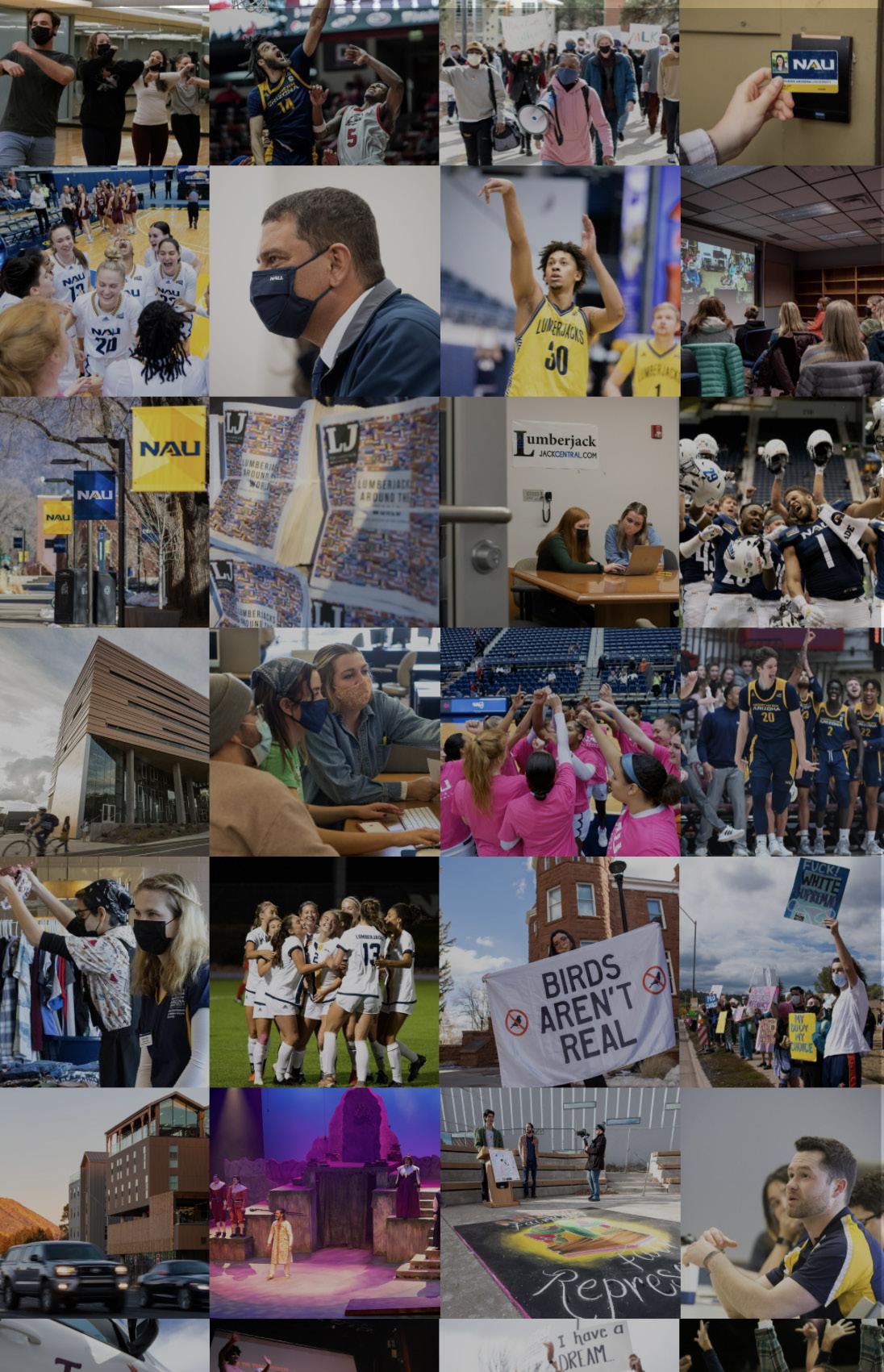Indigenous tribes should control public lands





to Columbus’ genocide and mass murder.”
On Oct. 10, protesters marched from the pedway outside University Union to Flagstaff City Hall in honor of Indigenous Peoples Day. Carrying signs and chanting, the protesters spread awareness for why they would not be celebrating Columbus Day.
An Indigenous Peoples Day was first suggested at a United Nations conference to address discrimination against Indigenous people in 1977. In 2021, President Joe Biden became the first president to give a proclamation in support of Indigenous Peoples Day and promote it becoming a national holiday.
Protesters showed up at the march wearing traditional Indigenous regalia and carrying signs reading “No pride in genocide” and “You are on native land.” Walking through downtown Flagstaff, the group chanted “Columbus Day has got to go” and “No cops, no KKK, no fascist USA.”
Freshman Nizhoni Thomas said her moccasins were uncomfortable but she did not mind marching in them because they represent her culture.
“It’s not Columbus Day to me, it’s more Indigenous Peoples Day,” Thomas said. “It’s remembering all of those who have passed due
Thomas lives in the new Indigenous Peoples’ LivingLearning Community on campus. She said she enjoys living with other Indigenous students who encourage and support one another.
For people who still celebrate Columbus Day, Thomas said they should do research and look into why so many people are choosing to only recognize Indigenous Peoples Day.

“It’s about remembering all of our traditions and all of our culture as a way to stay alive and as a way to tell people we’re still here,” Thomas said.
Once the group made it to city hall, NAU’s Indigenous Ambassador and senior Kaly Arvizu spoke first. Arvizu held a sign that read “T’ahdii kǫ́ǫ́ honiidlǫ,́” a Navajo phrase that translates to “We are still here.”
In the mid-1800s, the United States military forced Indigenous tribes off their homeland by burning down villages and slaughtering livestock. As military forces began to target the southwest, thousands of Navajo people surrendered and had to walk between 250 and 450 miles to the Bosque Redondo Reservation.
The phrase T’ahdii kǫ́ǫ́ honiidlǫ́” was used during the
Long Walk as motivation for Navajo people enduring abuse and enforced assimilation.
Arvizu said she was told NAU was not happy with her leading a march through campus. Although she was scared to get in trouble with the university, Arvizu said it was worth it for solidarity.
“[I was] told ... that it’s against the rules for me to organize a march on behalf of my people, on our day,” Arvizu said. “What kind of ambassador would I be if I didn’t advocate for my people?”
Furthermore, Arvizu said their identity as an Indigenous person will always come first.
“That’s what matters most, my Indigenous identity will also come before these colonial rules,” Arvizu said. “They didn’t want this to happen today, but we made it happen.”
After speaking, Arvizu offered the megaphone to anyone else who would like to share something. Coconino High School’s Native American Club President Heather Goldtooth spoke as well as others.
Once the speakers were finished, some protestors stayed to hold their signs outside city hall.
Indigenous jewelry, a cultural staple in many Indigenous communities across the United States, is popular among general consumers due to intricate detailing and cultural connections.
Recently, popular non-Native companies have profited off counterfeit products by using culturally relevant designs without proper accreditation or acknowledgment, which has taken business from Indigenous people selling authentic, hand-crafted jewelry items.
While Native American communities sell original pieces, many prominent non-Native businesses sell appropriations and lower-quality items at lesser prices to attract larger audiences.
Congress has acknowledged this practice, passing the 1990 Indian Arts and Crafts Act, which outlawed falsely advertising art pieces as Indigenous-made. Counterfeit Native jewelry is still produced in the masses, with the U.S. Senate Committee of Indian Affairs estimating up to 80% of Indigenous jewelry marketed as Nativemade is fake.
Often, major corporations will adapt traditional Native American styles into the clothing and accessories they sell. Indigenous jeweler Sahana Jackson said she often sees counterfeit products in her day-to-day life.
“It’s frustrating that people would spend hundreds of dollars on this ‘inspired’ look and not pay the people who created it, make it full-time and do it in their own homes,” Jackson said. “It’s not just a style, it’s a way of life. It’s the way we dress and it’s the way we adorn ourselves.”
Jackson is the owner and founder of Native Clay Co., an online store specializing in clay earrings designed with faux turquoise and tribal-inspired shapes. Starting production in Clarkdale in Yavapai-Apache Nation, Jackson uses her Afro-Indigenous heritage and Yavapai, Apache, Acoma and Hopi ancestry to inspire each of her unique earrings. Jackson said she is motivated by her family and knowing she is carrying on a generational practice.
DAISY JOHNSTONIf you had asked me my freshman year if I would be on the editorial board of the school newspaper, I would’ve been perplexed.
Writing has always been a hobby I love, and English classes always came easy to me for that reason. You might be asking, if it’s up my alley, why would I be perplexed?
Well, the truth is I have no idea what I want to do as a career. Everyone feels this way to a degree; after all, life is strange and inexplicable in many ways and no one has it all figured out. But for me, it is a dreadful, consuming thought I have on a regular basis.
I feel more confident in my knowledge about the journalism industry from working on The Lumberjack and my classes, but I have never been completely dead set on becoming a journalist.
My entire life I’ve done things that I’ve been told I am good at, and yes that validation is nice, but somewhere along the way, I get too overwhelmed by the pressure of those affirmations that I lose sight of why I’m doing it.
I’m not saying that journalism isn’t the route for me. Working for the paper for the past three semesters as both an editor and writer has been the most rewarding experience for me in my college career. Between gaining hands-on experience and making some of my best friends, I wouldn’t trade it for anything.
But, is being a journalist something I imagine doing for the rest of my life? Probably not. It is rare that you find people who want to do one career their whole life, and while I admire that, for my own overall success and happiness, I want to be challenged in many different areas and I’d like to think the sky’s the limit for what I can do — maybe not becoming a doctor considering I’m getting a degree in journalism, but you get the gist.
You would think with me being a junior, surely by now I would have it figured out. Yet, I am learning to not think in such a black and white mindset, and that it is OK for me to be discovering my path in life one day at a time.
But enough cliché stuff. Besides the looming weight of confining myself to a career and becoming a cog in the capitalist machine, I am pretty confident that wherever I end up, I won’t regret it.
In the end, the job I have now doesn’t have to be something I envision as a life-long path, but it is meaningful all the same.
Camille Sipple, Editor-in-Chief
Brenden Martin, Managing Editor
Emily Gerdes, Director of Digital
Content
Marley Green, Copy Editor
Lian Muneno, Director of Print Design

Lydia Nelson, Director of Marketing
Daisy Johnston, News Editor
Sophia Swainson, Assistant News Editor
Jorja Heinkel, Online News Editor
Xavier Juarez, Assistant Online News Editor
William Combs III, Senior Reporter
Jessie McCann, Opinion Editor
Maria Rodriguez, Assistant Opinion Editor
Hannah Elsmore, Features Editor
Brisa Karow, Assistant Features Editor
Emily Rehling, Culture Editor
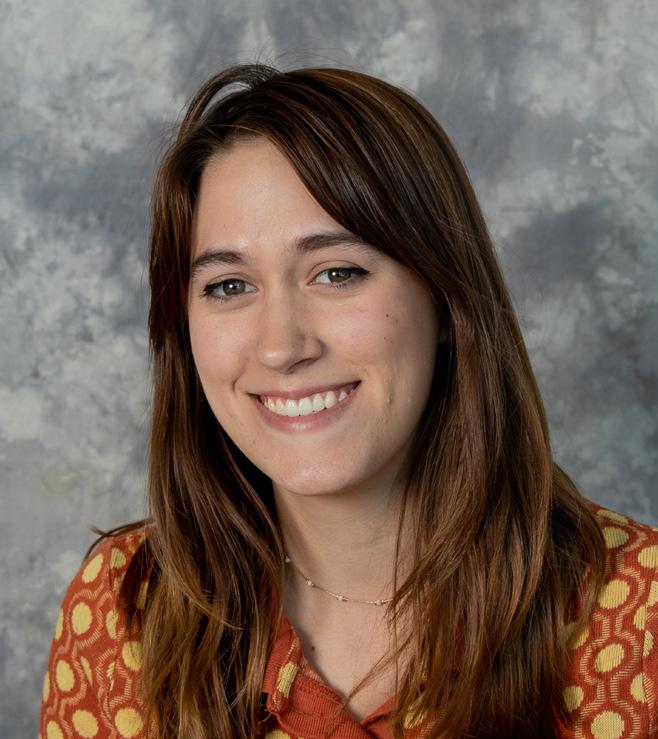
Emma Long, Assistant Culture Editor
Evan McNelia, Sports Editor
Noah Butler, Assistant Sports Editor
Tess Bandstra, Assistant Director of Print Design
Amirah Rogers, Director of Social Media
The Lumberjack
Jonah Graham, Director of Photography
Rainee Favela, Director of Illustration
Collin Vanderwerf, Director of Multimedia
Taylor McCormick, Assistant Director of Photography
Jacob Handley, Senior Photographer
Octavia Freeland, Senior Photographer
David Harpster, Faculty Adviser
Rory Faust, Sports Adviser
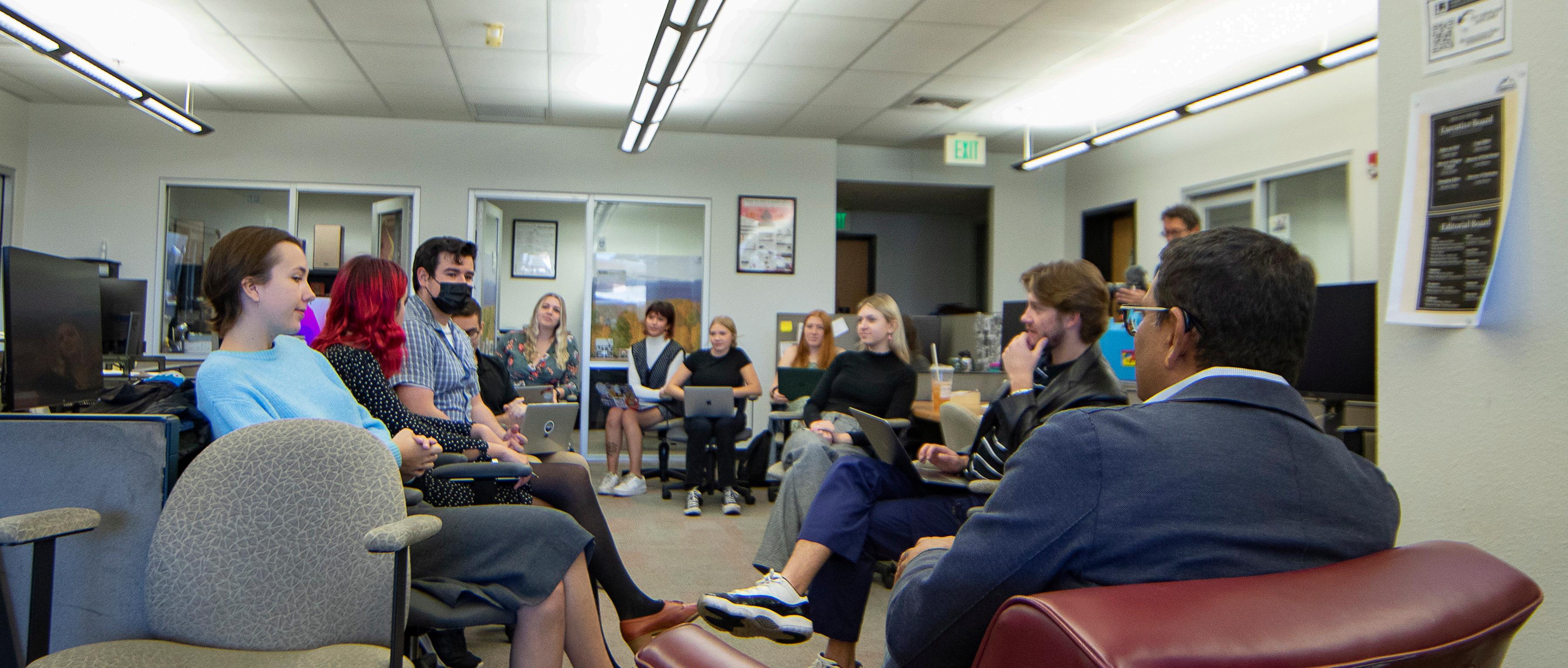
Volleyball

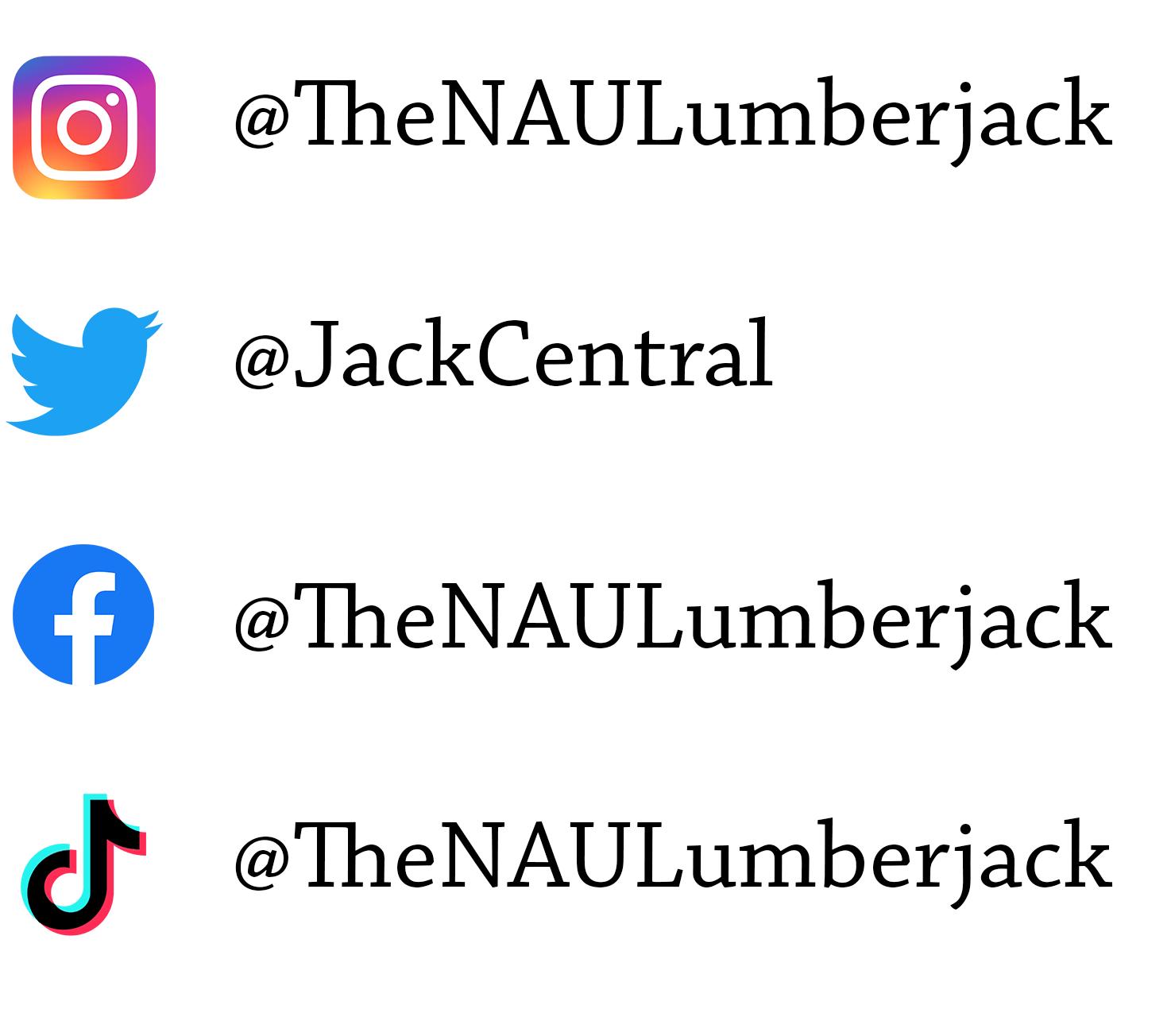
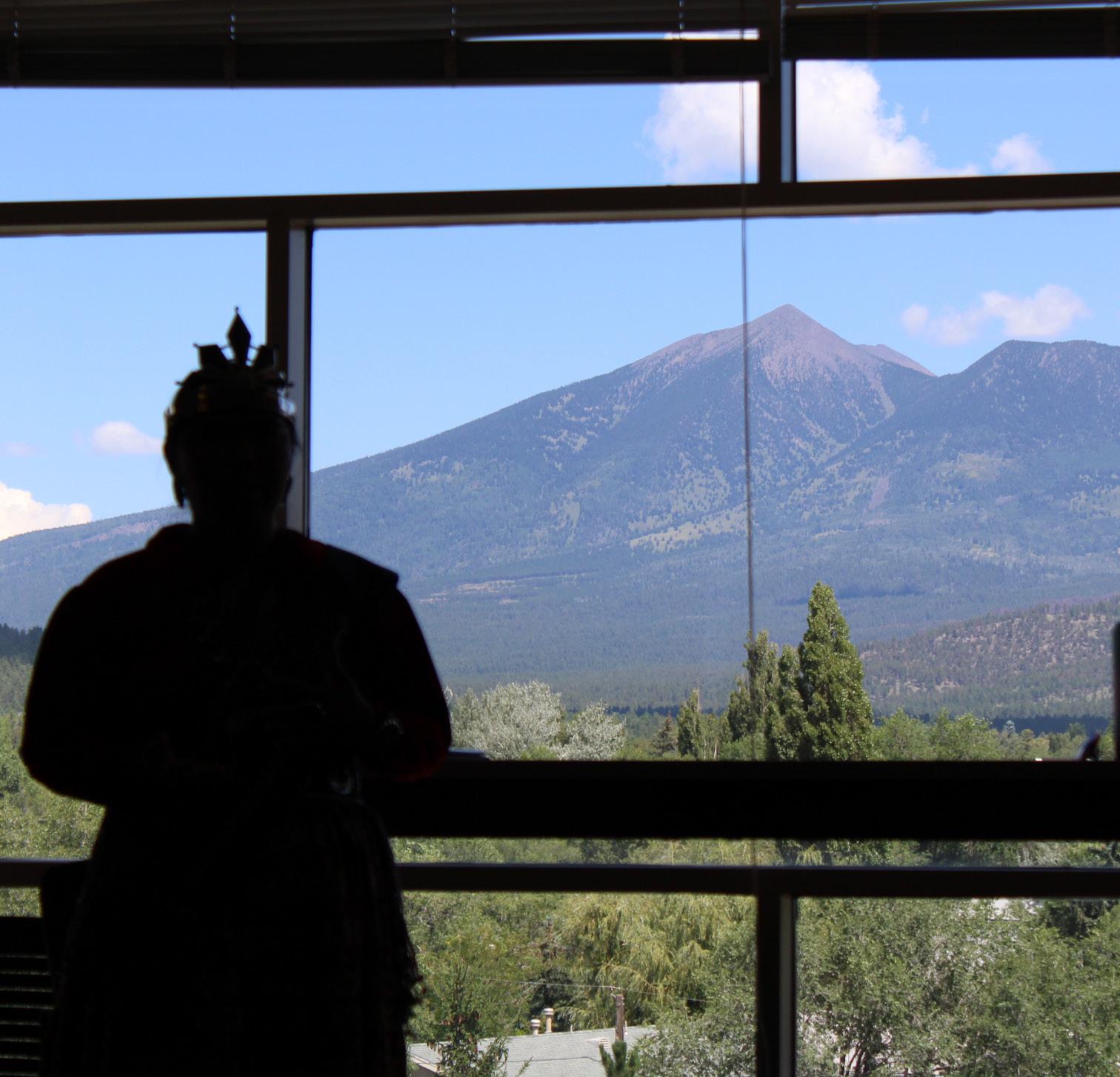
Oct 2.
At 1:35 a.m., a Tinsley Hall employee reported an intoxicated student. The student was transported to Flagstaff Medical Center (FMC) and deferred for minor in consumption of alcohol.
March 7
At 8:56 a.m., a student requested assistance outside McKay Village after falling on ice. NAUPD, Flagstaff Fire Department (FFD) and Guardian Medical Transport (GMT) responded. The student was transported to Flag staff Medical Center (FMC).
At 1:45 a.m., a non-student reported their motorcycle stolen outside The Suites. NAUPD responded and the case remains open.
At 12:54 p.m., a RA reported a “Mc Connell Hall” sign had been taken. NAUPD responded and later de termined the sign had already been found.
At 4:30 p.m., a parent called to report a student at Cowden Hall upset with not being able to leave school. NAUPD made contact with the student and they were well.
March 7
At 9:54 p.m., a student called to report underage drinking at SkyView. NAUPD responded, contacted subjects and the party was ended.
Oct. 3
At 8:56 a.m., a student requested assistance outside McKay Village after falling on ice. NAUPD, Flagstaff Fire Department (FFD) and Guardian Medical Transport (GMT) responded. The student was transported to Flag staff Medical Center (FMC).
At 1:12 a.m., a student called to request assistance moving a disabled vehicle near Drury Inn & Suites. NAUPD responded and provided assistance.
At 12:54 p.m., a RA reported a “Mc Connell Hall” sign had been taken. NAUPD responded and later de termined the sign had already been found.
At 6:43 p.m., NAUPD was asked to check on a student in Sechrist Hall. The student was contacted and found to be in good health.
At 10:27 p.m., a subject reported a Reilly Hall resident making suicidal statements. NAUPD responded, lo cated the student in good health and provided the student with a public assist ride to The Guidance Center.
At 7:15 p.m., a helpline reported a student in Sechrist Hall having suicidal thoughts. NAUPD responded and the student was voluntarily transferred to counseling services.
At 6:03 p.m., NAUPD received mul tiple fire alarm notifications coming from Mountain View Hall. NAUPD and FFD responded, the area was searched and determined the alarm was caused by a mechanical failure from a dryer. Fire Life Safety was no tified.
At 7:48 p.m., a student reported their roommates at The Suites were verbally arguing. NAUPD responded and took a report.
At 9:02 p.m., a student reported being assaulted by their roommate at the Ernest Calderón Learning Community. NAUPD responded and the students were separated for the evening.
March 9
At 12:20 p.m., an employee reported finding drugs in the University Union. NAUPD responded and entered the found drugs into evidence. A report was taken for information only.
Oct. 4
At 9:07 a.m., a student at The Suites called to report an injury. NAUPD responded and the patient was transported to FMC.
At 7:02 p.m., a Campus Heights staff member reported having constipa tion. NAUPD, FFD and GMT re sponded and the staff member was transported to FMC.
At 9:32 p.m., multiple vehicle owners were contacted and verbally warned to cease blocking the roadway at East Pine Knoll Drive and South Huffer Lane. The subjects complied.

Oct. 5
At 10:14 a.m., NAUPD reported a skateboard contact near McConnell Hall and a citation was issued for skateboarding in the roadway.
At 6:16 p.m., a student reported three vehicles stuck in the snow near the Skydome Practice Fields. NAUPD responded and assistance was provid ed. Facility Services was contacted to plow the roads and put cinders on the hill.
At 1:33 p.m., a non-student called to report a suspicious activity. NAUPD
At 10:53 p.m., an Allen Hall RA
reported a damaged ceiling tile. NAUPD responded and took a report.
responded and a report was taken for a hit and run.
At 9:14 p.m., an officer reported assisting FPD with a domestic violence call off-campus.
Editor’s note: This article is about a derogatory word used against Indigenous women and may be triggering to readers.
geographic feature anymore, therefore it was considered historical and deemed unnecessary to change.
Oct. 6
At 8:29 p.m., a Drury Inn & Suites staff member reported a male non-student asking for clothing. Offi cers responded and no criminal activ ity was witnessed.
At 6:09 a.m., custodial staff at the Performing and Fine Arts Building reported graffiti. NAUPD checked the area and witnessed no criminal activity.
At 12:04 a.m., a faculty member re quested a welfare check on a previous student. NAUPD was unable to con tact the subject and the requesting party was notified.
At 10:22 p.m., a McKay Village employee reported an alarm. The alarm was found to be malfunctioning and staff will handle it further.
Across the United States, 643 federal lands have been renamed to remove an American colonialist slur used against Indigenous women — “squaw” — from their titles. Arizona is home to 66 of those locations, which were renamed Sept. 8.
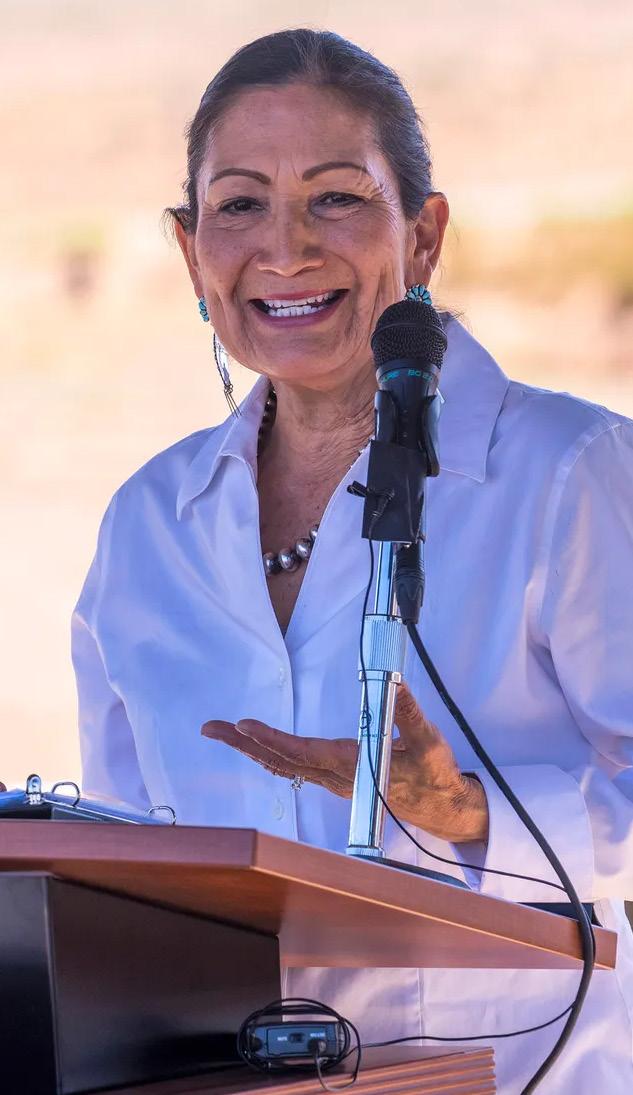
The term is translated in the Algonquian language as woman. Colonialists began using it in a derogatory way toward Indigenous women, turning the word into a racial slur.
“We know that it is deliberately meant to be offensive and hurtful toward Indigenous women because it refers to female genitalia,” Steele said.
Pima County Recorder Gabriella Cázares-Kelly spoke of her experience with the word and what this new bill signifies.
Oct.7
At 7:05 a.m., a student called to report threats and intimidation at Hilltop Townhomes. NAUPD responded and took a report.
At 11:11 a.m., NAUPD reported observing a vehicle violation off cam pus. A citation was issued for driving without a valid license, no valid reg istration and proof of insurance. The vehicle was towed for a mandatory 20-day impound.
Deb Haaland, U.S. secretary of the interior, instructed in November 2021 the slur be removed from all federal lands. Haaland is the first Indigenous individual to be a federal cabinet secretary. She directed the U.S. Board on Geographic Names to begin the process to remove the word from federal usage.
A bill was introduced in January by Arizona State Sen. Victoria Steele, who represents Legislative District 9 in Tucson.
“I constantly have to educate people about me and my community and Native Americans,” Cázares-Kelly said. “The change in language use is a small way to acknowledge that this word degrades women and sexualizes women.”
At 8:31 a.m., a Wettaw Building staff member called to report a suspicious person. NAUPD responded and assistance was provided.
March 14
At 6:58 p.m., a student reported a sus picious person in the area of lot 3C. NAUPD responded but no contact was made.
At 11:06 a.m., an officer reported assisting the Scottsdale Police Department with a suicidal subject.
March 15
“A lot of places are state land and are supposed to be places that are enjoyed and celebrated,” Steele said. “These are sacred sites that we share as people. There is no need to use our public land in a way that is offensive to Indigenous women.”
The Board on Geographic Names and the Derogatory Geographic Names Task Force opened up suggestions for new names to the public. The task force received thousands of recommendations and worked with almost 70 tribal governments.
At 5:01 p.m., a student at the San Francisco Parking Garage called to request assistance with a jump start. NAUPD responded and assistance was provided.
At 4:26 p.m., a staff member report ed graffiti on a blue light phone near Knoles and McConnell DrivesAt 4:44
At 9:26 p.m., a McConnell Hall community assistant called to report the odor of marijuana. NAUPD responded and one student received a referral for smoking marijuana on campus.
Oct. 8
At 12:32 a.m., a student at Allen Hall called to request an escort to Gabaldon Hall. NAUPD responded and assistance was provided.
At 1:29 a.m., an officer initiated a traffic stop at North Kendrick Street and West Butler Avenue. One non-student was cited and released for driving under the influence at 0.08 or greater.
At 7:37 p.m., a Reilly Hall employee called to report a smoke alarm going off in a dorm. NAUPD responded, no cause was found and the alarm was reset.
At 11:06 p.m., NAUPD initiated a traffic stop. One student was deferred for underage drinking, and two passengers were identified.
Steele’s bill was created after Haaland announced her secretarial order. It required all government lands with the slur sq*** in it to be renamed. The state bill never received a hearing.
Pedro Cuevas works for the Arizona Department of Education and specializes in ethnic studies.
“When someone of white superiority dehumanizes or demeans somebody, that is a way of continually oppressing them,” Cuevas said. “Of course the people that denied the bill are from the dominant culture, so they do not want to let go of their position of power.”
In Arizona, 66 of the 67 locations that used the word sq*** were officially changed on Sept. 8. The one that remained did not have a physical
Recommendations for name changes from the public closed in April. The task force reviewed all the names and by July 22, submitted the final list of choices to the Board on Geographic Names.
Following a Sept. 8 meeting — in which the list was approved by the board — the names were official for federal use and released to the public.
“Deb Haaland started a national conversation about this word and her leadership is really appreciated,” CázaresKelly said. “There is absolutely no reason why the federal government should use this word that perpetuates this racist, derogatory language.”
Haaland issued a committee to focus on the reconciliation of the word sq***, named the Advisory Committee on Reconciliation in Place Names. The committee is designed to recommend and propose changes of derogatory geographic names.
The committee has members representing Indigenous tribes, tribal organizations, Native Hawaiian organizations, backgrounds in civil rights or race relations, expertise in cultural studies and the general public.
“The loss of language, the loss of culture, the loss of land, the loss of tradition and all things tied to the Indigenous way of living has caused historical trauma that has impacted the Indigenous peoples all the way to their DNA,” Cuevas said.
According to the Arizona Mirror, many renamed locations were summits or reservoirs. Some new names were changed to represent nearby geographic features.
The list of all the previous names and what they were changed to can be found on the U.S. Board on Geographic Names
has led to some voter apathy in these communities.
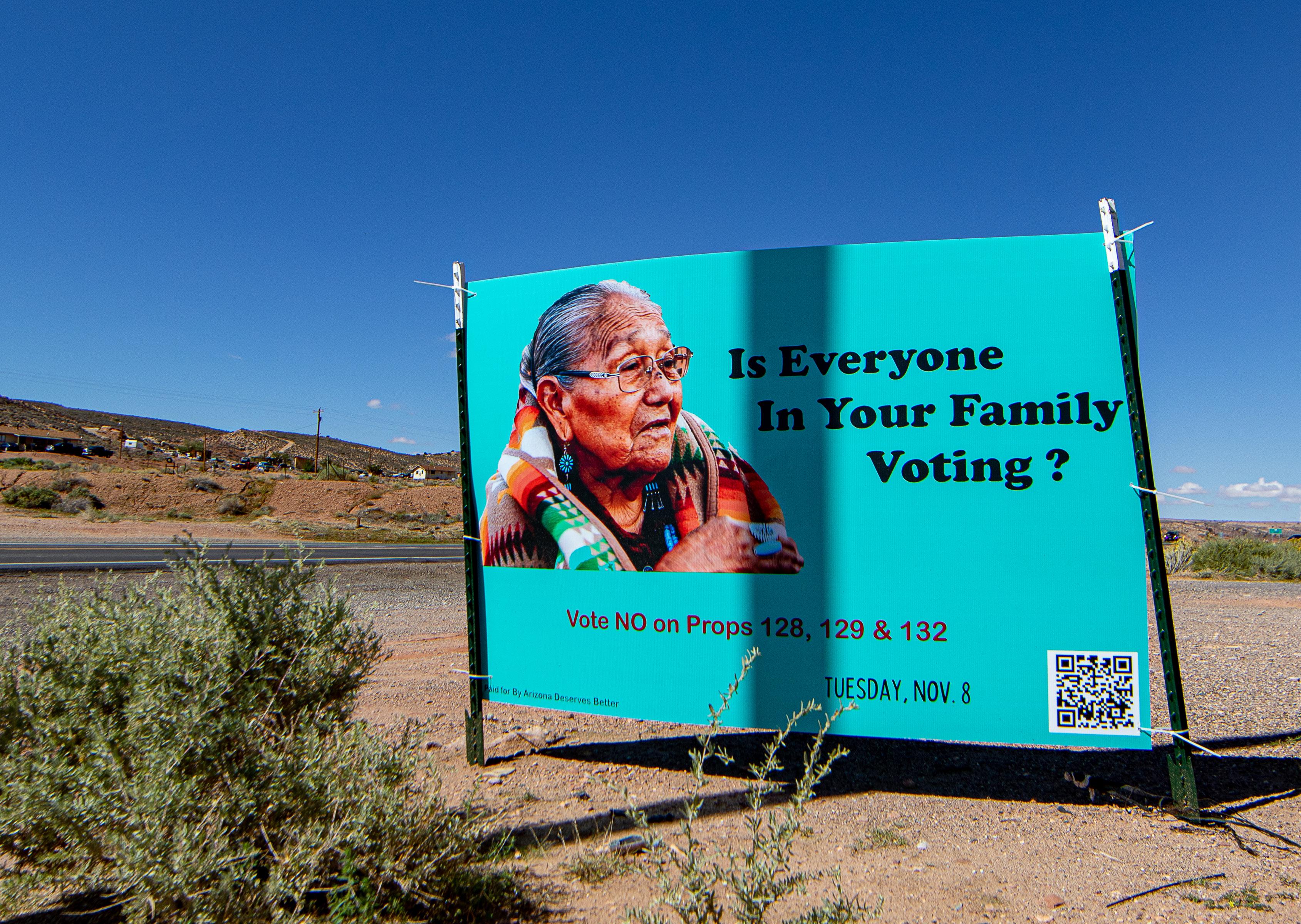
With upcoming midterm elections, organizers in Arizona are ramping up efforts to expand voting access to the Indigenous community — a key demographic that aided in Arizona’s political flip for President Joe Biden in the 2020 presidential election.
As of the 2020 census, Indigenous communities make up 6.34% of the total population in Arizona, amounting to roughly 450,000 people.
Out of the 67,000 registered voters in Navajo Nation in Arizona, 60-90% voted for Biden according to data
In the 2020 election, Arizona voters flipped the traditionally red state blue by a margin of around 10,000 votes — making the Indigenous vote a large decider of the upcoming midterms.
Wingbeat 88 is a nonpartisan community outreach organization which works on voter registration and Get Out The Vote campaigns in Navajo Nation within Coconino County. LivA’ndrea Knoki, executive director for the organization, said through its kinship initiative, Wingbeat 88’s goal is to be community oriented in its campaign approaches.
Knoki said the organization emphasizes healing and love in order to overcome generational trauma which
“As Indigenous people, we are dealing with generational trauma, systemic trauma,” Knoki said. “The eradication of our language and tradition has made it so we are still in the business of healing. We are trying to come together to heal, to understand our individual purposes and from that point forward go out and lead.”
Due to this sentiment within the community, Knoki said the organization’s voter campaigns are only a piece of the puzzle and its main focus is healing.
Wingbeat 88’s goal is to provide ownership for the voices of the Indigenous community, and bring action to their traditional values systems of knowledge, she added.
“I would say the Indigenous people are divided,” Knoki said. “Half are actively involved because they recognize that at least minimum participation provides you a sense of ownership of what’s happening in your surroundings.
However, there are a good portion of the Indigenous community who want nothing to do with colonial, institutionalized systems of government.”
Knoki said it is important to understand the history of these communities and to approach civic engagement initiatives with empathy.
According to the American Bar Association, despite the Indian Citizenship Act of 1924 recognizing Indigenous peoples as citizens of the United States, the Indigenous community has a history with voter suppression laws in Arizona. Up until 1970, Indigenous voters were required to perform literacy tests, and it was not until the U.S. Supreme Court upheld its ban on this form of voter suppression that it was revoked.
Kyle Nitchske, organizing director for the Arizona Students’ Association at NAU, said on top of this community’s history with the United States government, voter apathy is a problem that stems from a variety of factors.
Nitchske said regardless of voter demographic, when a sector of the public is uninformed about policy and how it can directly impact them, they tend to not go out of their way to vote in elections under the assumption that it would not benefit them. He said the problem is education and outreach.
“It is very clear how our vote can make a difference, particularly in our local elections,” Nitchske said. “Here in Flagstaff this year we have a housing bond, which if passed, will give us a load more money for affordable housing in the city. So your vote does really matter even if sometimes it seems it doesn’t.”
Nitchske said he understands where people are coming from when they do not vote based on “a broken system.” The Senate filibuster and system in which a minority can halt policy passed by the majority is a reason why some voters feel apathetic toward these institutions, he added.
In order to combat this issue, Nitchske said Arizona — and the U.S. as a whole — needs an active and engaged citizenry.
“We are only going to get out of this by educating and organizing each other, not just around elections, but year round,” Nitchske said. “We need people aware of what’s going on to have the tools to change the problems within our country.”
To find the closest polling location to you, visit the Arizona Voter Information Portal
“THERE ARE A GOOD PORTION OF THE INDIGENOUS COMMUNITY WHO WANT NOTHING TO DO WITH COLONIAL, INSTITUTIONALIZED SYSTEMS OF GOVERNMENT.”
- LivA’ndrea Knoki, executive director of Get Out The Vote in Navajo Nation
Organizers are ramping up voting efforts in Indigenous communities
A key part of what makes her art and Indigenous jewelry irreplaceable in comparison to larger corporations, Jackson said, are the ties it has to family and culture.
“I feel like, for a lot of Native artists, there is a deeper connection and meaning when we do and sell our art,” Jackson said. “It’s not just a craft that can be picked up. It’s really special.”
Because counterfeit jewelry is easier to access and often uses fake, cheaper materials, Indigenous jewelers receive fewer sales once their original artwork is turned away for alternatives.
Moreover, because authentic materials are more expensive, it is common for Indigenous jewelers to feel pressured into lowering their own prices. Odawa jeweler Caitlin Wright sells her jewelry in farmer’s markets.
“You often have to deal with people who aren’t a part of the culture or who don’t respect what you’re making saying ‘this is too expensive,’ and ‘I could get this somewhere else for half the price,’” Wright said. “I think it really affects self-worth having to always feel like you’re on guard and defend what you do.”
Wright, co-owner of Nagamokwe Creations in Negaunee, Michigan, said her Odawa heritage and
connection with the outdoors inspires the hand-made beaded earrings she sells online.
“Being able to create something and make some sort of living from it gives you this sense of independence and pride,” Wright said. “That also ends up being a reflection of pride in your culture and pride that you were able to learn these skills that were passed down to you.”
Furthermore, Wright said it is highly common for larger companies to purchase handcrafted jewelry from Indigenous artists only to resell it at a higher price without proper credit.
Jackson said she found this process to be eerily similar to historical colonization where white colonists stole Native American land swiftly and without mercy. Only this time, Jackson said, major Western companies are profiting off of art instead of land.
“It’s all under the name of ‘southwest-inspired,’ but really, that’s just a fancy way of saying ‘stolen,’” Jackson said.
Understanding cost is crucial as authentic jewelry will often have a price that matches its value as an art piece. Generally, Wright said, it is best to avoid buzzwords like “Native-inspired” and “tribal print” in favor of researching if and how Indigenous artists are involved in the sale.
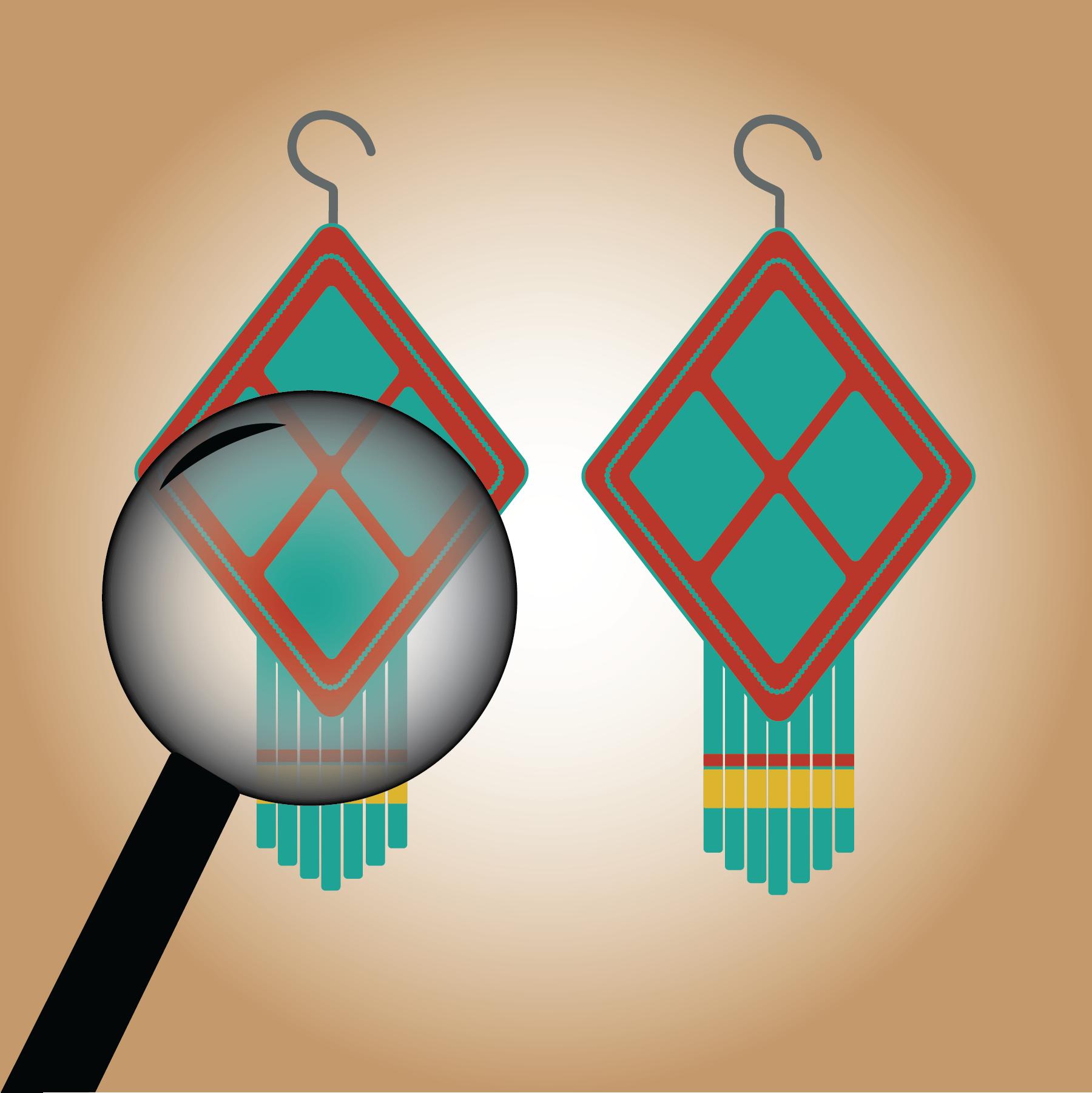
“Especially in Indigenous circles, this artwork is
a way we connect with our family and our history,” Wright said. “We tell stories through our art and we heal through our art. Whenever you go out shopping, it’s about looking for art that’s made by inspired Natives and not Native-inspired.”
There are many ways one can go about supporting Indigenous jewelers, with some of the most effective being buying directly from Native artists through online stores, flea markets and virtual marketplaces.
Arizona’s study committee on Missing and Murdered Indigenous Peoples (MMIP) resumed work in October to investigate violence against Indigenous people following a hiatus from the pandemic.
The study committe’s revival will expand the original 2019 MMIP’s work from missing and murdered Indigenous women to include men and LGBTQ+ people.
From October to December, the committee will gather information from families of missing and murdered Indigenous people. The committee will hold public recorded hearings in Chinle Nov. 10 for Navajo Nation families and survivors impacted by violence. Legislative work within the MMIP study committee is expected to begin in January 2023.
The study committee’s renewal coincides with Navajo Nation President Jonathan Nez’s Oct. 3 meeting with the Albuquerque FBI division. The meeting focused on data collection, communication and coordination efforts between Navajo Nation, the families of missing persons and the FBI.
President Nez asked the FBI to review its contact procedures with families of missing people, as family members often do not receive timely or adequate updates from the FBI.
“Over the years, we’ve met with many families who are frustrated with the lack of communication and findings,” Nez said. “There is room for major improvement and that’s what we communicated to the FBI during our discussion.”
On Sept. 24, Nez signed the Navajo Nation Council’s Comprehensive Budget to allocate an increase of $500,000 to the Navajo Nation’s missing persons unit. An additional
allotment of $500,000 was approved for the Proactive Criminal Enforcement Program inclusive of K-9 units, the Drug Enforcement Unit and field-operative police. The comprehensive budget was approved unanimously and took effect Oct. 1.
“The budget for the upcoming fiscal year supports many critical services and needs for the Navajo people and our communities, and builds on the progress being made,” Nez said. “It also makes additional investments in public safety, services for elders, to help find missing persons.”
The United States Department of the Interior reported approximately 4,200 missing and murdered Indigenous people whose cases have gone unsolved.
The murder rate for women living on reservations is 10% higher than the national average, constituting the third-highest cause of death for Indigenous women.
Over 84% of Indigenous and Alaskan native women experience violence in their lifetime, and over 56% experience sexual violence. Still, violent crimes against Indigenous women are reported to the police.
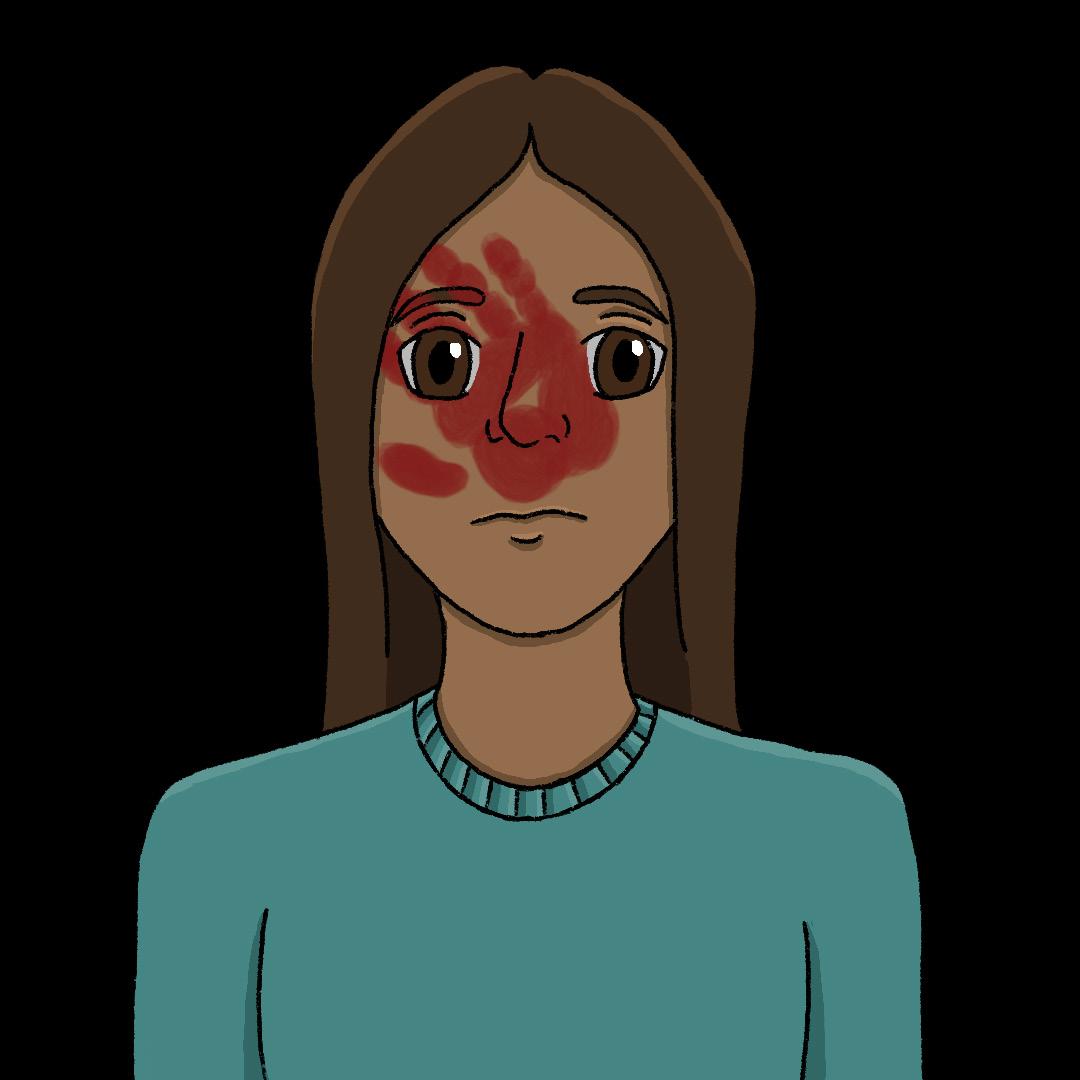
Indigenous missing persons are often misclassified in missing persons reports. Additionally, inconsistency in the federal missing persons database means the U.S. Department of Justice does not have a reliable annual count of missing and murdered Indigenous people.
The National Crime Information Center found of the 5,712 missing person reports in 2016 for Indigenous women and girls, only 116 of the cases were logged into the National Missing and Unidentified Persons System
Arizona has the third-highest rate of missing and murdered Indigenous people in the U.S., following New Mexico and Washington. Tucson has the highest number of missing and murdered Indigenous people in Arizona and the fourth highest number in the U.S.
In 2020, ASU conducted a study committee on missing and murdered Indigenous women in Arizona. The study reported 160 murders of Indigenous women in Arizona from 1976 to 2018. On Sept. 13, the FBI released the names missing Indigenous people from Navajo Nation
President Joe Biden said in a May 4 press release the safety and well-being of all Native Americans is a top priority.
“My administration is fully committed to investigating and resolving these cases through a coordinated law enforcement response, as well as intervention and prevention efforts,” Biden said.
In November 2021, Biden said his administration would be implementing the legislature of the 2020 Savanna’s Act and the Not Invisible Act of 2019 to provide important provisions for law enforcement and data access for missing and murdered Indigenous people.
The acts were created in response to the MMIP study committee’s efforts and a 2018 study from the Urban Indian Health Institute that found nearly twothirds of all police agencies surveyed did not provide requested evidence or offered only partial data with costs. Out of the 71 police agencies surveyed, 13% charged fees up to $4,464 for data access – including the Flagstaff Police Department.
“For far too long, justice has been elusive for many Native American victims, survivors and families,” Biden said. “We must continue that work on Tribal lands, but also build on existing strategies to identify solutions directed toward the particular needs of urban Native Americans.”
In Nez’s meeting with the FBI’s Albuquerque division, the Navajo Nation Chief Prosecutor Vernon Jackson requested the FBI to turn over evidence of unprosecuted crimes regarding Indigenous people. With evidence, the Navajo Nation will be able to pursue charges at a tribal level rather than a federal level.
“We have to continue working through the issues step by step and using the resources that we have to locate missing persons,” Nez said. “The Navajo Nation continues to prioritize efforts to bring more of our missing relatives home to their families.”
A list of active missing and murdered Indigenous peoples cases can be found at the U.S. Department of the Interior
On Oct. 8, people of all ages gathered outside Flagstaff City Hall to protest restrictions on reproductive rights as well as promote awareness of the upcoming November midterm elections. Many members of the crowd had walked from the University Union to city hall that afternoon in order to spread their voices across both the campus and the community.
Those within the rally hoisted signs that read, “Bans off our bodies,” “Hands off my uterus” and “Pro-women, pro-choice.” Several of those who helped organize the rally led the crowd in chants of “Abortion is healthcare” and other phrases. Armed with homemade signs and loud voices, community members stood along Route 66, garnering honks and shouts of support from passing vehicles.
Samantha Troi made the drive to Flagstaff from her home near the Grand Canyon in order to show her support and voice her anger.
“You find your community where you are,” Troi said. “If you live close to it and this matters to you, make your voice heard. The more people who are out here, the more we all feel heard and safe and seen.”
Having been in the abortion rights fight for years, Denbie Nash said she had hoped the issues of reproductive rights and abortion legality would have been resolved by now, but also said she will continue to show her support as long has she has to.
“I thought we were through showing up for this issue,” Nash said. “It’s really heartbreaking and I really worry about all the women here and what’s going to happen. We have to come together and quit doing this male, female, us against them. Abortions should be a personal choice. So I’ll keep fighting!”
By attending the rally and making her voice heard, senior Alyssa Feipel said she is hoping to make federal waves within the United States, not just in Arizona.
Feipel said she hopes to see changes within federal law that safeguard reproductive rights rather than solely placing those decisions upon state governments.
“My mom and grandma are also here [at the rally] and they had more rights than I do now, which is kind of sad,” Feipel said.
Sophomore Lindsay Mauss said she is especially angry because she, and other women who suffer from similar disabilities as her, are disproportionately affected by abortion bans or any laws that limit reproductive rights.
“As a woman who has a disability that impacts my reproductive system, I wouldn’t know necessarily if I was pregnant until potentially multiple months in, so it affects me in a different way,” Mauss said.
If she was able to speak directly to Gov. Doug Ducey, Mauss said she would have several choice words for the governor regarding reproductive rights.
“I would tell him [Ducey] that he’s an absolute idiot if he thinks that we’re not going to protest or that the majority of Arizonans agree with him and his opinions of abortion,” Mauss said.
Troi echoed Mauss’ sentiments and said she urges Arizona legislators to listen to the popular opinion.
“Most people believe that it should be a choice between a woman, her family, her friends or her doctor,” Troi said. “Government shouldn’t be a part of it.”
Bob Tures explained that he believes this year may hold one of the most important

midterms he has seen in his lifetime.
“What’s at stake is choice,” Tures said. “Freedom!”
The concept of choice, and the ability to remove that choice, Tures said, is fundamental to aspects of male domination and innate masculine power.
“Nobody asks ‘his body, his choice?’” Tures said. “It’s not even a question, I personally think we need full gender equality.”
At 2 p.m. the crowd gathered in a semi-circle to listen to the rally’s speakers.
Jasmine Viehe kicked off the speaking portion of the rally.
“This summer we lost our right to abortion healthcare in Arizona,” Viehe said. “We lost our right to bodily autonomy. We lost our right to privacy!”
Viehe continued her speech by informing protesters of the recent, though temporary, halt on Arizona’s abortion ban.
As of Oct. 7, the Arizona Court of Appeals had placed a temporary hold on the territorial law which banned nearly all abortions in the state, according to a recent article from the Arizona Republic. However, the court’s decision does not alter the previous Arizona law that bans abortions once an individual reaches the 15-week mark of their pregnancy. This law remains in effect as the court continues to attempt several alterations concerning Arizona’s state policies in regards to reproductive rights.
“Last night the Arizona Court of Appeals temporarily blocked enforcement of the state’s territorial era ban,” Viehe said. “And that’s because of us! That’s because for the last year, we have been showing up here, at this corner, protesting.”
Katie Cottrell, an organizer with Mission for Arizona, also spoke at the Oct. 8 rally and voiced her concerns with the current U.S. legislation on reproductive rights.
“It still makes no sense to me that nine people in Washington D.C. [U.S. Supreme Court Justices] can tell me what me and my uterus can get up to,” Cottrell said. “And it also doesn’t make sense to me that a lot of those people don’t have a uterus themselves.”
Many of the speakers, alongside Cottrell, urged those at the rally not only to vote but to encourage their loved ones and community members to cast their votes as well.
“This right here is democracy,” Cottrell said. “The hundreds and millions of people who vote every year? That is the most sacred part of democracy and it seems like a lot of people have lost hope for it. What I will tell you is that your vote is your voice.”
Throughout the afternoon, Nash said she observed only a few negative responses from vehicles or passersby. Overwhelmingly, the turnout and community response remained positive, she explained.
“It’s been real exciting and I think the majority of people support this,” Nash said. “We need some kind of legal, safe abortions. I mean, I was alive when they were using coat hangers! It was awful. And people, have they forgotten?”
From chanting and shouting to vehicles passing by, to voicing support to the rally’s speakers, there was ultimately an outpouring of emotion from the Flagstaff community, both young and old.
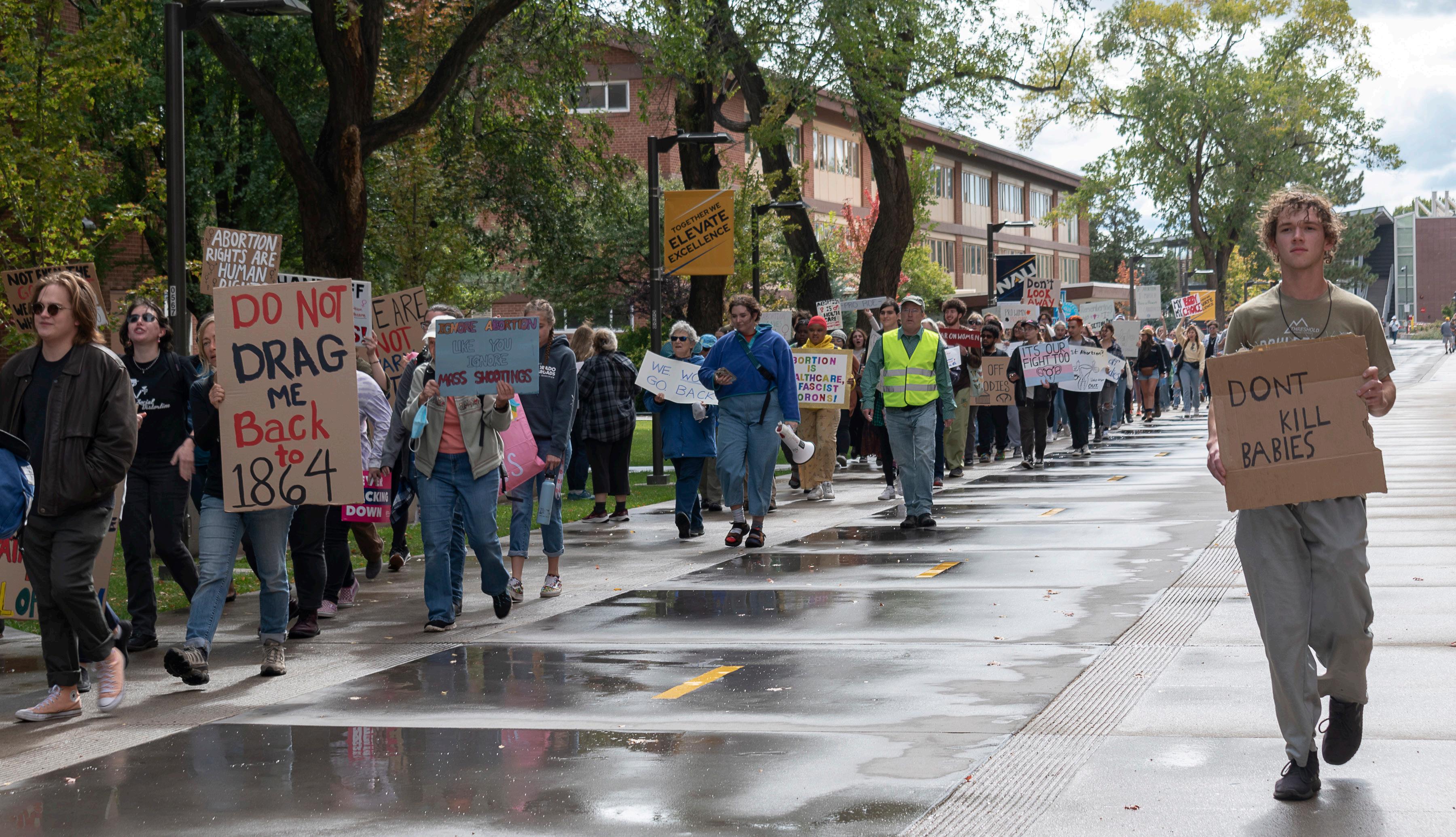
anthropocentrism, human-focused. In the age of climate change, this is needed now more than ever.
Indigenous culture has deep roots in music, with many tribes using singing, dancing and performing to tell stories, worship and communicate spiritual and cultural values. This practice has been passed on for generations and influenced some of the music we hear daily.
Unfortunately, Indigenous people do not get proper credit for their influence on American music culture.
For millennia, Indigenous peoples in so-called America were able to live off the expansive landscape. This created a harmonious relationship between people and the land. Since colonization, however, this harmony was replaced with Eurocentric domination and destruction.
At the structural level, many do not realize that the 1.8 million acres of Coconino National Forest surrounding Flagstaff are not within the Department of the Interior. The Forest Service, controlling 32% of federal lands, falls under the Department of Agriculture. This means that trees, which are instrumental in fighting climate change, are seen as a crop. This is a testament to the systemic attitudes surrounding land in the United States.
Many tribes that originated in the eastern part of the country were forced to relocate to the west. With these new lands came unfamiliarity with the local flora, fauna and climate. This further increased the difficulty put upon the people already forced into reservations. Giving them full access and control of public lands would allow tribes to exercise their traditions.
LISA HALL OPINION WRITER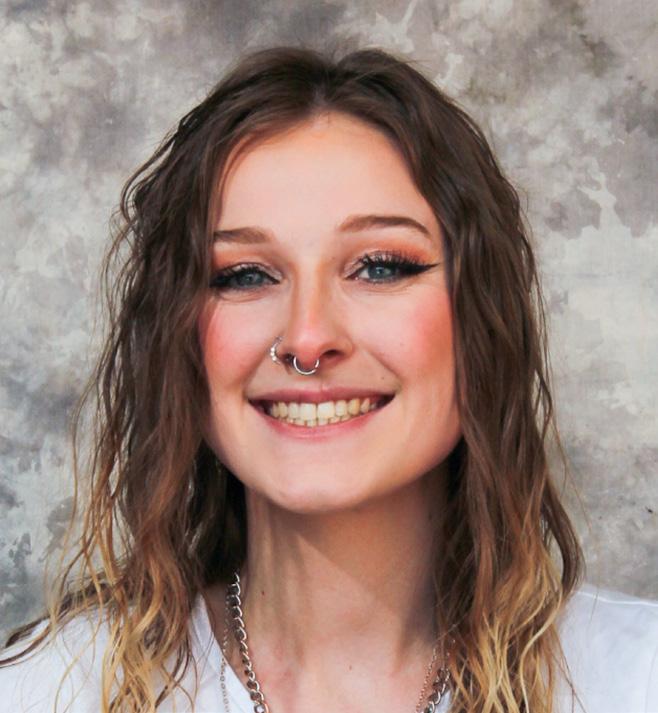
The songs traditionally performed in Indigenous communities contain symbolism for discussing topics, rather than speaking outright. Examples of this in American music culture appear within different genres such as folk, rap, pop and hiphop, where sexual themes are present but not directly stated. Hit songs such as “Whistle” by Flo Rida or “Lolly” by Maejor Ali are examples of this type of symbolism.
Indigenous culture has heavily influenced the backbone of most songs, with elements such as the drum beat and rhythm. The influence of vocables, or nonsense words in American pop music, is noted in songs such as “Zip-A-Dee-Doo-Dah” from the movie “Song of the South,” where the vocables are in the title and chorus.
There is not enough homage paid to Indigenous communities for their influence in helping create music as we know it.
The movie “Rumble: The Indians Who Rocked the World” discusses Indigenous history and the role it plays in shaping modern music. Musicians such as Jimi Hendrix, Link Wray and Mildred Bailey were all featured in the film for their Indigenous backgrounds and influence on rock and jazz.
The movie highlights how jazz music was influenced by ancient Indigenous styles of playing instruments and singing. The film delved into Hendrix’s Indigenous background; he invented new possibilities for the electric guitar by creating combinations of controlled distortion that helped form a new style. His Cherokee background influenced his persona.
Rhythms in jazz music are extremely similar to that of Native American music, with there being four beats to a measure Yet, jazz music is credited to the Black community. There is no doubt that Black people impacted the creation of jazz, but there is plenty of evidence supporting Indigenous influence as well.
The history of jazz ignores their influence and does not properly acknowledge the tribes, including Cherokee and Choctaw, that helped bring this genre to prominence in countless other music styles.
Indigenous culture influenced the instruments still used in modern music today, like the first flute If not for Native instruments, Lizzo would not be the iconic flutist she is today.

To not validate what Indigenous culture has brought to modern music is to completely ignore an entire part of our musical history.
American colonizers invaded Indigenous land, and their impact has been minimized through the erasure of their presence from history into modern times. This erasure encompasses everything, including its influence on modern music. Had Indigenous people not been shoved to the side, their influence may have been more recognized.
By learning the history of Indigenous people and their deep roots in music, we can understand the major impact they have had on music today. They gave us instruments, inspired symbolism and showed us rhythm, and it needs to be appreciated.
While the Forest Service’s attitudes are outof-date, the majority of federal lands are under a different department. The Department of the Interior oversees the National Park Service, Bureau of Land Management, Fish and Wildlife Service and more. While they are home for national parks, that does not exclude them from environmental destruction.
Yosemite National Park, one of the most famous in the country, is also home to an act of complete destruction. The park itself was founded in 1890 and, in 1913, the federal government ordered a dam built in the park's Hetch Hetchy Valley, drowning it all under hundreds of feet of water.
Closer to Flagstaff, the Forest Service has a history of controversy surrounding Arizona Snowbowl. The most well-known dispute is the use of reclaimed wastewater to make snow on the San Francisco Peaks. The 13 tribes that find the peaks sacred believe the snowmaking desecrates the mountain. The reclaimed wastewater also goes directly into the aquifer that feeds Flagstaff’s water supply.
Finally, across the country, there was the century of fire suppression brought about by policies that declared war on wildfires. Creations of this era include Smokey Bear and the “10 a.m. policy,” a regulation whereby wildfires were to be extinguished by 10 a.m. the morning after they were initially reported. These policies led to immense fuel buildup in forests, which, when combined with climate change, caused the megafires we are seeing throughout the American west.
The situation has been looking better recently with the appointment of Deb Haaland, the first Indigenous individual to hold a cabinet secretary position, to lead the U.S. Department of the Interior. Under Haaland, Bears Ears National Monument was restored and is now co-managed by tribes in the first deal of its kind. Additionally, under her leadership, the federal government investigated the true effects of the Indian boarding school initiatives, including over 500 deaths in a preliminary report.
While Haaland has been shifting the department’s priorities, she cannot change the fact the department itself has unfixable flaws, federal lands are still prone to abuse and are restricted to tribes unless they have a treaty that says otherwise
The Department of the Interior and Department of Agriculture should step aside and let tribes take control of public lands.
Switching lands to tribal control would create a paradigm shift. Tribes would be able to have greater control over their traditional ways of life that were taken from them. For everyone, the management worldview would be focused on ecocentrism, nature-focused, rather than
The #LANDBACK campaign is centered around the Black Hills of so-called South Dakota, where the Oceti Sakowin, a gathering of tribes, and the federal government signed the two treaties of Fort Laramie in the mid-1800s. The treaties reserved the Black Hills solely for the tribe’s “absolute and undisturbed use and occupation.” In 1977, the U.S. government took the land by force anyways, eventually creating what is now known as Mount Rushmore.
A 1980 U.S. Supreme Court decision ruled the U.S. violated the treaty, and the government offered what is now equivalent to approximately $2 billion. The Sioux Nation of Indians has never accepted the money, because the land was never for sale. The only reparation for stolen land is land. Similar stories are found throughout the country
Indigenous tribes would provide powerful insight and implementation for priority in all living beings. While tribes are beginning to contribute through advisory boards, it is still just one avenue in the traditional structure. Their knowledge and worldview should be the standard for public land management.
A new benchmark would create the foundation for climate resilience and would recognize the role public lands play.
Indigenous people have been at the forefront of fossil fuel infrastructure resistance. Pipelines such as Enbridge’s Line 3 and the Trans Mountain Pipeline are infrastructure that would lock in fossil fuel use for decades when these projects should be scaling back. They also open up vast areas to oil spills that previously didn’t have that danger.
Climate change is affecting wildlife and, in turn, the traditional lifestyles of tribes. Traditional lands are changing, and younger generations are leaving. These changes and departures block the transfer of traditional knowledge. Many languages and cultures have already been lost to genocide, loss of land and climate change.
Traditional knowledge is tied to place, and this knowledge is the key to climate resilience. Indigenous solutions to managing land have been known for millennia but have been ignored by people and the government. It is time to give them the power and resources to let them enact what is best for their land.
#LANDBACK would affirm the rights of tribes and Indigenous people and create sustainability and climate resilience opportunities. The benefits of allowing tribes into our systems are recognized, so let’s keep going.
Many people love skiing and snowboarding in Flagstaff, but at what cost?
Arizona Snowbowl is a ski resort in Flagstaff located on the western slope of Mount Humphreys in the San Francisco Peaks. Most consider it to be a fun place to visit for activities like skiing and snowboarding, but there is a lesser-known greedy side to Snowbowl.

These peaks happen to be sacred to many Indigenous people in the area, specifically the Hopi and Navajo tribes.
The peaks, or as the Hopi call them, Nuva'tukya'ovi, have been sacred for thousands of years to Indigenous people. They have spoken up about the mistreatment of the mountain for decades, including harmful activities like creating fake snow with reclaimed water, but unsurprisingly, Snowbowl management doesn’t care.
As known all throughout history, non-Indigenous people have mistreated and profited off of Indigenous practices and places, and this is no different.
Indigenous communities have been trying for years to shut Snowbowl down because of all the harm it has caused. Not only can the Hopi not practice free religion on their land at Snowbowl, but the reclaimed water is desecrating their sacred land.
The snow is not as natural as some may think. It is made by a machine, and instead of using fresh drinking water, they use reclaimed wastewater to make the snow. Reclaimed water is wastewater that has gone through a process of recycling to be used for a variety of purposes; some of these uses include watering grass, which is a practice used at NAU.
Nowadays with rapidly increasing temperatures, it is common for ski resorts to make fake snow to keep
up with high demand. But Snowbowl differs from others by not having a water treatment plant in the San Francisco Peaks. The resort alternatively relies on a sewage treatment plant. They treat the water at the sewage treatment facility and then pump it to create snow. The water used to create the artificial snow is not for consumption, as reclaimed water has not gone through safe drinking regulations.
However, this is not a new practice for Snowbowl. The resort began using reclaimed water in 2012, because it wasn’t snowing enough and producing fake snow extends the skiing season by around 150 days each year
The snow made from reclaimed wastewater isn’t good for anyone who participates in Snowbowl's snow activities. Although signs around the resort warn people about eating the snow, children will do it anyway. Ingesting reclaimed water can cause sickness in anyone and should be avoided.
As if taking the sacred mountain wasn’t enough, Snowbowl spews wastewater all over the mountain, killing native plants and polluting sources of freshwater
Over the past decade, Snowbowl has polluted the mountain with over 1.5 million gallons of treated sewage water a year, and this number will only increase thanks to climate change.
Not only is Snowbowl undermining Indigenous people, but it is also harming the natural environment. Plants and animals that live on the mountain are now either being relocated or dying because of the toxic water they are ingesting.
Indigenous people have not let this go unnoticed, and a few years back, the Hopi tribe filed a lawsuit against Snowbowl for its treated wastewater damaging the peaks. In this lawsuit, the Hopi stated
that Snowbowl using the mountain violates their first amendment rights to freely practice their religion. The tribe sadly lost the lawsuit, with the court saying there wasn’t enough evidence that the wastewater was damaging.
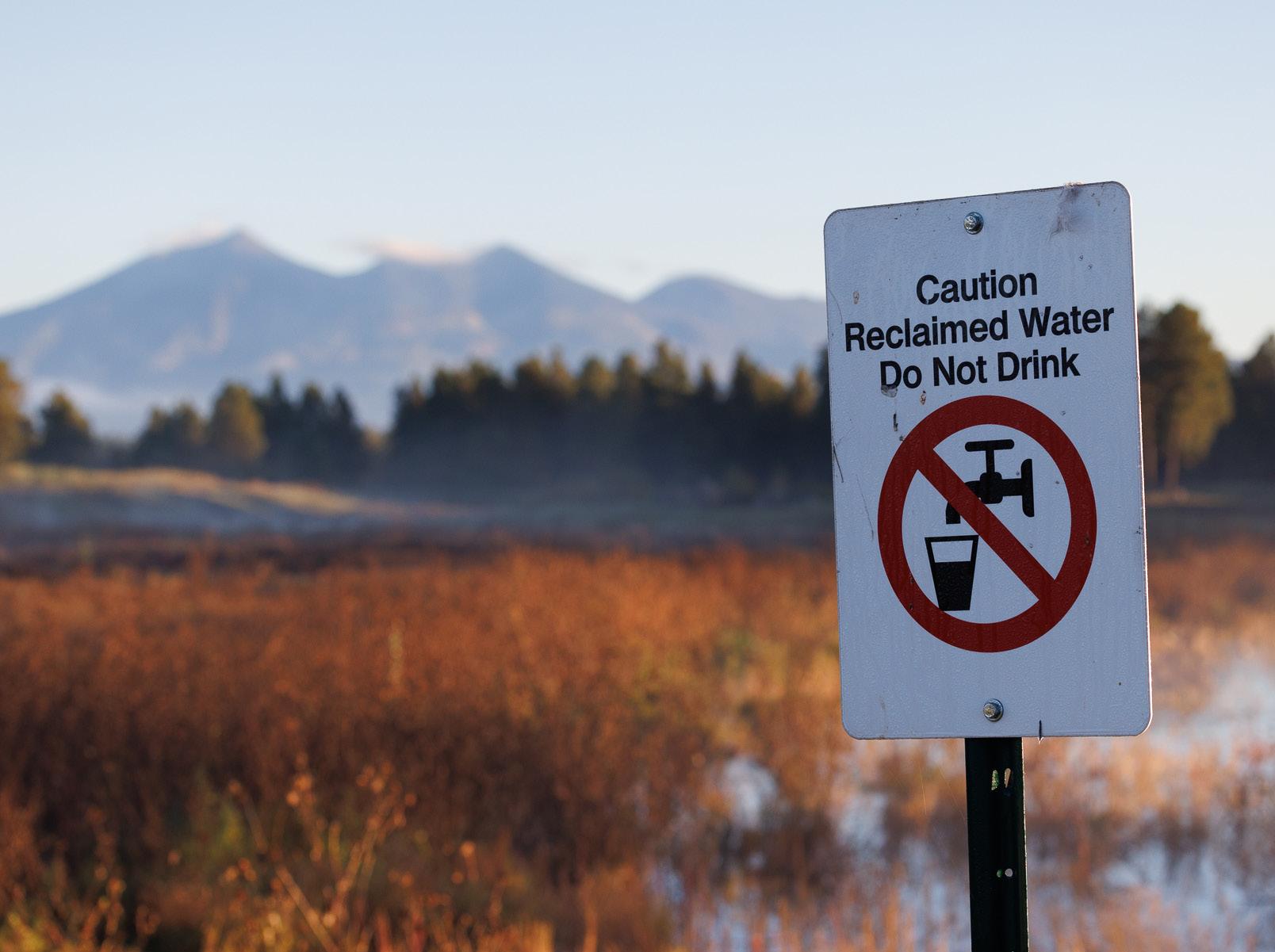
Only recently, Native peoples were allowed to practice their religion, with the American Indian Religious Freedom Act making it legal in 1978
But now, it feels like the government is going back on its word because it won’t shut Snowbowl down.
Indigenous cultural practices are varied from one another and unique to the rest of the world. Therefore, it is difficult to make a comparison to non-Indigenous practices. If such a comparison could be made, the Snowbowl issue may be similar to if someone wanted to take a holy space like a church or temple, trash it, charge money to enter and disrespect it. The mountain is a sacred place for Indigenous people to practice their culture.
The Hopi tribe said since the mountain is so trashed and disrespected, their prayers don't feel sincere because of what people have done to it — their rituals also feel pointless. If the land of the people is unable to be used for practicing their religion, it goes against the First Amendment.
The tribes have not given up and will keep fighting for their religious freedoms through their protests near the mountains in efforts to inform people about the harm of Snowbowl.
Amplifying Indigenous voices to show support is more important than ever, as not enough people are aware of this detrimental issue. Individuals need to stay informed and not make the situation worse by giving money to Snowbowl.
With the rise of New Age spirituality comes more than a seemingly inclusive space for people to “find” themselves. There is a large amount of appropriation that results from this trend.
The impersonation, primarily of Indigenous cultures of Latin and North America, is not new. It gained popularity in the '60s when young white people began to rebel against an institutionalized society and wanted to try a new way of life.
One of the first charlatans to embody this movement was Carlos Castaneda. His 1968 book, “The Teachings of Don Juan,” was an account of his experiences with a spiritual guide, Don Juan, from the Yaqui tribe. Many people believed this story to be true; however, Don Juan was a made-up shaman. Castaneda persuaded people to join him on a journey of the wisdom he obtained from the fictional man. Casteneda, of course, immensely profited from his following.
There are others like Castaneda who have lied about their spiritual intelligence or used it in a deceptive and selfish manner. Some may use Indigenous culture and spirituality to gain attention, make money, or “improve” themselves.
While not all people have these negative intentions, it is important to be aware of entitlement or ignorance that leads to appropriation and misrepresentation of Indigenous traditions. Unfortunately, many people are not conscious of their actions.
While living in Sedona for a few years, I noticed many white people using Indigenous traditions to form their own spirituality and profit it. The individuals I encountered were mostly from middleclass, affluent towns in California, the Midwest and East Coast.
I saw people selling entries to their version of traditionally Indigenous ceremonies and gatherings — for example, drum circles, cacao ceremonies and
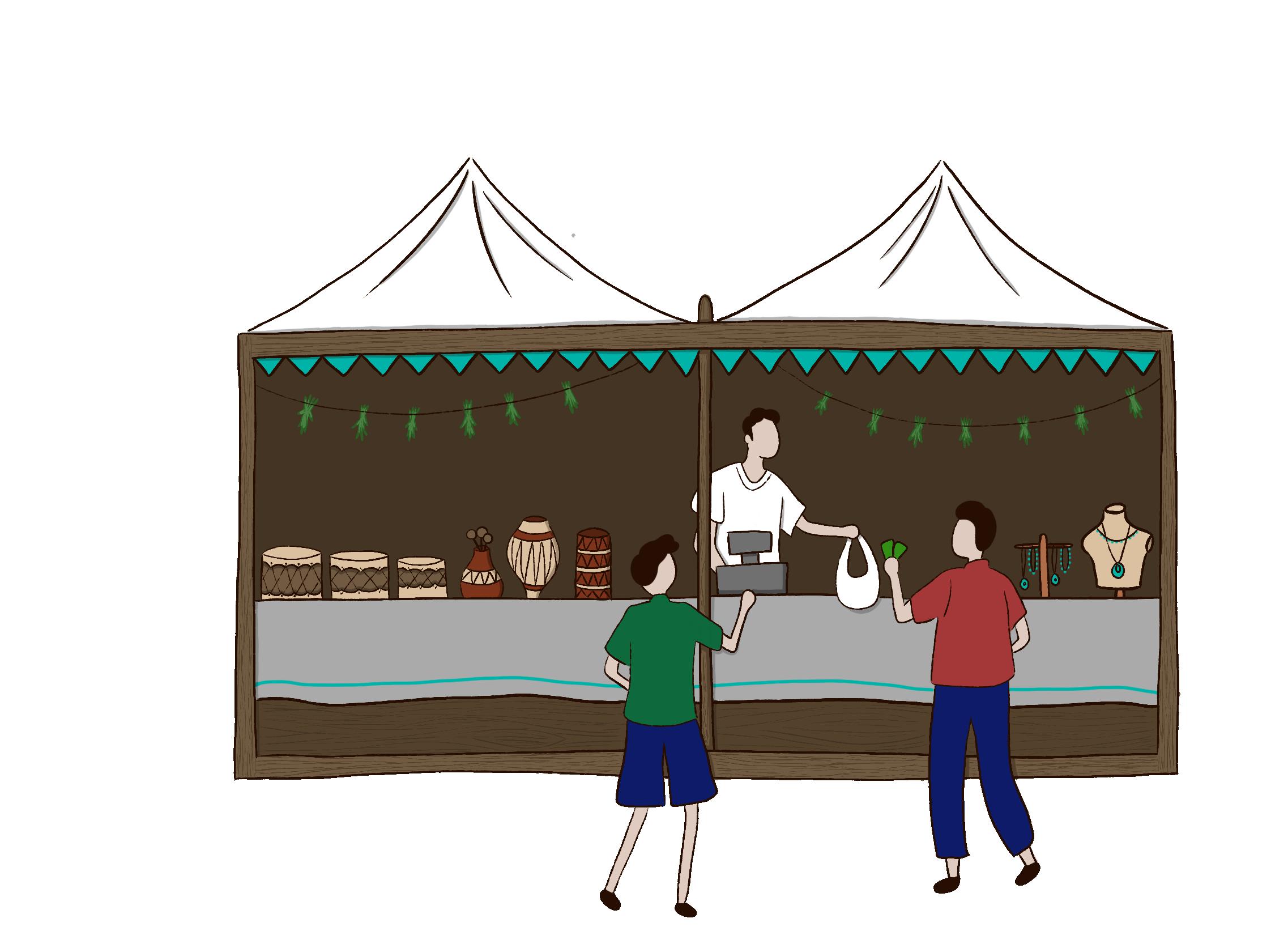
teachings of their culture. The ones that do are often looked upon scornfully by their community.
Some other examples of this whitewashing and appropriation are seen in the excessive use of sage, ayahuasca, peyote and hape. All of these substances are historically sacred sources in Indigenous spirituality. The excessive use of them has increased prices and decreased resources for Indigenous people to practice their own cultural heritage.
White Americans have especially gained interest in ayahuasca, a psychedelic meant to be used sparingly and respectfully in an intentional space, in order to reach their own spiritual and mental goals. Excessive use makes it easy to forget that ayahuasca originates from Indigenous cultures in South and Central America, and reduces the significance of this practice. The romanticization of ayahuasca takes away from the fact that Indigenous people have endured much discrimination and do not just exist in a world of spiritual ecstasy.
Evgenia Fotiou, an anthropologist, has dedicated her career to studying appropriation of Indigenous culture.
“This one-sided romantic image [of ayahuasca] hides the complexity of Indigenous’ peoples’ situations by erasing the injustices that they have experienced and continue to experience,” Fotiou wrote in a 2016 peer-reviewed journal article
I knew people who prided themselves on being “sober” but would then tell me they had been taking ayahuasca every day for the past three weeks. They claimed to be trying to “find” themselves. Meanwhile, they are using cultural appropriation and spiritual bypassing to get high all the time.
Many of these traditions that have been misrepresented by white people are the same practices that were outlawed in the United States with the passage of the Dawes Act of 1887. The act took away Indigenous peoples’ rights to practice their own culture and religion. In the 19th century, the U.S. was on a mission to assimilate Indigenous people and convert them to Christianity, as Native culture
order to make space for these practices in their own lives. This behavior perpetuates the colonialism that Indigenous communities have endured for centuries. Whether or not the spiritual imposters realize it, their actions originated in eradicating Indigenous people by whitewashing their cultural identities.
Janet McCloud, an elder of Nisqually Nation, commented on this spiritual appropriation.
“First they came to take our land and water, then our fish and game,” McCloud said. “Then they wanted our mineral resources and, to get them, they tried to take our governments. Now they want our religions as well.”
White people get so caught up in trying to “find” themselves and form some sort of identity that they are willing to do it at any cost. Those who exploit Indigenous culture forget these practices and traditions don't belong to them. It is easy to hide behind spirituality to mask greed and ego. However, this comes at a cost.
As Indigenous activist Vine Deloria Jr. put it in the Cultural Survival Journal, “White people in this country are so alienated from their own lives and so hungry for some sort of real life that they’ll grasp at any straw to save themselves,” Deloria Jr. said. "It’s all very pathetic, really.”
This “grasping at any straw,” which in this case is stealing, is the same type of behavior that led to the early days of colonization.
Indigenous communities still face real problems that stem from centuries of oppression and marginalization. Rather than calling attention to these real issues, white people are exploiting Indigenous culture for their own benefit.
This spiritual and cultural appropriation is at best a misrepresentation of Indigenous traditions. It deeply portrays the selfishness and racism that still exist within our society and the continued effort to eradicate any other culture.
To respect Indigenous spirituality and refrain from appropriation, gain knowledge from an Indigenous person and give them credit. Don’t attend events led by white people who require that you pay to get in
Avoid exploiting and overly romanticizing Indigenous culture and practices, because for a long
Most importantly, see how you can be an advocate for the struggles that still exist within
Toxic waste is all of the most harmful substances rolled into one. It includes chemicals, heavy metals and radiation pathogens. These chemicals can all come from batteries, microwaves and leftover pesticides — the list goes on and on. The federal government takes advantage of the power it has over Native lands to create dumping sites in their communities.
In 1934, Congress passed a law that gave the United States government authority over Native tribes and forced Indigenous communities to rely more on government funds. When tribes rely heavily on the U.S. government for funding, Indigenous people have no other choice but to obey the government due to their lack of power in the situation.
This is why the federal government offers thousands of dollars in grants, and promises million-dollar payments to these tribes to use their land as toxic waste dumping sites. The government typically targets tribes facing poverty, like the Mescalero Apache and Skull Valley Goshute tribes. Those tribes applied to the program focusing more on the economic benefits than how this would affect the environment.

Native tribes have had their land stolen for years by colonizers, and this only adds more fuel to the fire.
The government has no incentive to go to a wealthy, white neighborhood for waste dumping when they can use native land, especially since they do not want to put themselves and their environment at risk of harsh chemicals. In their eyes, that’s what native land is for.
Dumping sites are required, but the government seeks out Native lands for that sole purpose. Government officials paint a misleading picture that dumping toxic waste on Native land won’t cause much harm and the land is the most convenient place to dispose of it. In reality, repeatedly using the same land for waste dumping causes the most environmental harm possible.
Indigenous lands are deeply rooted in the environment, which is why they hold up to 80% of the earth's biodiversity
Indigenous communities are also not contributing to toxic waste creation; they know the importance of protecting the Earth as much as possible.
It is mostly the big companies in America that have created this problem. The Resource Conservation and Recovery Act (RCRA) is responsible for more than 80% of toxic waste due to the manufacturing of chemicals, petroleum and coal. Over half of toxic waste in the U.S. is produced in Texas.
The government is abusing the power it holds over Native lands because not only is the land used as a dumping site, but extraction industries are also allowed access to the land. These industries remove water, oils, gas, timbers and minerals from Native lands.
Toxic waste will always be harmful to the environment and especially to those around it that inhale all of its toxic fumes. Indigenous people should not have to put up with government entities constantly taking advantage of them. If anything, they deserve much more than what they have been offered.
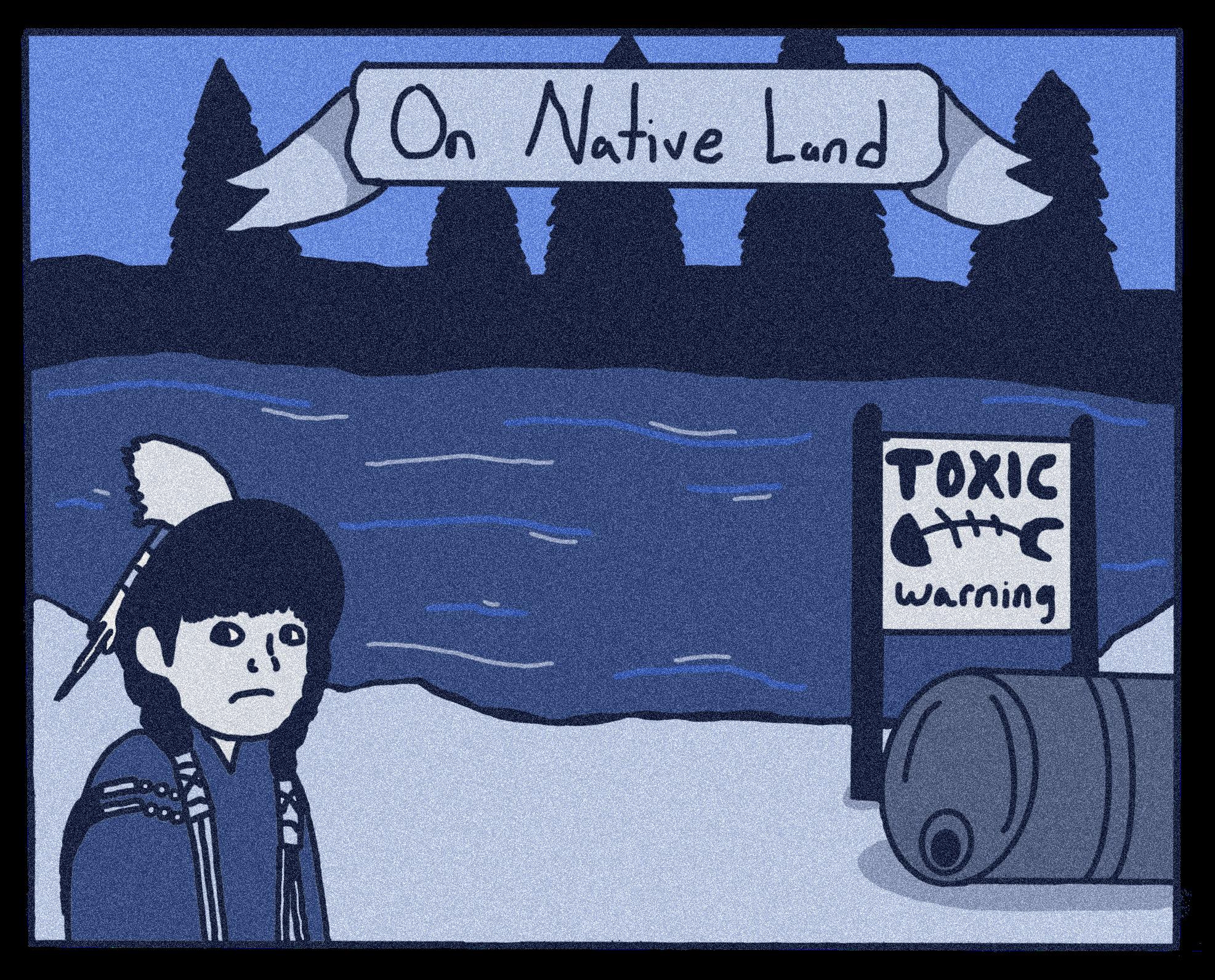
This is an issue that should be talked about more often, and we all need to listen to Indigenous people more. This is not a recent problem, and if they stand alone, it will continue to be a problem for more years to come.
For years, Indigenous communities have protested and demanded attention to the issue, but news about this has not reached the general public. It is an extreme disservice to hide this information from people, but also for the planet’s sake.
Indigenous governments run differently from the U.S. government, which is why they can’t fix this problem on their own. Indigenous people deserve to be treated fairly and with a lot more respect than what they currently receive.
People often forget that we came into their land and deprived them of their culture. The least we can do now is help them.
Fifty percent of Indigenous people live in a community where there are dumping sites, which is too high of a number to be living in such poor living conditions. It is simply unjust for the government to be subjecting Indigenous communities to their own waste management issues and unsustainable practices.
Why should tribes have to face the weight of waste when most companies are creating the problem?
The U.S. government has to put an end to this, and I believe everyone has the power and responsibil ity to make this happen. If people talked more about the harmful impacts of waste dumping on Native lands instead of turning a blind eye, it could be the change that Indigenous people have been waiting and fighting for.
The city of Flagstaff boasts a large Indigenous population. The Indigenous Circle of Flagstaff (ICF) , an intertribal group of Indigenous individuals in Flagstaff, is seeking to incorporate more representation into the community through the creation of an Indigenous community center.
ICF began meeting in October 2015. Since then, it has had six forums open to the public for Indigenous communities. The group's goal is to encourage Flagstaff to develop a positive relationship with Indigenous people who reside here. The group is made up of volunteers, spanning from youth to elders.
Chris Jocks, a citizen of the Kahnawake Mohawk tribe, is a spokesperson for ICF and a senior lecturer of applied Indigenous studies at NAU.
“Indigenous people may feel like they have lived here a generation or two, and yet, they still don't feel like this is a place where they are welcome,” Jocks said.
ICF wishes to move closer to a more meaningful Indigenous Peoples' Independence Day. As of now, there is one single day nationally celebrating Indigenous peoples on the second Monday of October every year.
Jocks said there should be more than a single day to celebrate and appreciate Indigenous peoples. He described that being given one day a year to celebrate independence is insulting to the Indigenous community.
Increasing the celebration of Indigenous peoples is among ICF’s top priorities, Jocks said.
A few of these priorities include halting the expansion of Snowbowl, providing for unsheltered or unsafe relatives and conducting an economic contribution study.
One year ago, non-Indigenous community members in the Fort Valley neighborhood reached out to ICF about huge amounts of earth and rock being taken from the mountain to construct a permitted parking lot, Jocks said.
This is disrespectful to the holy ground it has been built upon, Jocks said, going against its previously stated regulations of areas where construction can occur. He said the ICF is working to put a possible stop to, or at least lessen, the expansion.
Jocks said many Indigenous people have expressed their belief that expansions on Snowbowl should cease entirely, or Snowbowl as a business should cease to exist. The business is uprooting the earth of the sacred land to expand for the resort, Jocks said. Along with scarring the mountain to make snow using reclaimed water.
ICF conducted an economic contribution study to help gather information on
how much money Indigenous people provide to the economy in Flagstaff.
The group has also brought up the unsafe treatment of their relatives in their Indigenous Community Forum in 2016. Struggling homeless relatives are being treated as criminals after police encounters, Jocks said.
ICF is working to establish the Indigenous Community and Cultural Center. This is the organization's biggest priority for this year and has been an ongoing project ICF has been working on for the past two years, Jocks said. As a goal for 2022, ICF plans to start building funding and hiring.
Cora Maxx-Phillips is a spokesperson for ICF and a commissioner for the Navajo Nation Human Rights Commission
“[The Indigenous Community and Cultural Center] has been a big plan on the table, and it's long overdue,” Maxx-Phillips said.
She said she wants to see these plans made into a reality.
Flagstaff, unlike other places in Arizona, does not have a place for intertribal Indigenous communities to gather, Maxx-Phillips said.
“We don't want to duplicate other programs,” Maxx-Phillips said. “We want to expand and begin engaging in other issues that impact the lives of Native communities.”
Maxx-Phillips said the center will serve as a place for Indigenous people to gather for better cultural understandings, education as well as a comforting warmth for all who come in.
Joe W. Washington, who is Choctaw and Shawnee, is board chair of ICF and is a former Flagstaff city councilmember.
“An Indigenous Community Cultural Center has been a dream of the Indigenous community of Flagstaff for at least 46 years and more," Washington said. "Native Americans for Community Action had an architectural rendering of one during this period but could never secure the land.”
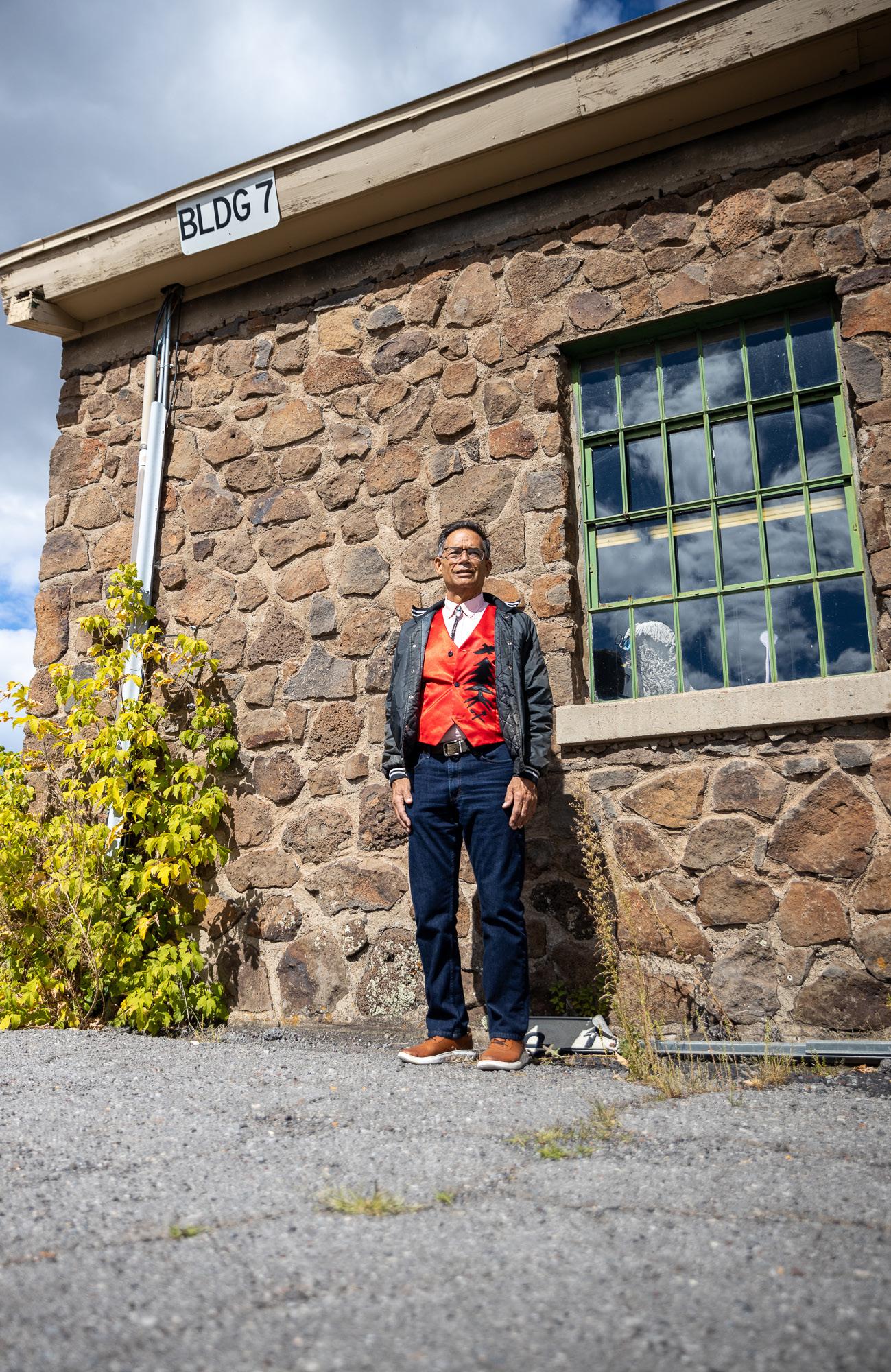
He said that respect is expected for Indigenous peoples for their contributions for the culture community center after it is built. It also shows the beauty of their culture.
“An Indigenous Community Cultural Center would give us control over the presentation of our own culture as well as ensure that the presenters are respected,” Washington said.
During his time as executive director of Native Americans for Community Action, Washington said he witnessed the “Pow Wow” in Flagstaff that brought tourists from all over the country. However, there was a lack of respect for the Indigenous peoples and their culture. Washington said he felt attendees viewed the event as an attraction rather than a cultural practice.
Another primary purpose for the cultural community center would be to serve as a place of education, Maxx-Phillips said. There, ICF plans to start up a language and culture program for the youth and also anyone who wishes to learn about Indigenous culture.
ICF wants to make this a place of education for Indigenous people. She said they have a plan to bring in renowned teachers and educators to speak on Native culture.
ICF is the only group with a proposal for this property, located at 419 North Mogollon St, Flagstaff, AZ 86001.
Since September, the Community Council of Flagstaff is back in session, so ICF is expecting a proposal sometime soon to have the property to build the Indigenous Community and Cultural Center, Jocks said.
Since there is collaboration with the city council, members of ICF are hopeful, Maxx-Phillips said.
“ICF’s efforts have led to the real possibility that the city of Flagstaff might lease land and a building to the Indigenous community to make this dream come true,” Washington said.
This center will be important for the future because individuals in tribes are on the verge of losing their culture, Maxx-Phillips said.
Indigenous people suffer from boarding school syndrome, cultural genicide and ethnic cleansing, which is causing children to miss opportunities within their culture, Maxx-Phillips said.
Of the 22 tribes in Arizona, there are attempts being made to save the culture, she said. If there is no attempt made, Maxx-Phillips said, the culture and land of Indigenous people could be lost entirely by roughly 2040 or 2050.
Indigenous Community and Cultural Center will serve as a place for educating Indigenous peoples. This allows an opportunity to help Indigenous peoples’ bridge the disconnect from their Native culture.
“INDIGENOUS PEOPLE MAY FEEL LIKE THEY HAVE LIVED HERE A GENERATION OR TWO, AND YET, THEY STILL DON'T FEEL LIKE THIS IS A PLACE WHERE THEY ARE WELCOME.”
– Chris Jocks, ICF Spokesperson
Every year, NAU welcomes an influx of students eager to find a sense of community in Flagstaff.

The NAU HAPA Hawaiian Club (HAPA Club) — one of many cultural clubs and organizations on campus — helps students transition to college by building a community they can rely on.
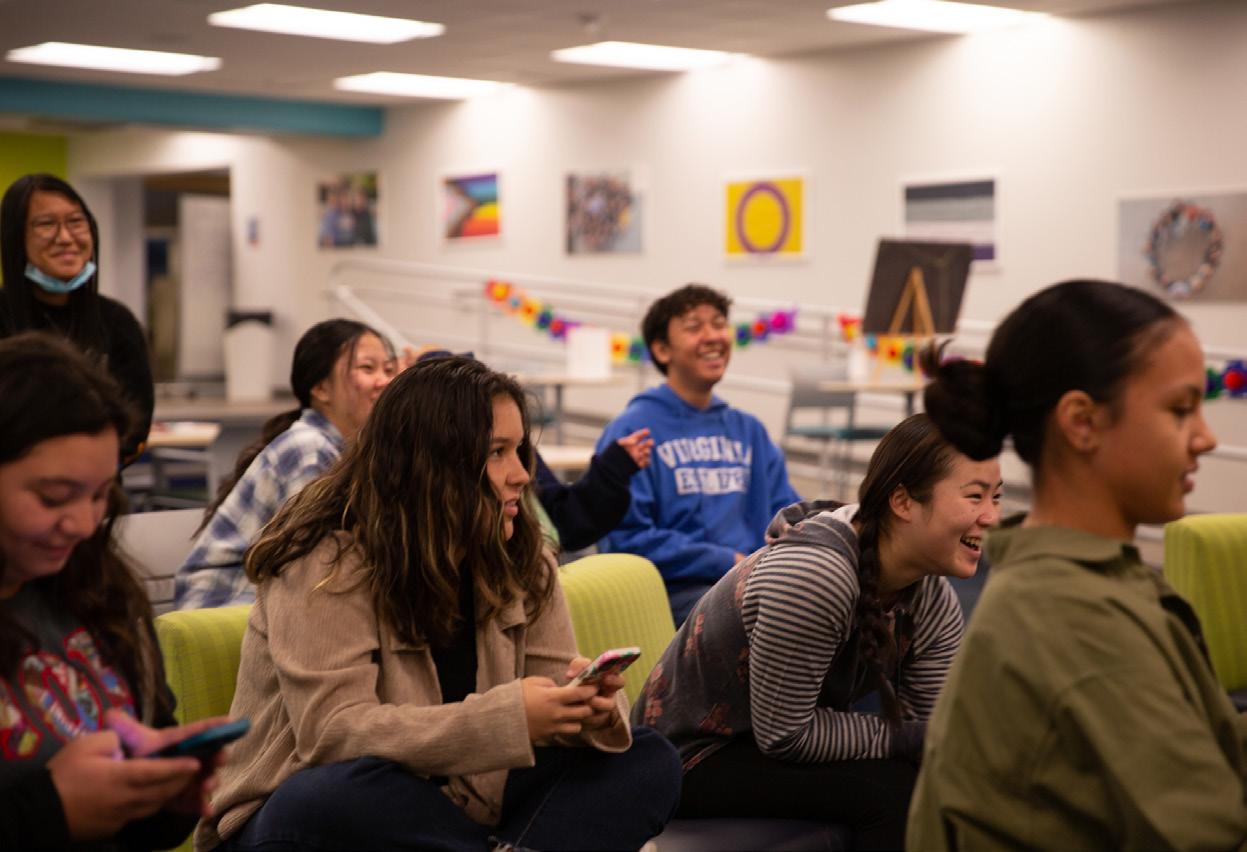
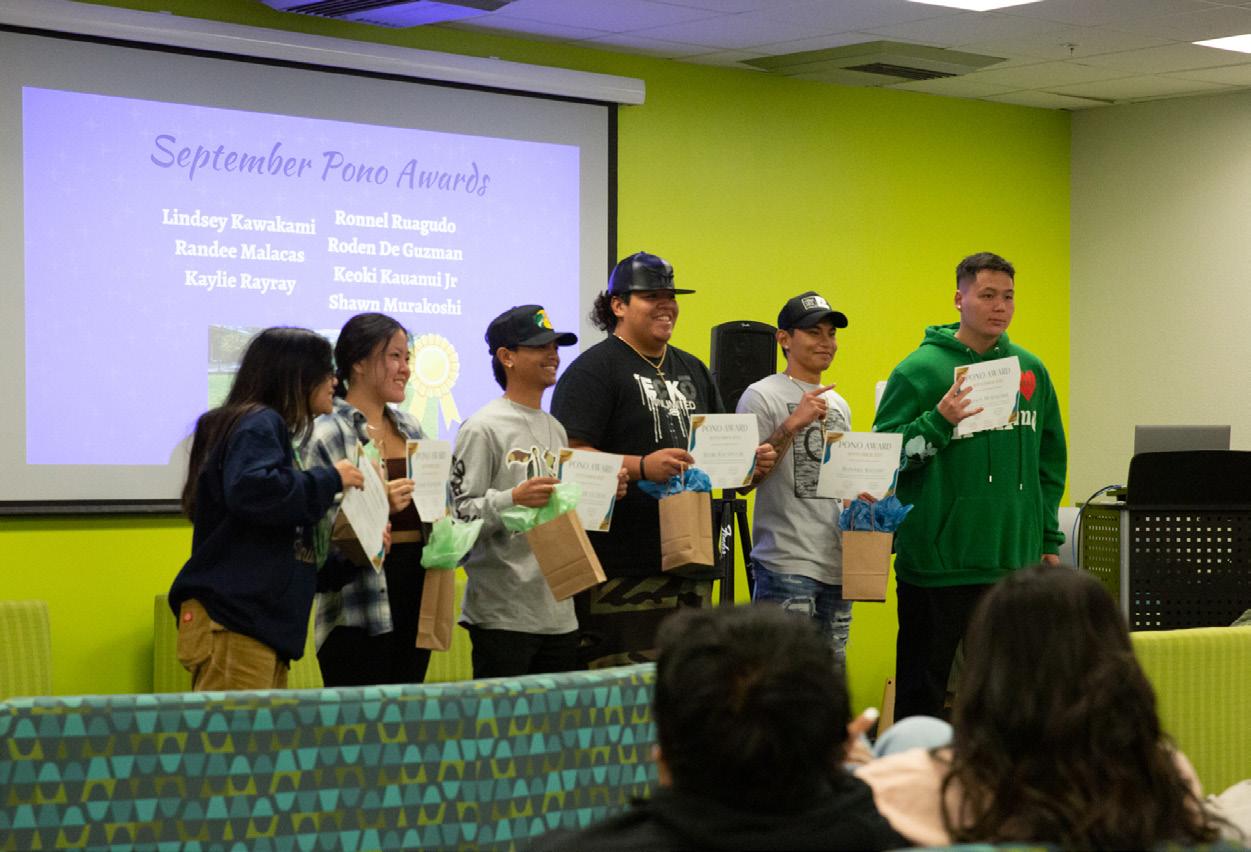
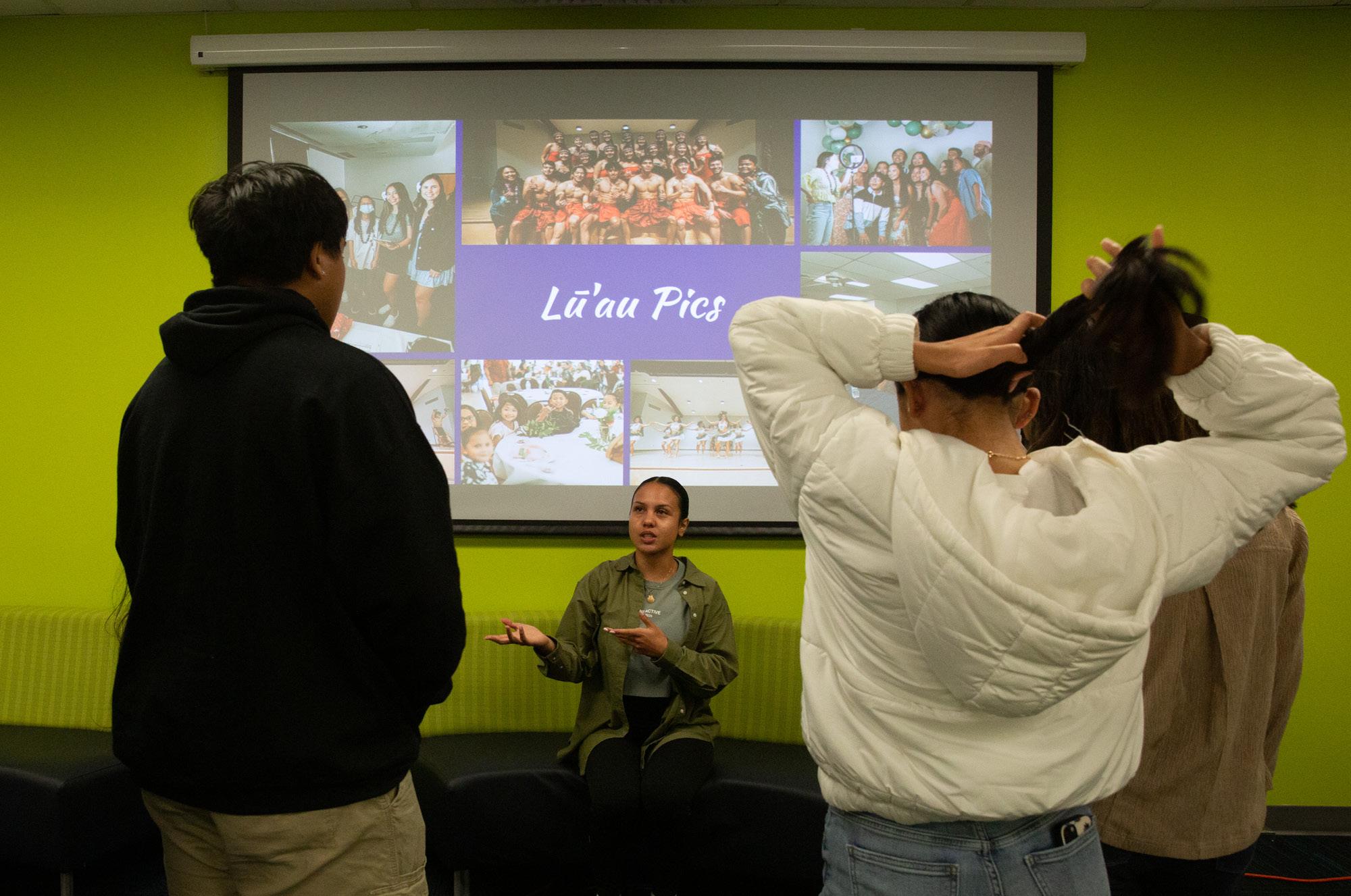
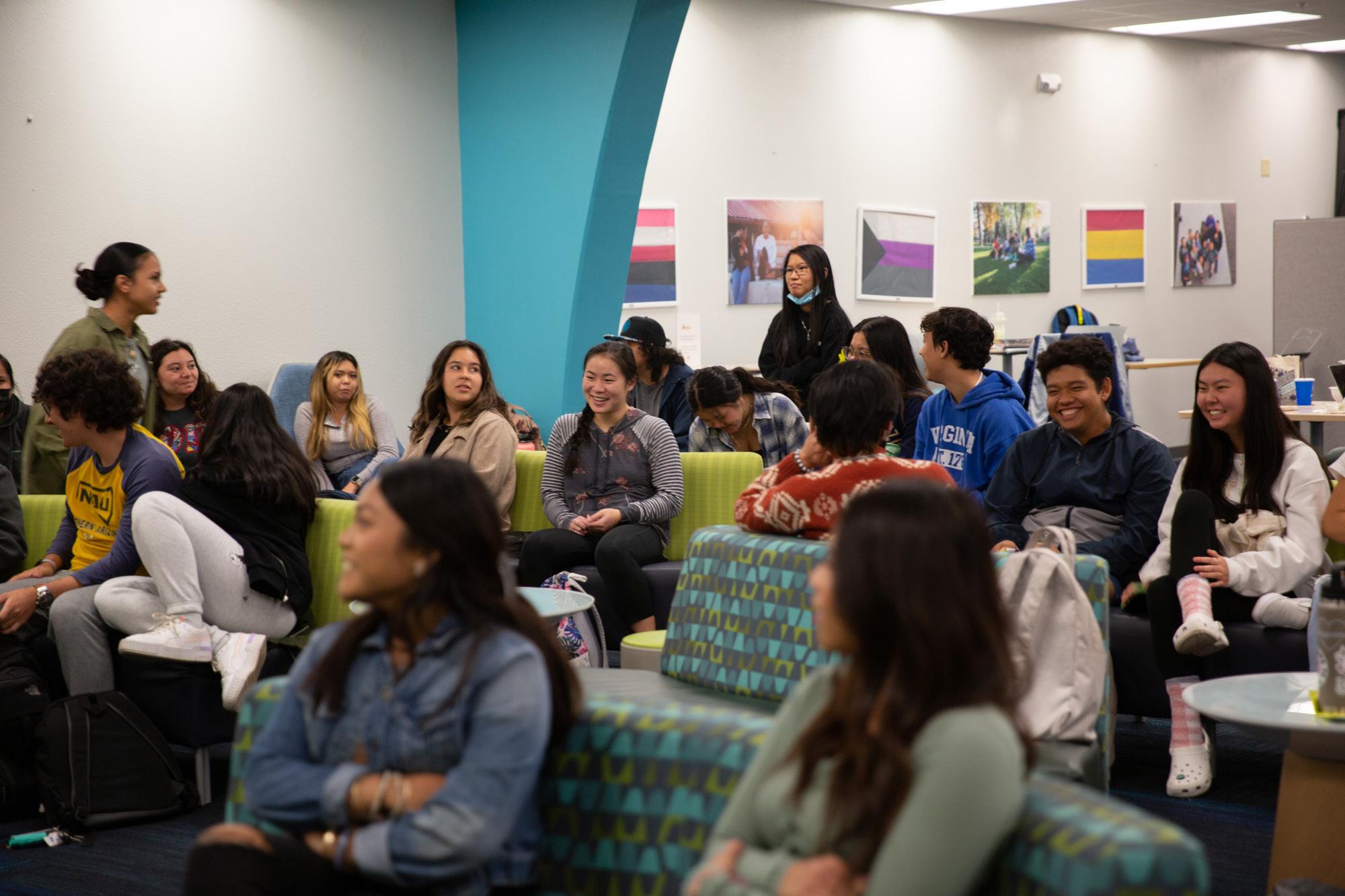
With many of its members coming from Hawai'i or identifying as Native Hawaiian, the HAPA Club recognizes the history of the Hawaiian and Polynesian culture its members carry.
Native Hawaiians are recognized as distinct and unique Indigenous people with a historical continuity to the original inhabitants of the Hawaiian Islands. Their ancestors were the original Polynesians who sailed to Hawai'i and settled around the fifth century.
Despite less than 1% of the NAU population being Native Hawaiian or from other Pacific Islands, the students are still able to find their community.
HAPA Club members are given the opportunity to bond with one another, participate in various acts of community service and get involved on campus by participating in events hosted by other clubs and organizations.
The club also hosts its own events throughout the year; one of the biggest is the annual lūau. A lūau is a traditional celebration consisting of different performances. These include Polynesian dances that tell a story based on legends and cultural practices. Every spring, the entire Flagstaff community is invited to join and watch.
Polynesian cultures use verbal means to memorialize the events of their lives. With chants, songs and dances, they create a way to carry their history and memories with them through centuries.
Spanning thousands of years, traditions are united in performances. By using symbolism, metaphors, hidden meanings and imagery, they work to capture the true essence of their culture and way of life in the world.
Tiffany Keamo, event coordinator for the HAPA Club, said she enjoys being able to share Hawaiian and Polynesian culture with anyone interested in learning. One way people can learn is by attending the lūau
the HAPA Club hosts every spring. With an assortment of different performances, individuals can learn about the traditional practices of a variety of cultures.
“The entertainment of our annual lūau consists of Polynesian dances, such as hula, ori Tahiti, siva Samoa and many more,” Keamo said. “This event delivers the aloha spirit, which is key in our everyday lives and teaches many people why our culture is important to us.”
Hula is the storytelling dance of Native Hawaiians. It can be paired with chants, contemporary music, slow and sentimental tempos or fast and energetic music. But no matter its style, it is part of the cultural practice of sharing stories that connect dancers and audiences to Hawaiian ancestral knowledge and understanding.
Ori Tahiti, which translates to the dance of Tahiti, is an original artistic expression that has deep roots in ancient Polynesian traditions. It represents the movement and life of the Tahitian civilization and at the very beginning of its tradition, was only taught orally.
aloha spirit is a standard we strive to live by and hope to spread to everyone.”
Aloha is the essence of relationships where each person is important to those around them.
LeAnne Santos, president of the HAPA Club, said she believes that the aloha spirit is a key to living and building a community.
“The phrase ‘spread the aloha’ simply means to spread the love,” Santos said. “You carry the aloha spirit with you wherever you go, so everyone you come across can feel it. The HAPA Club is a place for students to find a sense of ‘ohana’ here at NAU.”
Ohana is the Hawaiian word for “family.” Some might only consider blood relatives as family, but the concept of ohana involves creating loving relationships with everyone around you.
The aloha spirit also helps spread the club’s importance of being part of a community. Transitioning into a university can be extremely difficult to some students due to anxiety, loneliness and learning to get comfortable in a new environment
Jordyn Nakaguma, vice president of the HAPA Club, said having a support system can help ease a student’s transition to a university.
“Having a community is very important, especially while in college,” Nakaguma said. “There are so many changes that come with being in college and being able to create a home away from home for our members by bringing students with similar interests and backgrounds together is how we support each other.”
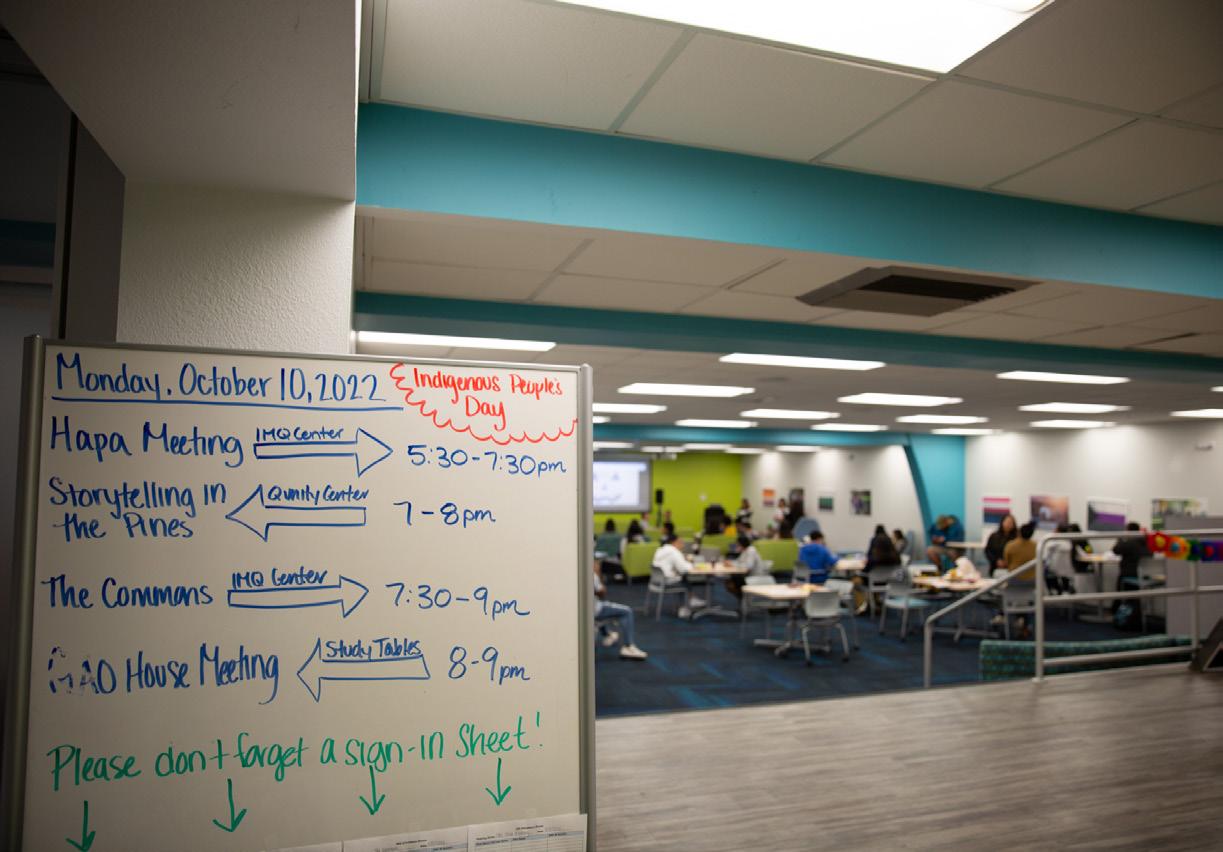
In each performance, there are a variety of verbal and physical combinations used for different occasions and every single one of them holds a special meaning. One common feeling they work to spread is the aloha spirit.
Aloha spirit represents the welcoming philosophy of native Hawaiians — they aim to treat everyone, including visitors, with deep respect. By coordinating their mind and heart, individuals will have a better understanding of themselves, allowing them to welcome others.
In order to relate this feeling, everyone must think and emote good feelings to those around them.
“We lead by example by being kind, helping without expecting anything in return, having humility, being patient and so much more,” Keamo said. “The
Although many members in the HAPA Club are students from Hawai’i or are Native Hawaiian, the club encourages anyone interested in gaining a support system to join.
Junior Juliane Venezuela said she wanted to find a community she could call her own when she first arrived from Maui, Hawai’i three years ago.
“I wanted to meet new people and have fun at socials,” Venezuela said. “I wanted to join HAPA because I wanted to feel like I was home even though I wasn’t. And hearing that they displayed some of the traditions in Hawai’i showed how they spread a little bit of aloha.”
Through a variety of ancient traditions, the HAPA Club has spread this spirit and culture around Flagstaff by creating a community that supports each other.
“THE ALOHA SPIRIT IS A STANDARD WE STRIVE TO LIVE BY AND HOPE TO SPREAD TO EVERYONE” – Tiffany Keamo, HAPA Club event coordinator
Media coverage of Indigenous life is lacking in most news publications
However, the small team at the Navajo-Hopi Observer (NHO) helps fill in these gaps, providing comprehensive coverage of the Western Navajo tribe and all of the Hopi Reservation
NHO provides a news source focused entirely on Native American issues, a commodity many regional areas lack. Its content covers tribal news, human interest stories, community events, sports, and school- and health-related information. NHO covers news for a large geographic area, even though its news staff is few and far between.
Katherine Locke, the associate editor for NHO, said she has been with the publication for nine years, learning more than she would have anywhere else.
“Most people don’t get to really delve into Indigenous or Native American issues in the way that I’ve gotten to because I just write about everything,” Locke said.
With each new story, Locke said she learns real history as opposed to the false history students learn in school. She has explored the issues that affect Indigenous people in this country and knows the systems are set up to discriminate against them, Locke said.
She said she focuses on using primarily Indigenous sources rather than sources who talk about what Native Americans said.
Media rarely represents Indigenous voices and, in particular, pays little attention to cases of Missing Murdered Indigenous Women and Girls (MMIWG).
Locke referenced a study the Urban Indian Health Institute (UIHI) in Seattle conducted assessing why MMIWG cases remain underreported by news outlets and law enforcement. Ultimately, the study found 506 MMIWG cases that law enforcement had dismissed and the media chose not to cover.
The study’s report said media coverage on this issue revolves around violence on reservations, avoiding MMIWG in urban areas. Much of the reporting uses violent language which generates a false image of Indigenous people.
“[The lack of coverage] bolsters stereotypes of American Indian and Alaska Native people as solely living on reservations or in rural areas, perpetuates perceptions of tribal lands as violence-ridden environments, and ultimately, is representative of an institutional bias of media coverage on this issue,” the report stated.
NHO works to fill the gaps other news sources continue to leave by establishing comprehensive reporting on Native issues.
Douglas Milds is the founder of Apache Skateboards, a company featured on the front page of NHO in August in a story called “Skating for the vote: event in
Kayenta focuses on Native youth registering community members to vote.”
“Oftentimes in media, the Native voice is either missing or it’s erased or it’s hidden in the back pages,” Milds said.
He said he and the rest of the Apache skate crew were extremely proud of making the front page; the exposure helped spread the word of their cause.
Milds posted a picture of the story on his Instagram with the message, “When the crew and friends end up on the front page of the #NavajoHopiObserver, you know things are getting heated #OntheRes.”
Native publications — like NHO and Navajo Times — feature viewpoints that are extremely important to the people, especially in this region, Milds said.

NHO publishes stories like these rather than focusing solely on the media’s constant negative narrative depicting Native American life.
Working for an Indigenous population comes with learning to be culturally aware, Locke said.
By understanding their culture — and taking the time to get the story right — journalists can begin to accurately report on Native American life. This includes respecting Native Americans by taking the time to consider what is appropriate to publish and what is not, Locke said.
It’s not always about making money, Locke said, it’s about being the ones to avoid crossing lines Native Americans have drawn for so many years and yet, have never been respected.
While she keeps her writing objective, Locke said she thinks of journalism as a form of activism.
“You get to engage in all of these issues, and you get to care, and I care about making sure their voices are being heard,” Locke said.
Locke said one of her most influential stories was about the proposed Escalade project, involving the development of a tram on the eastern rim of the Grand Canyon floor.
While Locke didn’t personally agree with the project, she said her opinion didn’t matter.
What mattered was giving a voice to the people who would be affected most by the project, Locke said. She spent an entire day talking to Indigenous community members and listening to their perspectives. Locke said the project developers had been spoken to and quoted in numerous publications, but NHO included Native Americans’ voices.
Locke said eventually the project was dropped with the influence of her article and her sources speaking out.
“It’s just one of the times [where] you really still need to be listening to the voices of the people whose land it is,” Locke said.
In the time Locke has been with NHO, the already small staff dwindled, transitioning from working in an office to solely working in home offices.
When she began at NHO as a writer, the staff consisted of about eight full-time staff members who perform the writing, design, editing, marketing and photography tasks necessary. In comparison, a typical small-town newsroom would have around 12 employees, each with a specific role.
Now, the five-person NHO staff completes the work intended for numerous positions.
Locke, who recently took on the role of teaching journalism classes at NAU, was shocked when she taught her students how many staff a newsroom is supposed to employ.
“Wait, that’s how many people there are supposed to be?” Locke said, referring to a chart outlining the staff in a newsroom.
Locke completes the paper’s production at home with help from Wendy Howell, the editor of NHO and Williams-Grand Canyon News. The two write and edit stories, design the newspaper’s layout and publish it weekly — both online and for distribution. The 15,000 print copies are then placed in newsstands across northern Arizona, making it accessible to readers on the Reservation and throughout Flagstaff, Winslow, Holbrook and Page.
While Locke and Howell complete the majority of the work, NHO features content from freelance journalists and photographers.

Gilbert Honanie, a freelance photojournalist for NHO, focuses on covering emergency happenings within the western Hopi and Navajo areas and issues within the Tuba City School District. Currently, he’s putting together photos for the Western Navajo Fair alongside various other projects.
Honanie said some of his most recent influential work featured photos of floods within the past year as well as Tuba City High School reintroducing sports after vaccines became widely available.
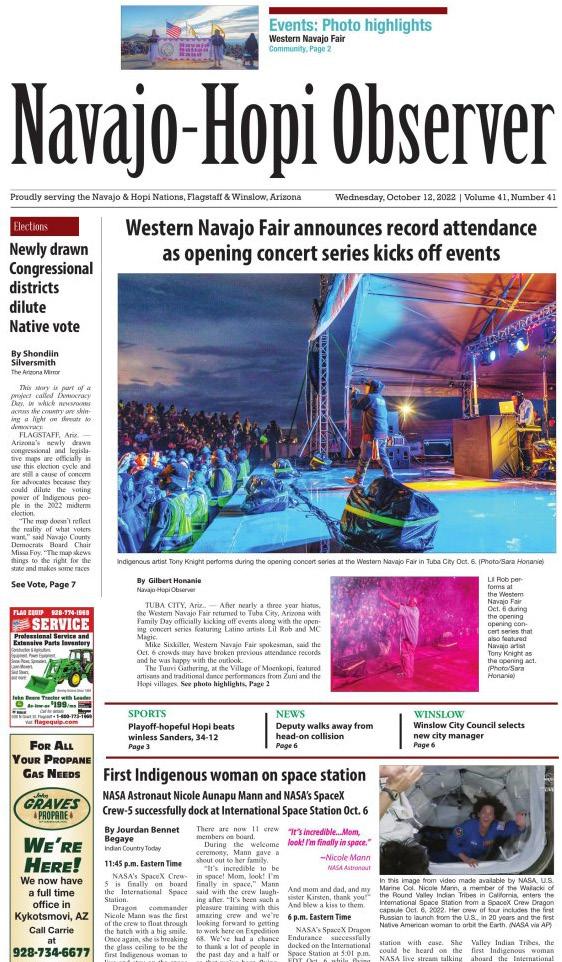
When working with sources, it can often be difficult for them to open up — the pandemic made it even harder, he said.
“I just keep talking with them, get to know them and see what their backgrounds are and, you know, share my background and experiences with them, just trying to get them to relax,” Honanie said.
Since COVID-19 and the transition to working from home, interviewing for stories has a different feel, Locke said. She conducts most of her sourcing and interviews from home via phone calls and Zoom meetings.
However, Locke said they are less personal than talking to the source face-toface, an approach she prefers.
She conducts emotional interviews often due to the disproportionate impact of COVID-19 on the Navajo Nation and the epidemic of MMIWG
She finishes stories feeling burnt out and in the past two years has written less because of the emotional toll they place on her.
“It’s hard to be a journalist, writing about community [members] who are no longer here,” Locke said. “It’s hard. I think mental health is a real thing for journalists covering any kind of tragedy for an extended period of time.”
While the stories can leave her emotional, she said it’s not about her. It’s about the source’s story and life, Locke reiterated.
She takes on the role of holding difficult conversations and asking hard questions to share the community’s stories. Otherwise, people remain unaware of the issues and importance of the Indigenous population. Since it is also the primary news source for reservation communities, the NHO fulfills the purpose of journalism — it allows readers to make well-informed decisions about their lives and communities.
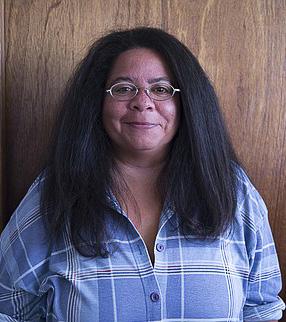
Locke said she hopes more Indigenous people will join the journalism industry, helping to destigmatize people’s perceptions of Native American life.
“If you really want to be making a difference, working at a community newspaper is the best place to start because you really get to know your community,” Locke said. “And if you’re really paying attention and really writing about those stories and those issues, then you really get to make a difference.”
“AND IF YOU’RE REALLY PAYING ATTENTION AND REALLY WRITING ABOUT THOSE STORIES AND THOSE ISSUES, THEN YOU REALLY GET TO MAKE A DIFFERENCE,”
– Katherine Locke, associate editor for NHO
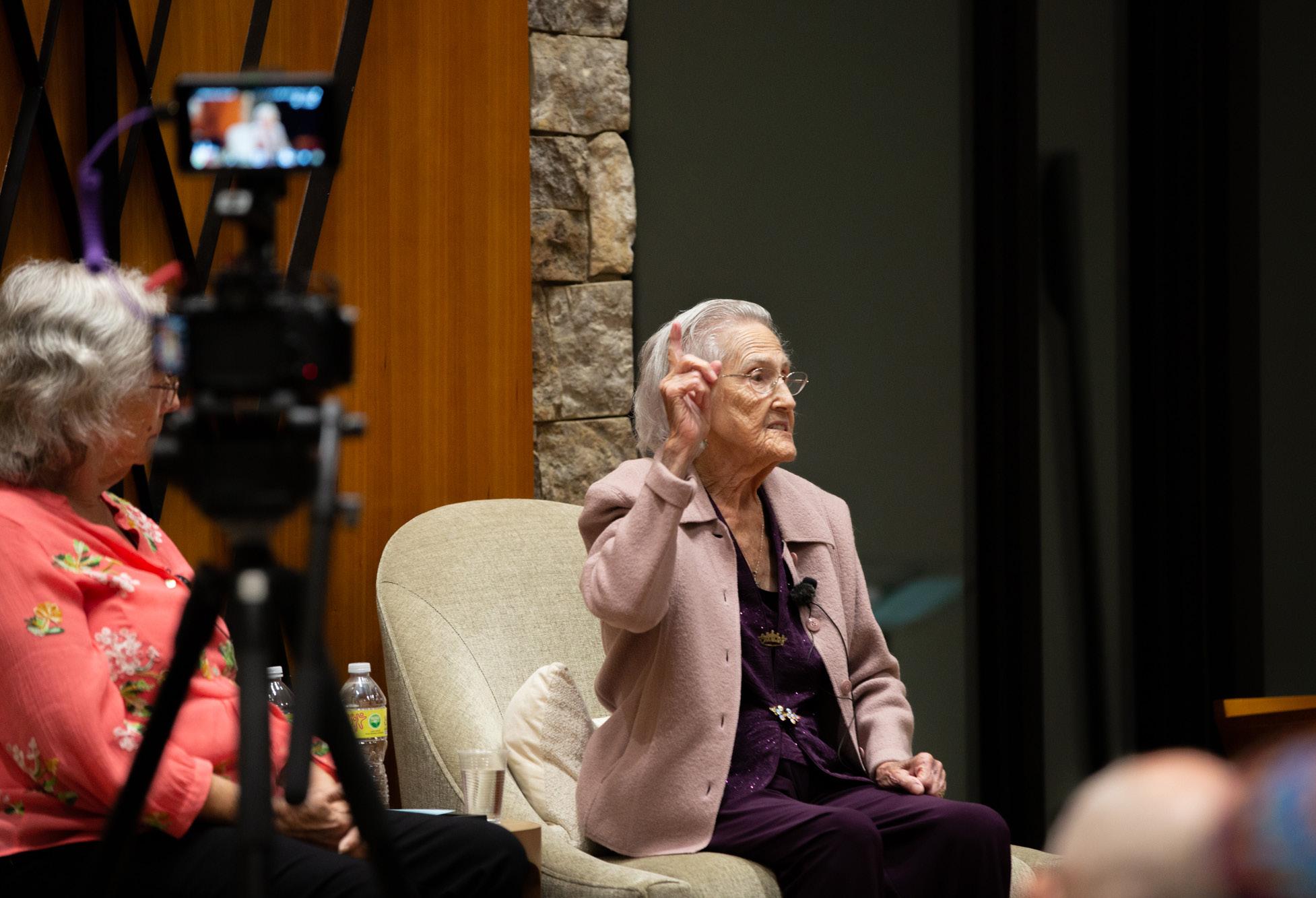



Photography captures a time, an exchange, a moment. It’s like the world slows down and the scene makes itself present, and you abide with the click of a button. My name is Octavia Freeland and I am a senior photographer for The Lumberjack. With nearly a year of photography experience, I feel as though I have nothing to say. If you asked me what I thought about photography a year ago today, I wouldn’t have said much. I would never have guessed photography would have become such a prominent interest in my life. The interest in photography, I thought, was a fleeting one. However, curiosity got the best of me — and good thing it did — because my junior year I decided to join the photography section of The Lumberjack This is where my interest expanded and the introduction to photojournalism came with open arms. I do not know what my specialty is but I have been able to capture photos of concerts, protests, community events and a few portraits. Each activity has contributed to my knowledge and growth as a photographer. I have no idea where this newfound interest of mine will take me, I just hope my curiosity will continue to lead it. For now I will continue to work toward finishing my last year at NAU with a degree in journalism.
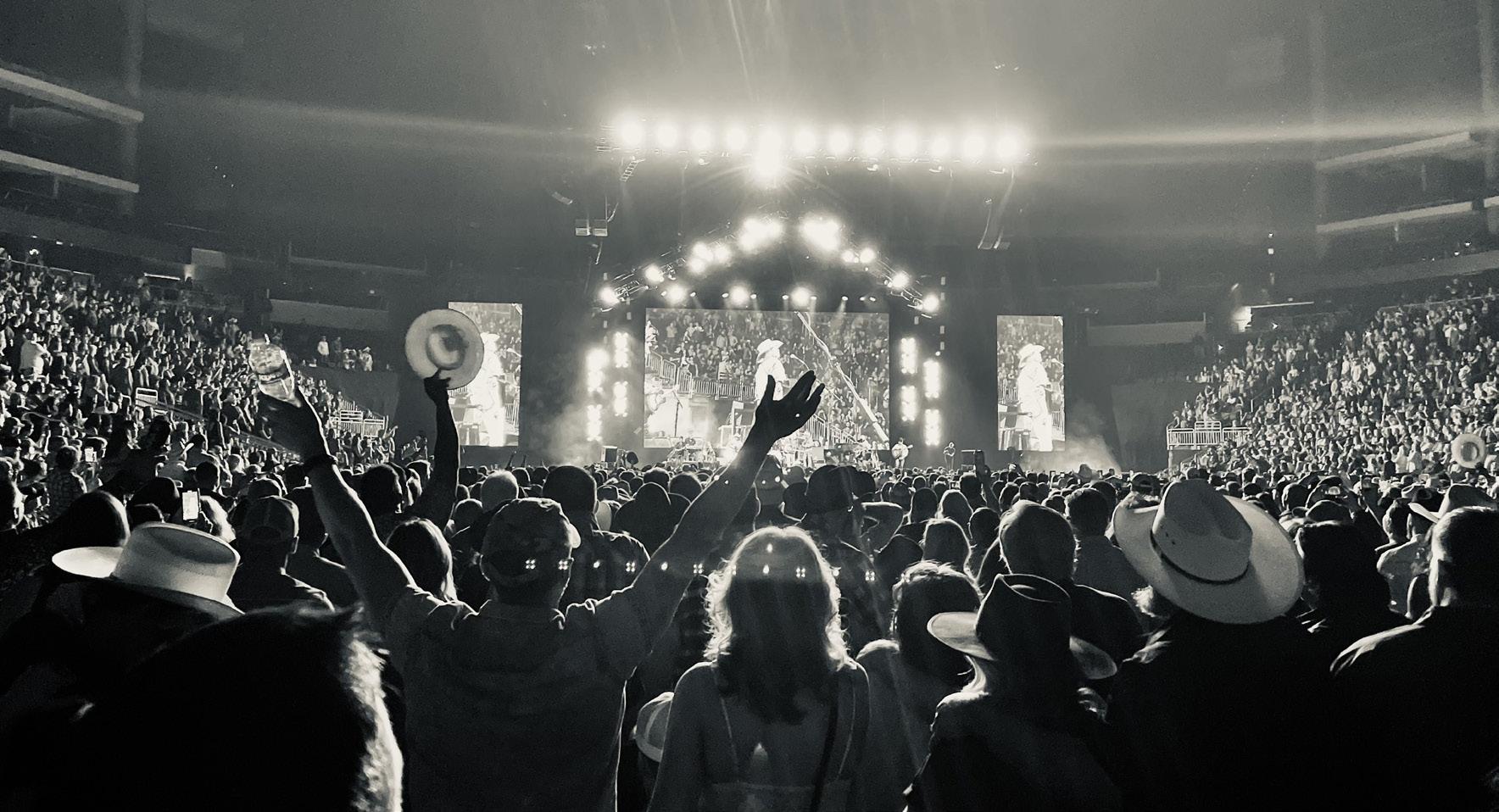
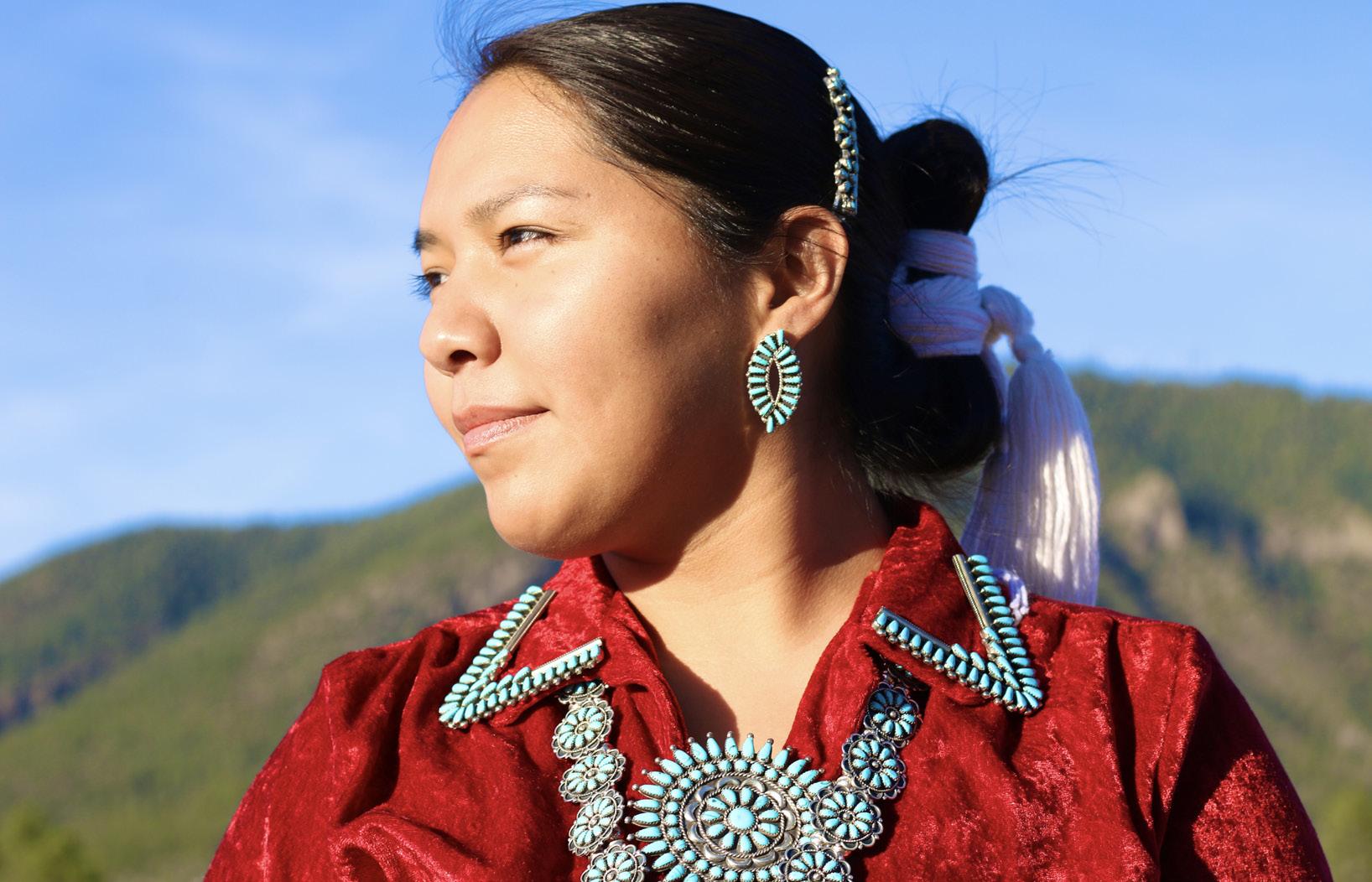
You always like to make it difficult for us. Every time I decide, “hey I wanna write this story,” you decide to come along and screw it up. You make it so hard to finish anything. We would be building up the world, the characters, the plot and delve into the nitty-gritty details. Then it happens — something catches our attention. You become entranced by a sudden moment, a concept, something that makes you tick. A new idea occurs. From that, you suddenly decide that it’s time to do something else. I have to stop typing, writing, and developing since I can’t do it without you. But what about our current project? Sure, I’m just there to jot them down. But I’m also the one who actually puts it on paper, forging it to fruition — making it real. However, everything revolves around your influence, and right now you draw me to that new idea you have. So until then, the project that we were just working on is on a hiatus until you decide it's time to get back to it and hopefully I can get back to writing it and eventually finish.

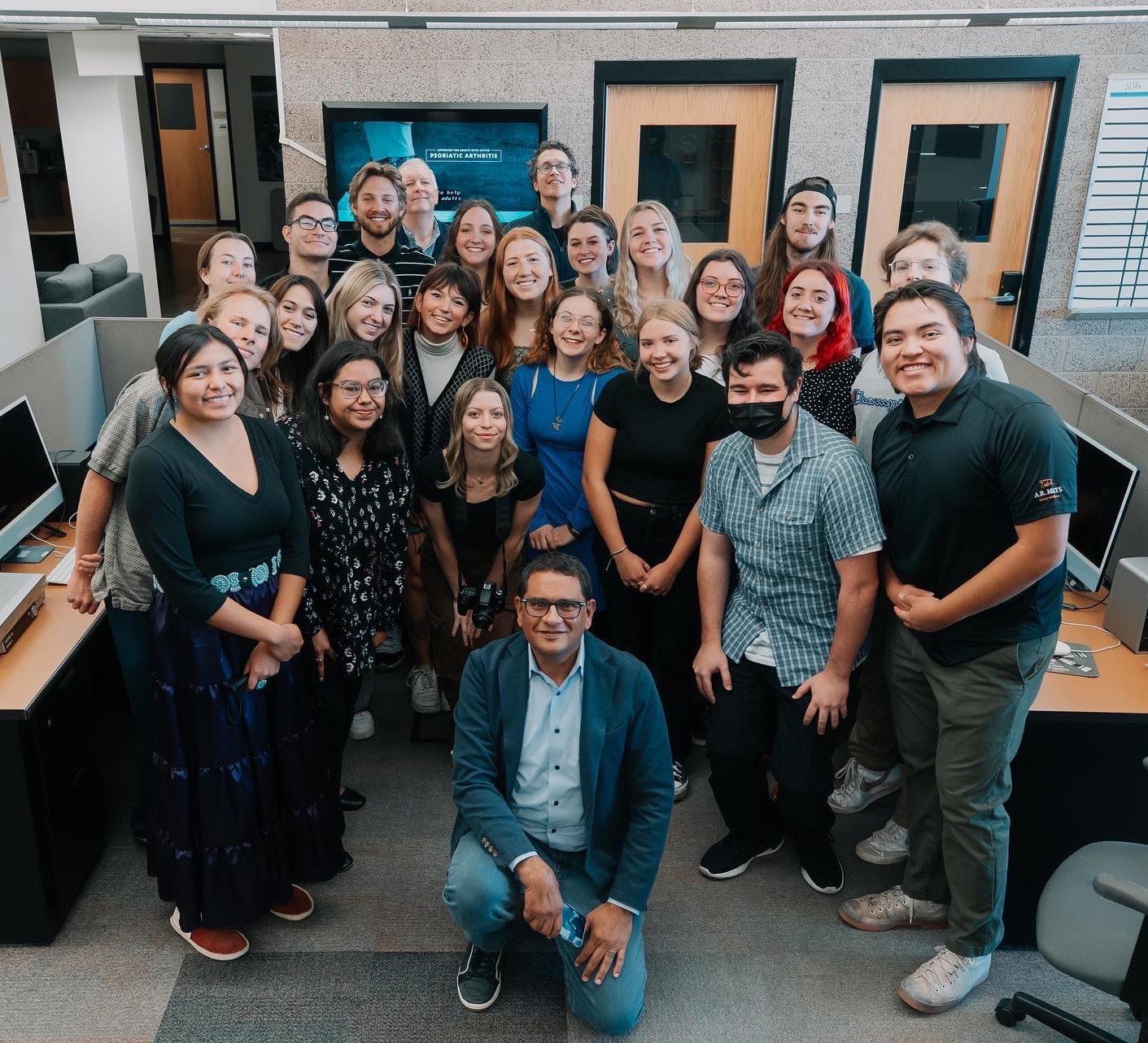



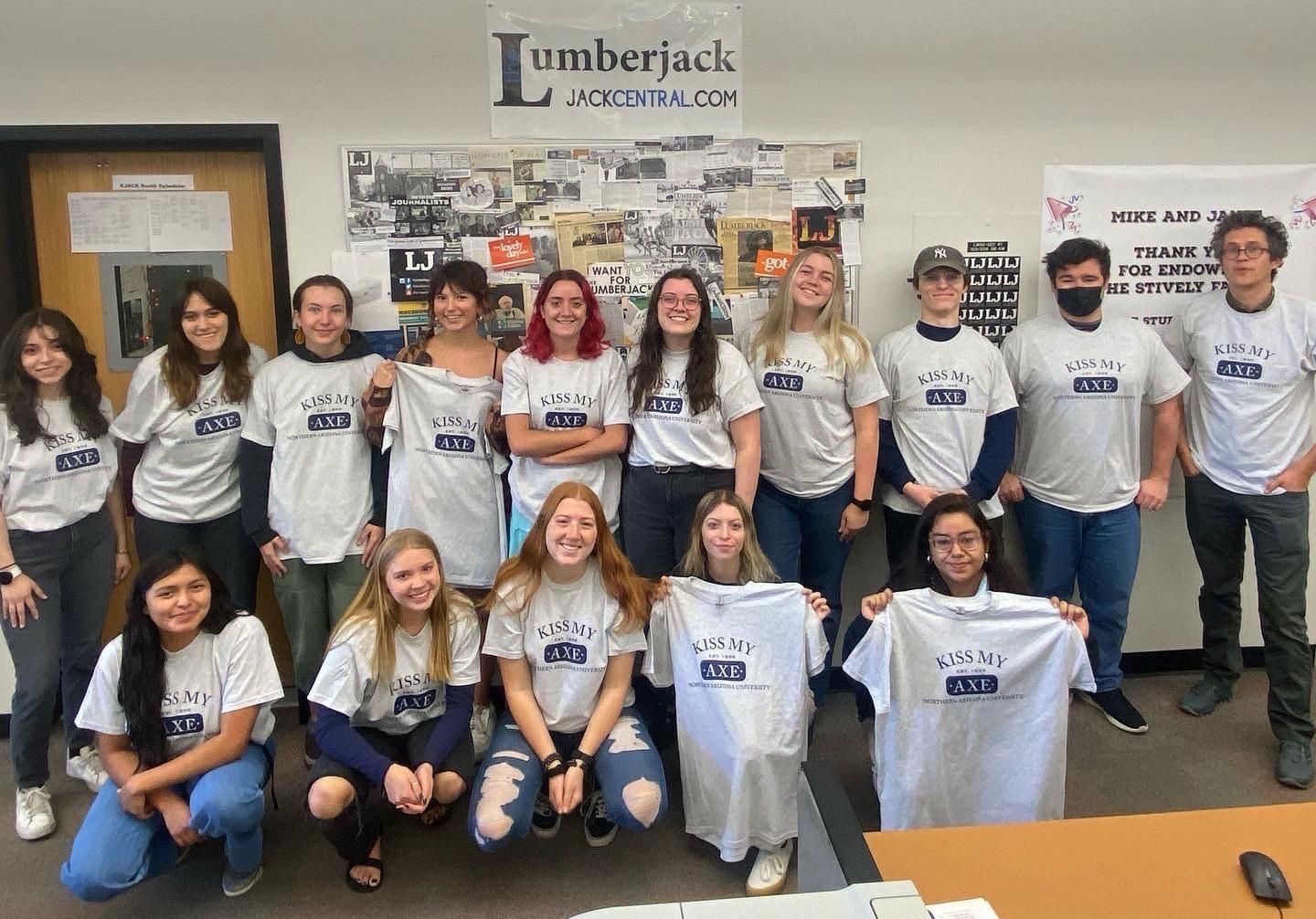
A short piece venting about the grueling relationship between my hands and my mind when it comes to creating a piece.

On a Stolen Land,” written by Toni Jensen, tells the story of her life growing up around violence, sexism, trauma and racism as a Métis woman in the United States. She reveals the racism of white America and how the “American Dream” consistently played a part in her life.
ANAI CARRASCO CULTURE WRITERIn chapter one, Jensen introduced the hostility of men. On Magpie Road, she was hollered at by two men in a pickup truck disturbingly waving their guns at her. Later on in the memoir, she describes all encounters with men to feel this way — the eerie feeling of being approached by men who have no business hollering at you.
Jensen took photos of hotel rooms in a nearby Fracklands town where Indigenous women were sexually harrassed and assaulted to remind readers of how often violence occurs among Indigenous people. According to The Guardian, “Nearly one in three American Indian and Alaska Native women have been raped — more than twice the average for white women and probably an undercount given gaps in data collection.”
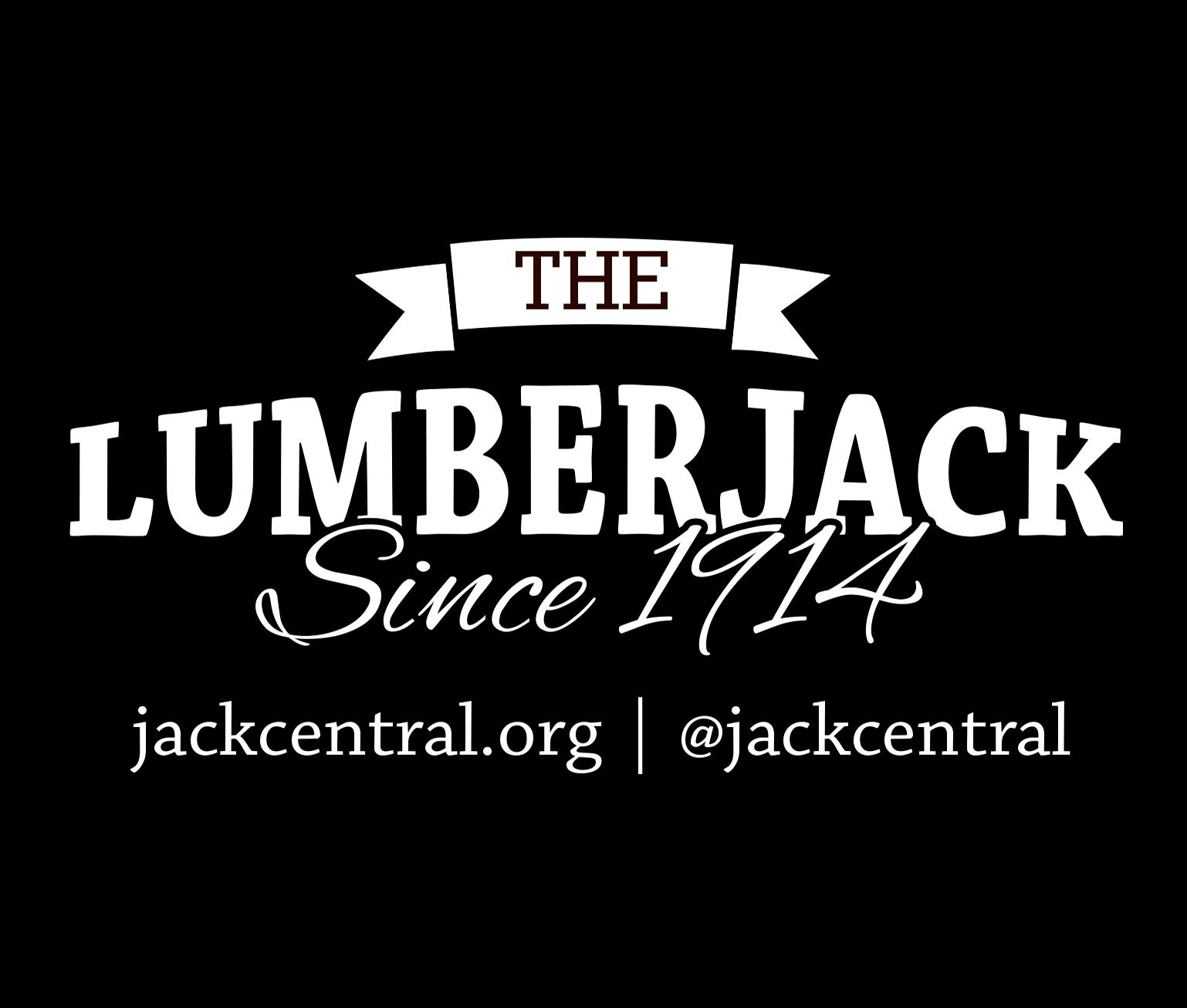
It is not the lawful duty she is abiding by but rather her desire to raise awareness to Indigenous people.
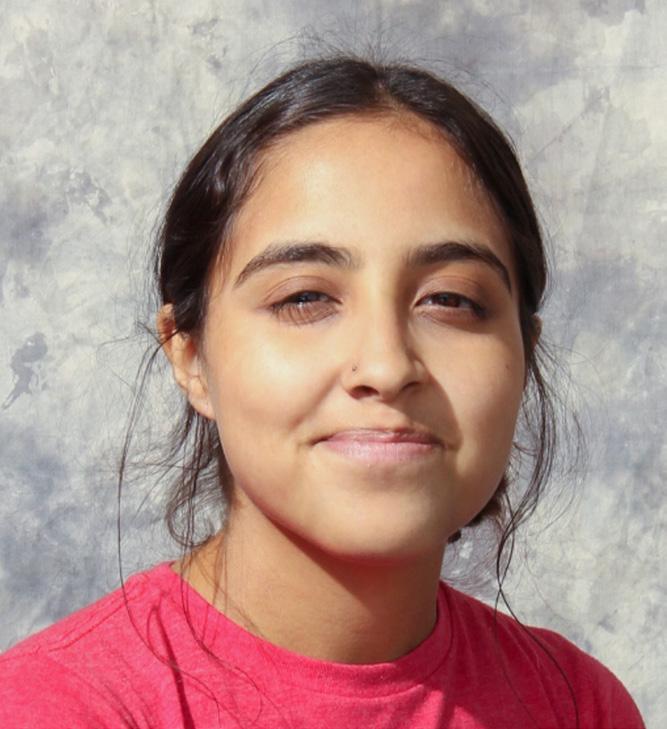
Despite the dysfunctionality of the world, she finds comfort in the fact that she’s able to share something like football with her family. She describes some of the football jerseys to have Native American men on the back and sees people with synthetic braids to make it look like real hair. She ends this section by saying how unbothered her family is to see this. It is the same “better at whiteness” her family and everyone in their town strive for.
In continuing chapters, she triumphs through the unbothered America, allowing just anyone to carry a gun. Guns and weapons were profound in relationships Jensen shared with people. She emphasizes how often she sees them, concealed or not. Anyone with a license to do so can own a gun, on campuses, in schools and in men’s hands in their pickup truck.
In regards to structure, Jensen’s memoir was persistent in a variety of writing styles. The one that stood out most were her Webster definitions. She would use a word, define the word according to Webster’s Dictionary, and would connect the definition to her own life. The word might have played out differently or it would have described her life — in that moment — perfectly.
Toni Jensen speaks as a Métis woman in North America. It is the heartwrenching and blunt tone she uses that makes the book unique. She speaks as an empowered Indigenous woman and provides truth to her writing. She is a voice for many Indigenous women in the U.S. and lays out the perfection of memoir-style writing.
On Thursday, Oct. 6, the Native American Cultural Center (NACC) held the NACC Elder’s Program Storytellers Series. The event was led by Elder Paul Long Sr. via Zoom in the NACC Gathering Room.
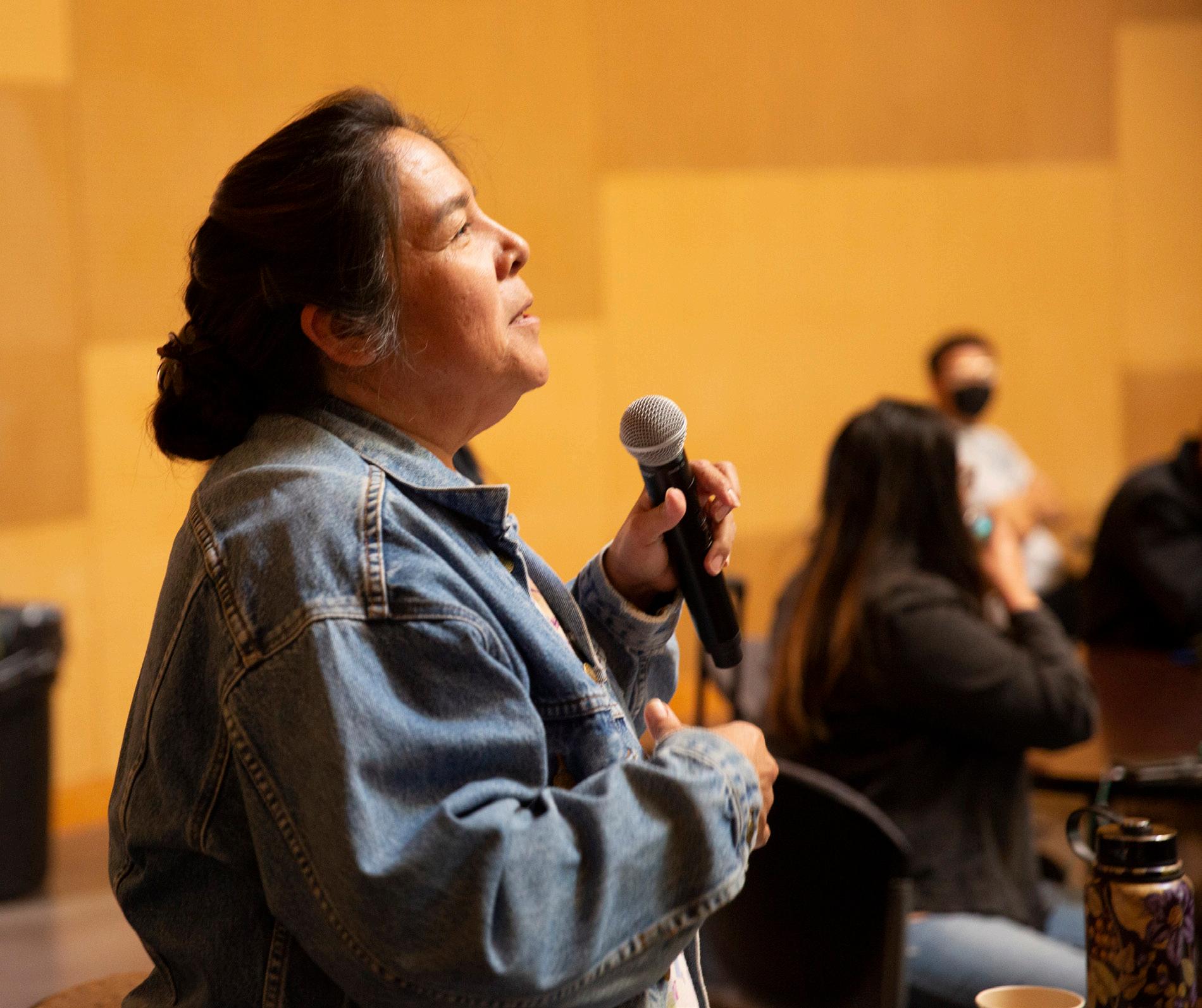
Long resides in Twin Lakes, New Mexico and has been a part of the Storyteller Series for several years. He is a part of the Tachine (Red Running into Water) clan, born in Dziltlahnie (Mountain Cove). His maternal grandparents are part of the Tsinnaginnie (Black Streak) and his paternal grandparents belong to the Holtsooi (Meadow People) clan.
The event's main organizer was Shirley Conrad, administrative specialist at the Office of Native American Initiatives.
Conrad began the event by welcoming Long into the Zoom call. Then he began his discussion.
Long’s discussion was on Kinaalda, which is a four-day celebration of womanhood in Navajo culture. Kinaalda takes place right after a Navajo girl has her first period, and the women of her community come together to put on the ceremony.
“It’s a time of celebration, four days to acknowledge and appreciate a young lady becoming a woman,” Long said. “This is a once-in-a-lifetime thing which needs to be celebrated.”
The celebration starts with tying the young woman's hair back, which can be no later than five days after she has begun puberty.
“When the young girl begins puberty, those five days are when she is most holy,” said Long.
Clothes are also a large part of the celebration — the young women are to be dressed in turquoise and white shell. They are adorned with salted red chee, corn pollen tied to their belts and untouched deer hide tied to their hair.
The final day of the celebration, known as Bejii, is when the cultural cake is made. This is a major tradition of the celebration which includes digging a hole in the ground to offer a cake that was blessed by a medicine man. During this time, the young woman is not allowed to eat sweets, touch blood of any kind or eat the cake.
“When you give an offering, you don’t ask for the offering back, especially from a medicine man,” Long said.
Around 11 p.m. on the final day of the celebration, the singing of the first phase of songs begins.
“We must not begin any earlier to allow all of the stars to get situated around the universe,” Long said. “It is important for the young lady to wait, or the ceremony won’t happen as intended.”
Once the stars settle, the women of the community begin to sing the 12 sacred songs inside. As instructed, nobody can go outside until after the songs are complete, then a break occurs for everyone.
The second phase of the songs begins after the break, which are all about the different stages of womanhood. Then, the washing of her hair with Yucca root begins while the four top sacred children's songs are sung.
While she is washing her hair, it is important that she is also rinsing her jewelry.
“Then the final run begins with the Kinaalda taking four steps forward then she walks out and runs,” Long said.
Afterward, the glash, blessing of the white clay, is combed throughout the young woman’s hair bun.

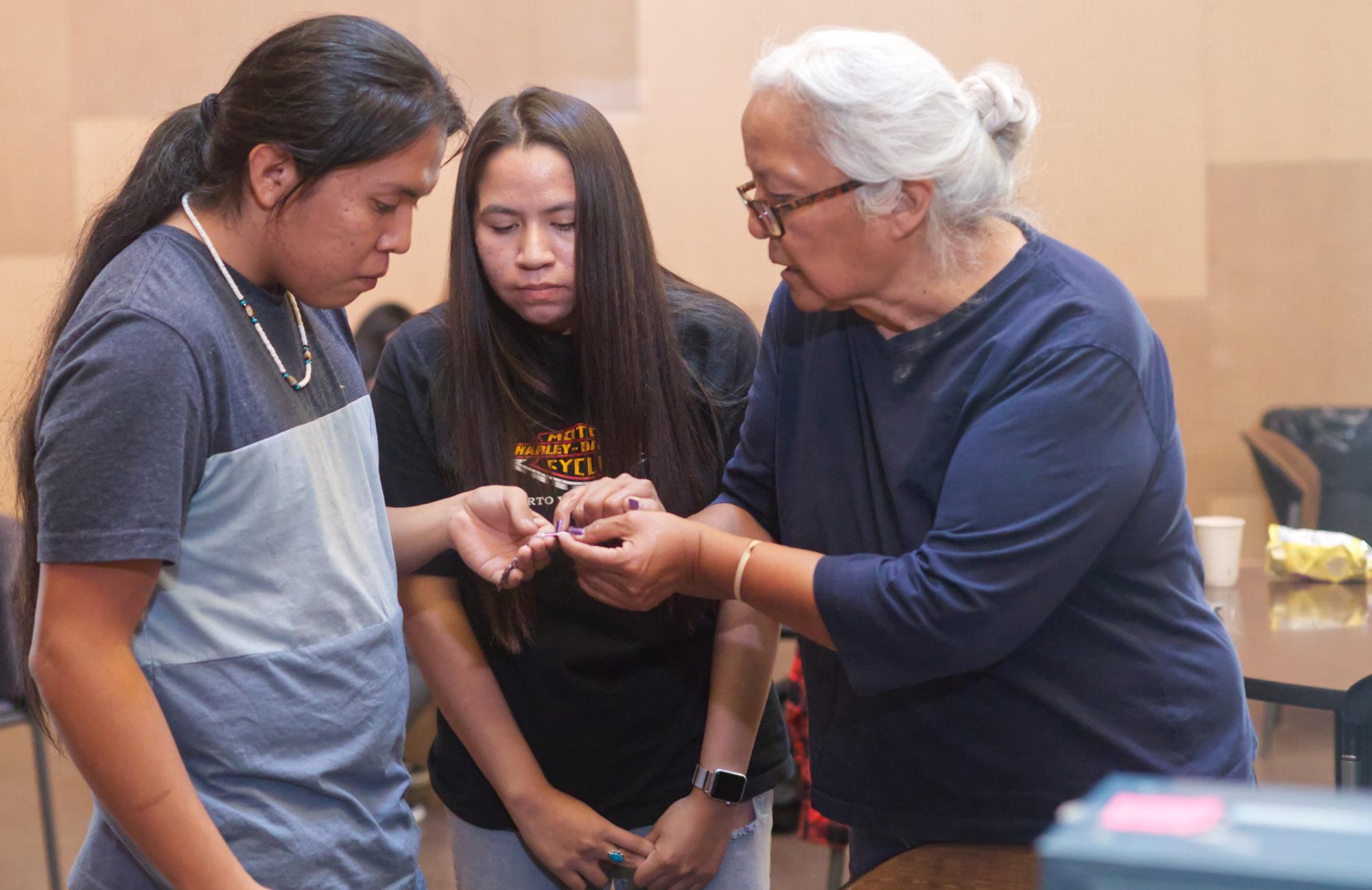
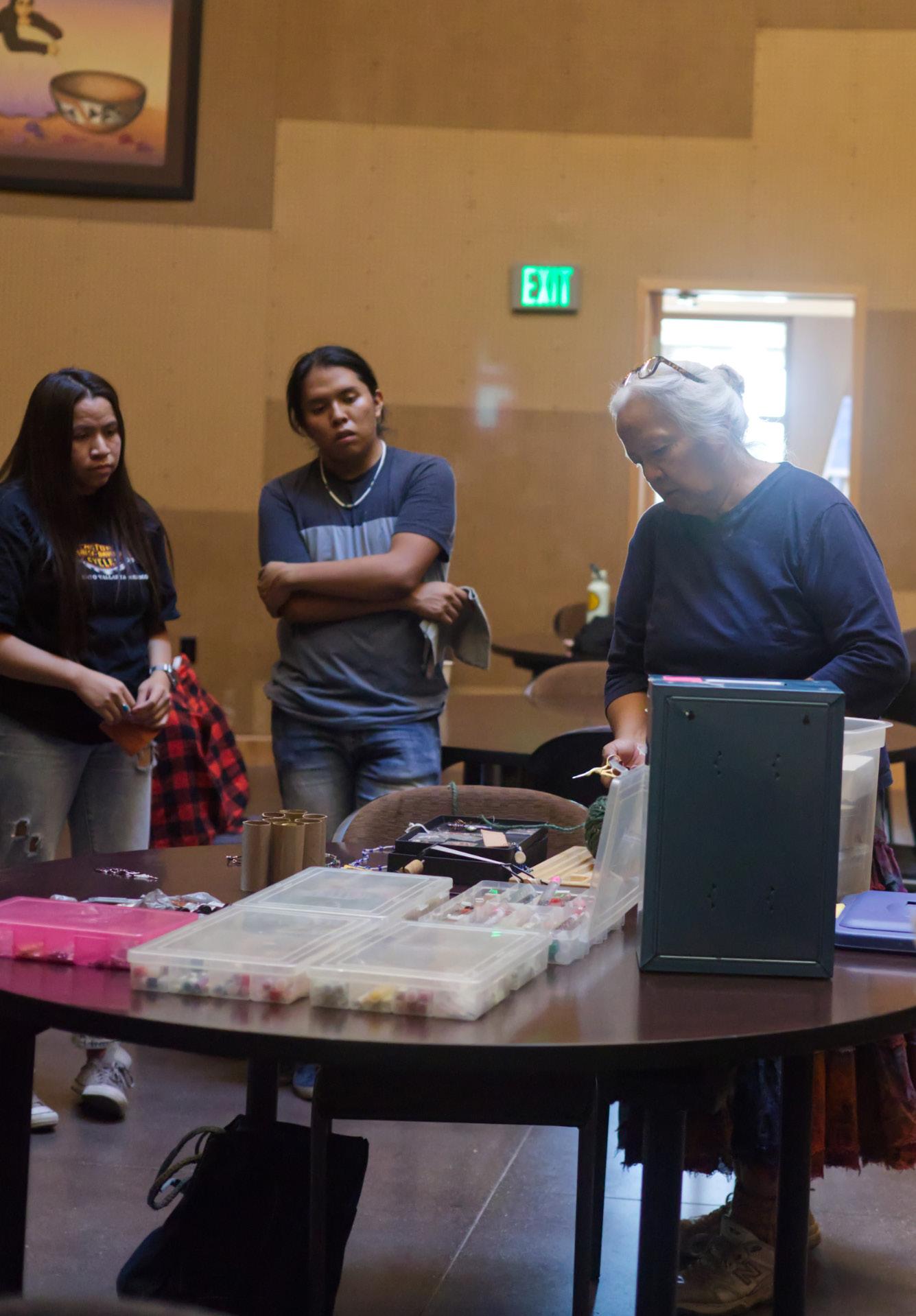
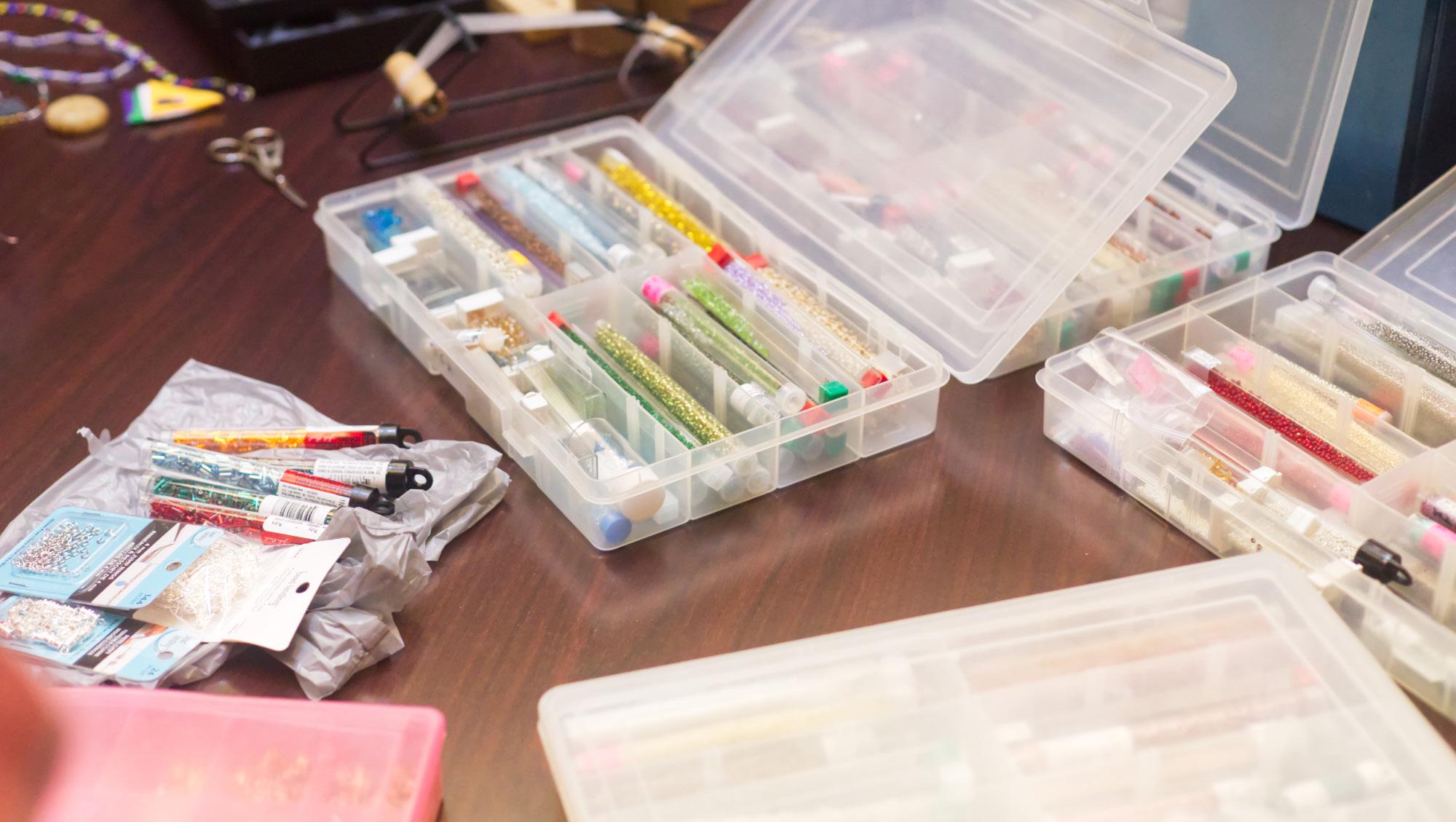


ongtime Phoenix Suns fans have waited for the departure of team owner Robert Sarver. It’s just as much a time of hope as it is a celebration in Phoenix. Sarver purchased the Suns and WNBA’s Phoenix Mercury in 2004 for $401 million, a record purchase at the time for an NBA franchise. Now, amid allegations of racism and misogyny against Sarver from sources within the team, the franchise is expected to sell for more than $3 billion, according to Baxter Holmes and Ramona Shelborne of ESPN. These reports came after Sarver’s announcement Sept. 21 that he has begun the process of selling the Suns and Mercury. If the price comes to fruition, then it would be the highest figure ever for an NBA franchise.
The sale of the franchise does relieve any further distractions for both the franchise and NBA. It also means an uncertain future for the Suns — although, it is a future the organization and fans are willing to explore after Sarver’s reported misconduct.
One of the major takeaways from the reports concerning Sarver was the uncomfortable workplace environment surrounding the organization. With a new ownership group pending, this could mean that Phoenix may avoid the red flag that might have been if Sarver decided not to sell.
Several NBA players came out against Sarver and his alleged conduct, including Suns guard Chris Paul. Paul was also a member of the Los Angeles Clippers when then-owner Donald Sterling was forced to sell following similar behavior. The Suns have more than likely avoided a similar scenario that the Clippers found themselves in, where several players voiced their disapproval of the team’s ownership and refused to sign with the organization. It can be argued that perhaps this has been the situation in Phoenix for as long as Sarver has been the owner.
With fresh faces in Phoenix, there is a possibility that highercaliber NBA stars may see Phoenix as a destination in free agency. Most notably, Kevin Durant voiced his desire to play in Phoenix, though it was before any reports of Sarver selling the team. Acquiring a player of Durant’s caliber would be a rarity for the Suns. Apart from Durant, there is the likelihood that a new era in Phoenix could entice other NBA stars to join the team. This could make for an important step up for a team that was two games short of a championship in 2021. Phoenix is still a fairly young team, but recent NBA champions have shown that it pays to have veteran players under contract.
Football:
Sat Oct. 8: vs Cal Poly, W 31-29
Sat Oct. 15: @ UC Davis, 4 p.m.
Soccer:
Sun Oct. 9: vs Idaho, W 1-0
AU golf is three tournaments into its 2022-2023 season, looking to recapture its success from last year in which the Lumberjacks won the Big Sky Golf Championship
NAU is led by head coach Brad Bedortha, who is in his 15th full season with the Lumberjacks after arriving in the spring of 2008. NAU has the most golf titles of any Big Sky school over that tenure with four championships, and Bedortha has been named Big Sky coach of the year in each of those four seasons. He has 19 tournament victories with NAU.
Last season, NAU broke school records in scoring average and par-or-better rounds. The Lumberjacks also had an average tournament placing of 6.5 with an average round finish of 6.4.
Four of NAU’s seven golfers are returners to the team. Fifth-year players Alexsandra Chekalina and Ashley Croft rank fifth and sixth respectively in program history in scoring average and both have been named to four Big Sky all-conference teams. Chekalina has been named to the third team three times and to the second team once. Croft has one second-team appearance, two third-team appearances and an honorable mention.
Senior Lorel Hayward is not just the only player from Arizona but the lone player from the United States on the team. Hayward placed topfive in the Big Sky Championship in 2022. Most of the team hails from either Russia or England.

Junior Ekaterina Malakhova is second in program history with a 74.75 scoring average. She has been named to the all-conference first team in back-to-back seasons and was the individual winner of last season’s Big Sky Championship, after shooting 5-under for the three round tournament.
NAU brought in three freshmen ahead of this season. Nina Lukyanenko from Moscow, Russia, Lizzie Neale from Nelson, New Zealand and Ellena Slater from Kent, England. Lukyanenko tied for fifth at last year’s amateur Russian

championships. Neale and Slater tied for the same score in each of the first three tournaments of the season.
NAU opened the season on Sept. 18 at the Coeur D’Alene Resort Collegiate Invitational in Coeur D’Alene, Idaho. The Lumberjacks placed 13th at 41-over. Chekalina shot the best round of the tournament for the Lumberjacks, finishing with a second round 68 on the par-71 course. Slater and Neale both shot 13-over to tie for 56th place.
At the Golfweek Red Sky Classic in late September, NAU placed 11th with a team score of 23-over. Chekalina, Neale and Slater all finished at 222 and tied for 32nd. Slater finished with the best individual round out of any of the Lumberjacks, by shooting two-under in her third round.
Last weekend at the Ron Moore Intercollegiate, NAU tied for ninth place, with a score of 15over through three rounds on the par-72 course. Neale and Slater led NAU, both shooting 3-over, which tied for 25th place. Hayward shot 4-over and Chekalina shot 5-over. Malakhova struggled in the first round and finished the tournament 23-over.
On Oct. 23-25, NAU will host its first tournament of the season with ‘The Clash at Boulder Creek’ in Boulder City, Nevada. It’s the final outing of the fall stretch for the Lumberjacks as their efforts will be turned toward the spring season following the tournament. NAU placed 12th at the event in 2021.
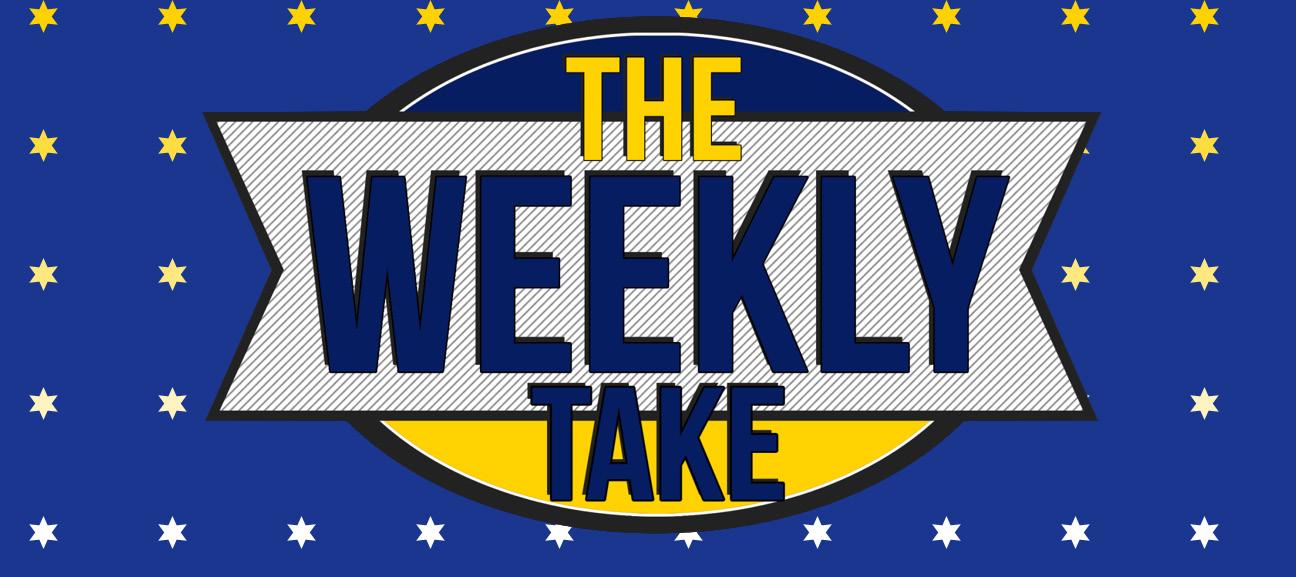
Following Boulder Creek, the Lumberjacks will return to action at the Mountain Classic Match Play in Palm Desert, California in February. Rolling through the rest of its spring schedule, every tournament will be in Arizona for NAU, including the Big Sky Championship in April. NAU will also host one more tournament, the Red Rocks Invitational in Sedona, on March 18-19, 2023.
NAU will look to close out its fall schedule strong as it builds toward repeating its success from last season.
Thu Oct. 6: vs Eastern Washington, W 2-0
Thurs Oct. 13: @ Northern Colorado, 6 p.m.
Sun Oct. 16: @ Montana, 11 a.m.
Volleyball:
Sat Oct. 8: vs Northern Colorado, W 3-2
Thurs Oct. 13: @ Montana, 6 p.m.
Sat Oct. 15: @ Montana State, 12 p.m.
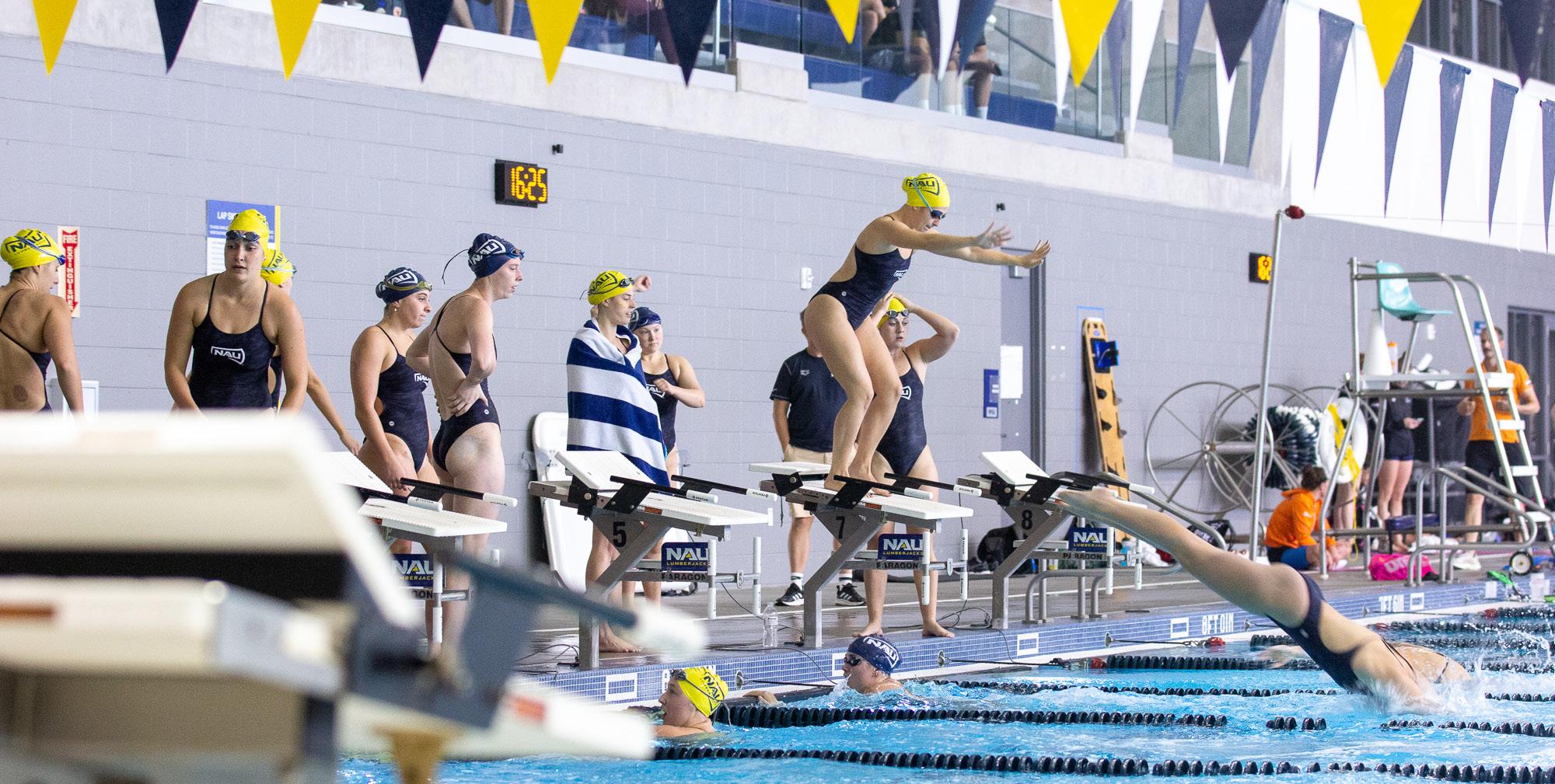

NAU swim and dive hosted its 40th annual Blue vs. Gold meet, an intrasquad meet where team members compete against each other for bragging rights and glory. The Gold team came out on top in the last event, winning it 55-49.
Highlighted by diving breaks after each event, the Lumberjacks showcased all the talent that the 15-time conference champions are known for. NAU is looking forward to the season ahead and is looking to win an unprecedented 10th straight Western Athletic Conference title, a streak that began in 2014.
The Dutch National Swim Team was training, which was training simultaneously to the meet, got a chance to compete in exhibition events as well. Many of the NAU swimmers cheered them on as if they were Lumberjack teammates themselves.

NAU is not without its own foreign talent. Spanish swimmer Helena RoblaAlvarez, who is in her sophomore season, is the lone member who is not from the United States. Most of the team is from the Phoenix area and Arizona. Two divers this year, Grace and Margaret Wesche, twin sisters and freshmen from Flagstaff High School, add to the talent pool.
“It is kind of exciting to see that I’m the only person from Spain that has the opportunity to swim for this team,” Robla-Alvarez said.
The NAU team has had rock-solid leadership over the years, in large part because of head swimming coach Andy Johns, who has been with the program since 1996 after arriving from Clemson. On the diving side, Nikki Kelsey is right alongside Johns in her 27th season.
Both coaches said they have seen quite a bit of talent pass through the program and are very optimistic about this year’s chances of competing.
“They were all outstanding. I’m excited about where we’re at,” Johns said. “We’ll see in the next two weeks, then the next two after, we’re taking it two weeks at a time.”
The meet itself was close at first, due to the competitive nature of both teams. That was until the Gold team went 1-2 in 3-meter diving and pulled away to a 3931 lead. The Gold team held on to that lead, which ended up being 47-41 with two events to go.
In the penultimate event, the Blue team took a one-point lead at 49-48 after senior Hayley Mayhew posted a 1:46.58 time in the 150-yard breaststroke. The winner of the meet came down to the final event, the 200-yard relay.
Mayhew had a breakout season last year, winning her first WAC gold medal at the championships in the 200-yard breaststroke, as well as putting up career-best times in the 200-yard individual medley as well as the 100-yard breaststroke.
At the beginning of this last event, the two teams were neck and neck, and neither team was making that extra pull to be in the lead. Halfway through the second lap, however, the Gold team performed a flip turn that put them in a great spot to win. That victory was sealed soon after and there was celebration on the deck by all, not only the Gold team.
The final score was 55-49 in favor of Gold, but the fun did not end there. The diving squad split up and conducted its own relay race after the final event.
“To be honest this was one of our best Blue and Golds already, I mean our team is big and has a lot of talent and I’m really excited for this year,” Kelsey said.
The Lumberjacks will get a chance to display their talent against Ottawa University, Arizona Christian and WAC opponent Idaho when they host their first meet of the season at the Wall Aquatic Center Oct. 21. After this event, NAU will compete multiple times away from Flagstaff before coming back for the first of two Lumberjack Swimming Invitationals on Nov. 17-19.
Fans of the team will be sure to pay extra attention to the freshman class this year, and how they mold into the winning culture that both Johns and Kelsey have developed. If the team comes together how the coaches have envisioned, then NAU swim and dive will contend for a 10th straight conference title.
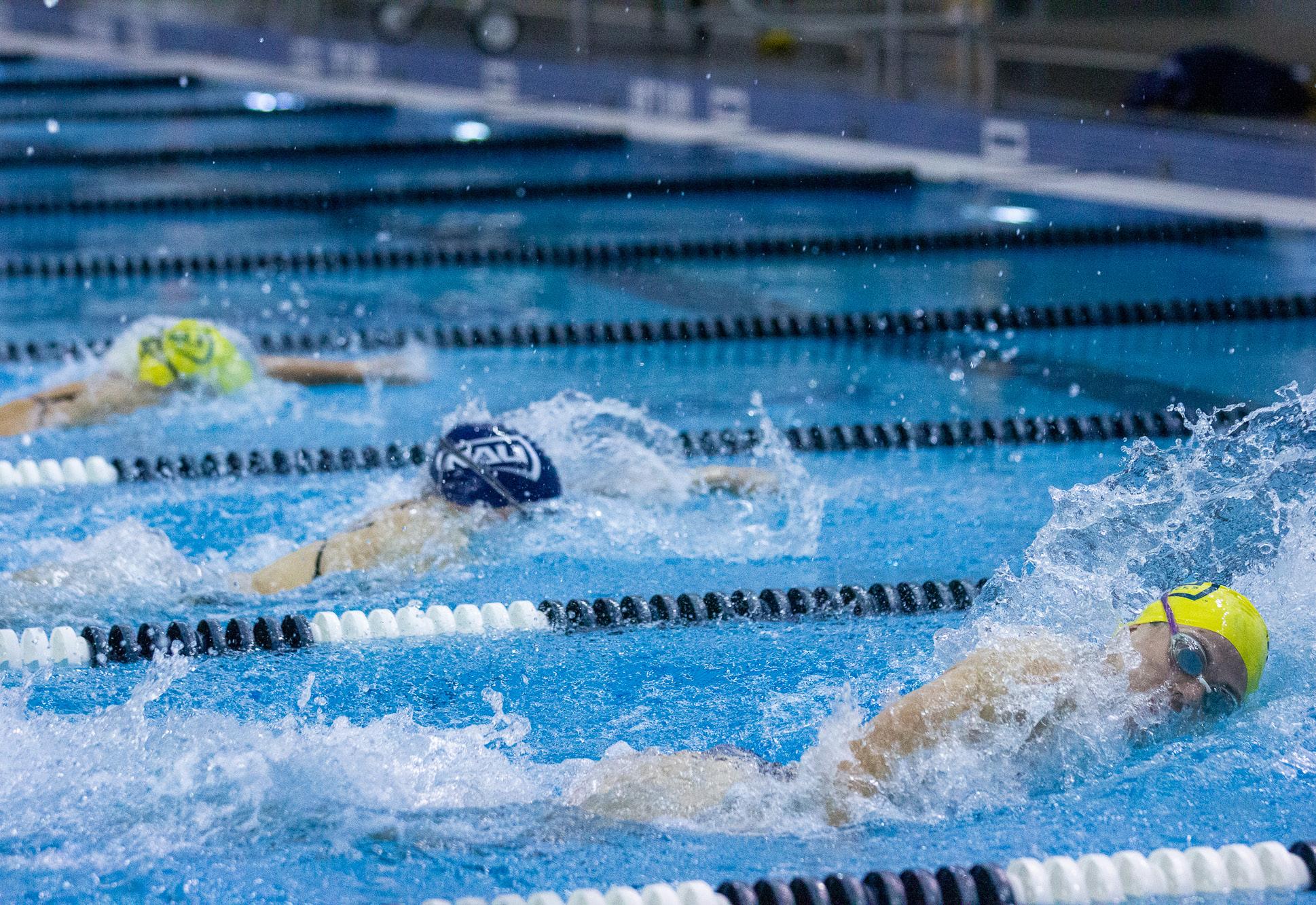
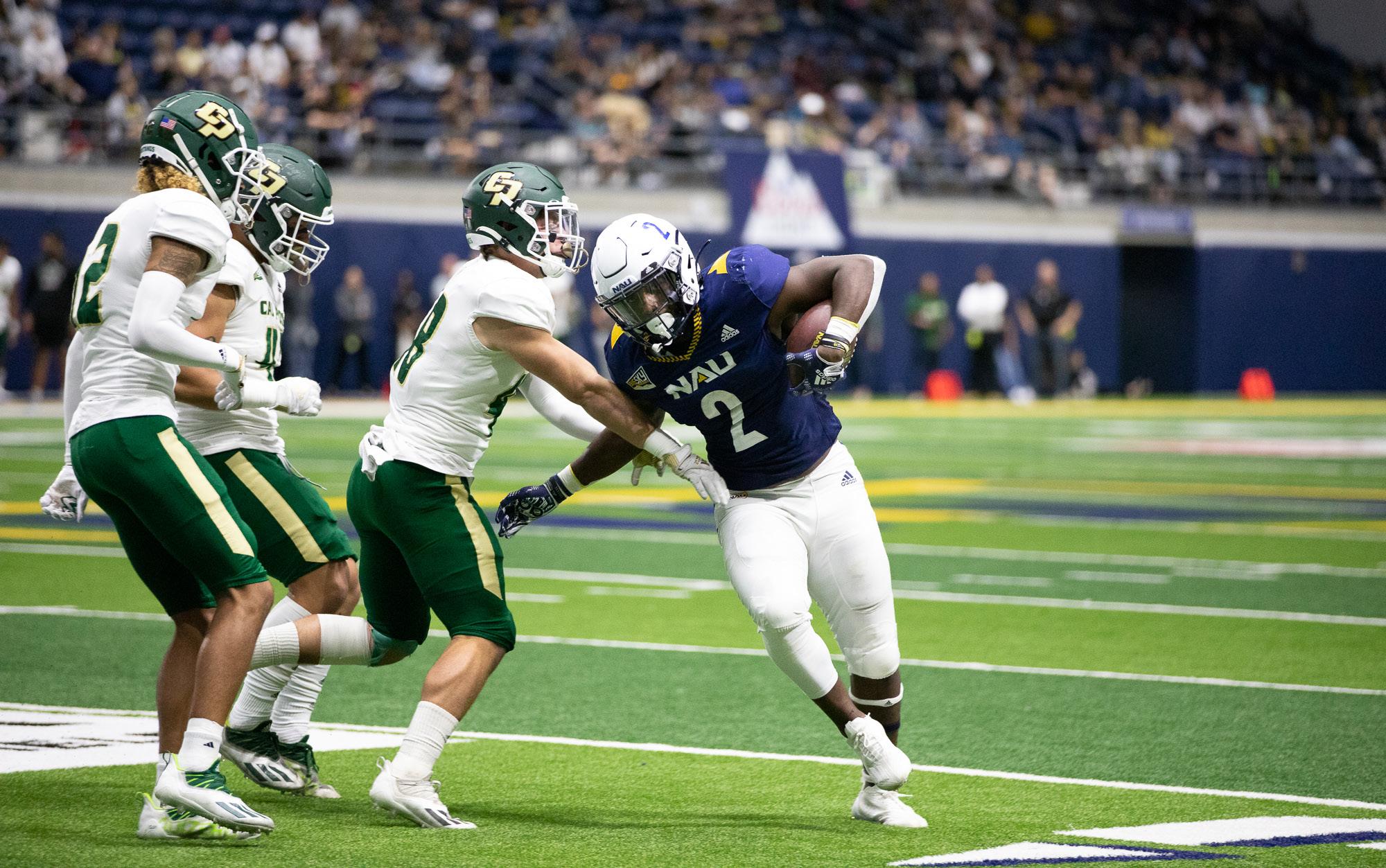
NAU football beat Cal Poly 31-29 on Saturday, claiming its first conference win of the season. NAU is now 2-4 overall and 1-2 in the Big Sky going into the final five games of the season. Cal Poly falls to 1-4 and is now 0-2 in conference play.
The game was decided in the final two minutes off the foot of NAU redshirt sophomore kicker Collin Robbins, who drilled a 40-yard field goal to give NAU its final lead of the game.
“It was just amazing to do it at home,” Robbins said. “I kind of knew down to the wire that it was going to come to that. I knew once they got into field goal range that they were going to make that field goal. But I trusted RJ and I knew the offense would go back down [the field] and that we were going to get that opportunity. I told my holder and snapper, ‘just be ready for [a] game-winner’ and I trusted them. It was awesome.”
It was a shootout throughout as neither team’s defense was able to make a stop until the moment mattered near the end of the game. Both quarterbacks had over 350 passing yards and each had three touchdown passes. NAU had over 100 rushing yards and Cal Poly had 91. Both teams only averaged 3.3 yards rushing on the day.
The score came down to two missed two-point conversions by Cal Poly and NAU picking off Cal Poly junior quarterback Spencer Brasch twice, though NAU retained just one of those interceptions after fumbling on an interception return. Brasch still led the game in passing yards with 374.
NAU junior defensive lineman Eloi Kwete got to Brasch twice and now has 11 career sacks. He is tied for seventh most in school history with Siupeli Anau, who played from 2014-2016. Kwete passed Tim Wilkinson and Zach McDonnell who both played in the early-to-mid 2010s.
Sophomore quarterback RJ Martinez finished 31-for-45 passing with 358 yards and three touchdown passes. Martinez also snuck in once for a score for a total of four touchdowns on the day.
Sophomore running back Draycen Hall had a big day offensively going for 130 combined rushing and receiving yards. He averaged over 7 yards per touch in the game.
NAU had three receivers with more than 80 yards. Redshirt junior receiver Jamal Glaspie caught eight passes for 86 yards and a touchdown. Sophomore tight end Isaiah Gerena had six receptions for 84 yards. To round it out, junior wide receiver Hendrix Johnson hauled in four passes for 89 yards including the game’s longest play, a 73-yard touchdown.
“We have a lot of playmakers at that position, both wideout and running back, also at tight end with Isaiah and Alishawuan [Taylor],” Martinez said. “You know that’s my job, my job is to distribute the ball to those playmakers and we did that at a high level today.”
Johnson is now 12th on NAU’s all-time receiving yardage list with 1,892 yards, now behind 1990’s receiver Hendricks Johnson by 58 yards for 11th place. Johnson jumped Ify Umodu who played from 2010-2014 and Jerry Davis who played in the 1980s. Johnson is also two receptions away from tying Umodu for top-10 all-time receptions in school history.
Graduate receiver Stacy Chukwumezie had five receptions for 38 yards. He
Cal Poly started the game with possession, and on third down kept its opening drive alive with a big 44-yard reception from graduate receiver Chris Coleman. Sophomore running back Adam Garwood gained 25 yards on back-to-back touches and scored the game’s first points. Cal Poly reached into its bag of tricks, lining up with its offensive line outside the hashes with just the center in. However, NAU forced an incompletion on the unconventional pass play during a two-point conversion attempt and Cal Poly led just 6-0.
Garwood finished with a game-high 86 rushing yards with one touchdown. He also had 55 receiving yards on four receptions.
On NAU’s first possession, it picked up its initial first down on the ground before moving the ball methodically through the air for the remainder of the drive. Two-pass completions to Hall gained 46 yards and gave the Lumberjacks its first touchdown.
“I think offensively really just the past few weeks, we’d get off to a really good start,” Martinez said. “Whether it’s the first or second drive we’d just go down there and score. So for us, it was really more about finishing our drives and coming away with points when we get into the red zone.”
NAU forced Cal Poly to punt after it picked up one first down on its second drive.
NAU moved the ball effectively through the air again on its next drive. A 27yard catch by Gerena moved the Lumberjacks into Cal Poly territory, and a 3-yard quick pass to Glaspie gave the Lumberjacks their second passing touchdown of the game. NAU’s offense finished the first quarter with 128 passing yards.
“[Having Gerena more involved] is going to mean a lot for our passing game,” Martinez said. “Obviously he’s an explosive player, he can both run and block. Being able to have him in the passing game is really going to help us because we’re normally in 11 personnel anyways so having him as a viable option to throw the ball to on third down or whenever we need to will obviously help our offense. I think getting him going the past few games has really helped his confidence and helped our offense moving forward.”
Eloi Kwete came up with a third-down sack to force a three-and-out for the Lumberjack defense on the next drive.
Cal Poly’s defense forced its own three-and-out, sacking Martinez twice on the ensuing drive.
Coleman helped Cal Poly get its offense moving again with a 34-yard reception. Shortly after Coleman hauled in another grab, this time for 23 yards and a touchdown. Cal Poly converted on the extra point attempt to draw within one of the Lumberjacks, 14-13.
Coleman finished with a game-high 118 receiving yards on five catches with one touchdown.
A huge hit on Martinez was called targeting against Cal Poly’s redshirt senior defensive back Dylan Wyatt and moved the chains for the Lumberjacks. Glaspie appeared to have his second touchdown of the game on a long ball but the play was called back to the Lumberjacks’ side of the field due to a holding penalty and the NAU drive stalled out.
Neither team got anything going in the second quarter until Cal Poly began driving late in the half. Beginning on its own 42-yard line, Cal Poly methodically moved down the field and on the 10th play of the drive scored on a 15-yard touchdown reception in the back of the endzone by freshman tight end Josh Cuevas. The extra point put the Mustangs up 20-14.
NAU’s offense got rolling for the first time in the second quarter on its next drive, starting with gains of 10 and 15 through the air on the first two plays of the drive. Hall moved the Lumberjacks deep into Cal Poly territory with a massive 54yard rush through the middle of the field. NAU was faced with a fourth and inches on the two-yard line but elected to go for it with a quarterback sneak and picked up the first. They rushed back to the line and punched the ball in with another sneak to take a lead with 18 seconds remaining in the first half.
At halftime, NAU led 21-20. Hall had over 100 all-purpose yards in the half with 113.
On the first drive of the second half, Martinez connected with Johnson on the second play for a 73-yard touchdown to put the Lumberjacks up 28-20.
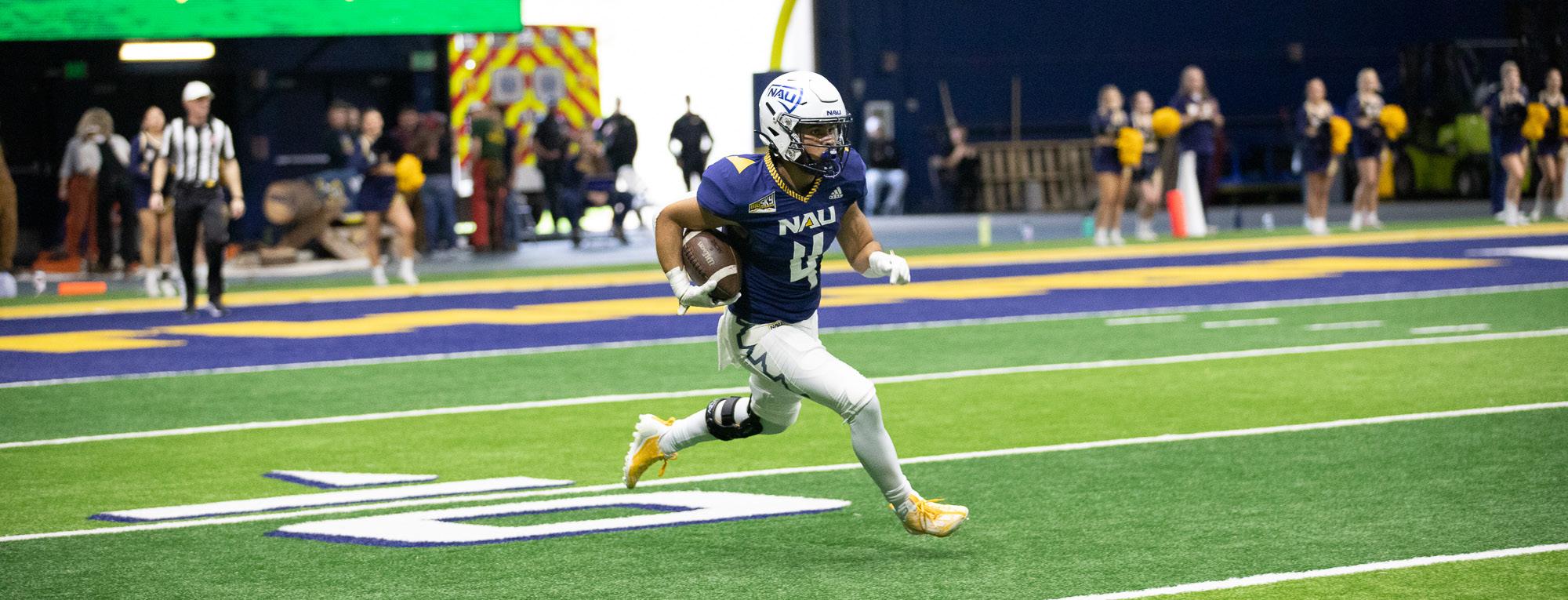
Cal Poly looked like it was putting a drive together following a ticky-tack pass interference penalty against the Lumberjacks. On the next play, Alonzo Davis stepped in front of a screen pass and recorded the Lumberjacks’ second interception of the season.
The Lumberjacks moved the ball to Cal Poly’s side of the field on its next drive, but Robbins’ 49-yard field goal attempt was no good.
NAU picked off another Cal Poly pass on the next drive but a fumble on the return was recovered by Cal Poly, setting the Mustangs up with a fresh set of downs but backed up from where they had managed to march to on the drive.
Cal Poly got to move the ball again, driving into the red zone with three doubledigit yardage passing plays. NAU’s defense got a sack near the goal line to force a third and goal from the five-yard line. NAU’s defense forced an incompletion, and Cal Poly elected to take the field goal to avoid needing the two-point conversion. Cal Poly missed the short attempt and remained down eight with 2:49 left in the third quarter.
The third quarter ended with NAU leading 28-20.
Cal Poly scored on a 31-yard reception for Cuevas’ second touchdown of the
game with 7:16 remaining in the game. He finished with eight receptions for 93 yards with two touchdowns.
However, the Mustangs came up short on their two-point conversion attempt after a strong tackle in the flat by redshirt senior defensive back Morgan Vest, keeping the Lumberjacks in the lead by two.
“Pandemonium,” head coach Chris Ball said when describing the sideline following the two-point conversion stop. “Crazy, lot of great energy down there today.”
However, on the Lumberjacks’ next drive, Gerena got up-ended and lost the ball after his shoulder made contact with the ground.

NAU’s defense gave up a big run 23-yard run on the first play of the drive but held Cal Poly to just a field goal attempt from 27 yards out. The Mustangs converted the attempt to take a 29-28 lead with 4:18 remaining in the game.
The Lumberjacks got the ball out of their own end on the next drive as Glaspie got past the defense and hauled in a 41-yard pass on the sideline.
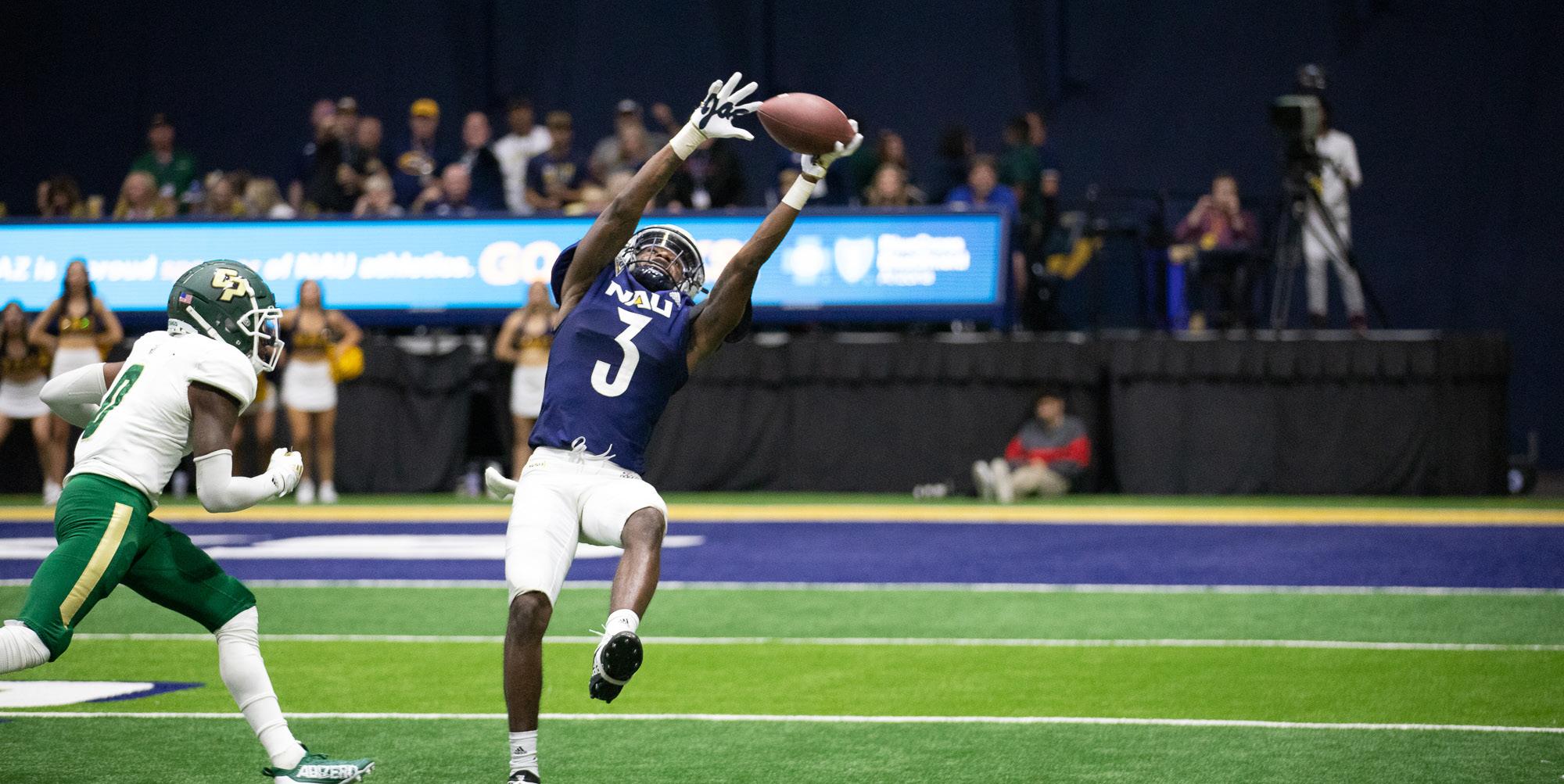
Cal Poly forced a fourth down on the 23-yard line setting up the Lumberjacks with a 40-yard field goal attempt with 1:32 remaining in the game. Robbins converted the game-winning kick, putting NAU back up by two, 31-29.
The Mustangs looked like they had fumbled on a big run near midfield, however, the runner was ruled down before the fumble.
Cal Poly faced a fourth and 10 on the NAU 40-yard line, but the Lumberjack defense forced an incompletion, forcing a turnover on downs.
Martinez kneeled out the game with a 31-29 victory.
“All wins are great,” Ball said. “It doesn’t matter who you play, it is hard to win, it is really, really hard to win games. Anytime you can win, it doesn’t matter who you beat. It makes a big difference in your confidence and your program. This was a big, big win. We needed this one to get back on track.”
It was NAU’s first win at home since beating Southern Utah on Oct. 16. last season. The Lumberjacks were on a four-game home losing skid.
NAU’s next two games are on the road, the first at UC Davis next Saturday at 4 p.m., and at Idaho State the following week. The Lumberjacks’ next home game will be on Homecoming Weekend on Nov. 5. against Montana State. Kickoff is at 1 p.m. at Findlay Toyota Field inside the J. Lawrence Walkup Skydome.

